![]()
![]()
![]()
Including Afro-Brazilian
Group & Last Name Index to Full History:
A B C D E F G H I J K L M N O P Q R S T U V W X Y Z
Tracks are listed in chronological order by year, then alphabetically.
Listings do not reflect proper order by month or day: later oft precedes earlier.
Find on Page = F3. Not on this page? See history tree below.
Featured on this page loosely in order of first recording if not record release (as possible).
Names are alphabetical, not chronological, per year:
|
Caveats in the employment of this page: 1. It descends in chronological
order by the year the artist or band is first found on a commercial record
issue (ideally) by year only, alphabetical thereat. One musician above
another doesn't necessarily translate to earlier issue unless the year
changed. 2. Though release dates are the aim with links to YouTube, some
are recording dates and may not be everywhere clearly distinguished. 3.
Reissues are used to represent originals without much discussion. |
||
This page addresses Latin recording in South America.
Though not exclusively, Brazil, which predominant language is Portuguese, is where the larger portion of this page takes place.
One notable exception coming to mind is the development of the tango in Argentina (said to spring from earlier African, Cuban and Spanish streams). Brazil is where major styles such as the samba developed, hosts the annual Carnival
concerning which music is more elemental than its extraordinary floats, and holds a huge
entertainment industry on scale alike that in the United States. Also occupying a major portion of this page is MPB or,
Brazilian Popular Music, developing from samba and bossa nova, sparking in the democratic movement opposed
to Brazil's military regime of 1964-85. Like popular music in the States,
which has no such political origins, MPB isn't jazz; it's aligned with
Brazilian folk music and Brazilian recording prior to the military coup of
'64. But there's no absolute or proper barrier between. Brazil is a big
place of wide variety with a music industry highly populated with prominent
names. Not all Latin
jazz connected with South America is on this page. Such as bossa nova (:
Stan Getz et al), etc., are sprinkled
elsewhere. Relevant history at Britannica;
Jazz Piano;
Piero Scaruffi;
Paul Swanson; Wikipedia:
1,
2.
See also 'Bossa Nova' by Ruy Castro (Chicago Review Press 2012). Good
sources for lyrics for this page in Portuguese are Cifra Club, Letras and
Vagalume.Early Latin RecordingLong preceding such as Getz who put Brazil on the musical map in the United States, the roots of Latin recording in South America were in the tango of Argentina [1, 2, 3, 4, 5, 6, 7, 8, 9, 10, 11, 12], the southern hemisphere's version of the waltz in ballroom dance. The first tango composition is generally given as 'Dame La Lata (Give Me My Tin)', circa 1880, by Juan Pérez. The first tango sheet music published, though not recorded, was 'El Entreriano' by Rosendo Mendizabal in 1897. (A much later recording of 'El Entreriano' below.) The first tango recorded is said to be 'El Choclo' in 1905 by Angel Villoldo. That recording isn't found, the much later rendition below by the Orquesta Tipica on a date unknown. Also find below the oddity of a tango titled 'La Rumba' by the Victor Military Band, by American composer, James Tim Brymn (1874-1946). Above information thanks to Vamos a Guarachar.Rosendo Mendizabal Composition: 1897 Early tango Arrangement and piano: Jorge Rodolfo Altmann 2012 Angel Villoldo Composition: 1905 Early tango Later rendition by the Orquesta Tipica on date unknown Juan Pacho Maglio 1912 Early tango Composition: Maglio Victor Military Band 1913 Early tango Composition: James Tim Brymn Roberto Firpo 1916 Early tango Composition: José Luis Padula Francisco Canaro 1919 Early tango Composition: Eduardo Pereyra Osvaldo Fresedo 1927 Early tango Composition: Eduardo Pereyra José María Rizzuti
|
||
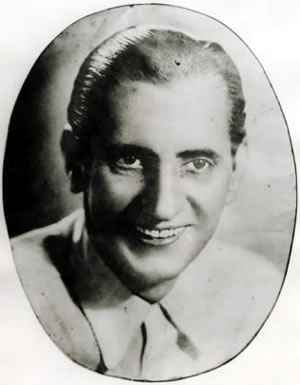 Francisco Alves Source: Ubiritan Lustoso |
Born in 1898 in Rio de Janeiro,
Brazil, Portuguese samba guitarist and singer,
Francisco Alves, is one a few other
vocalists on this page whose recording was directly tied to Carnival. His
father ran a bar. A tenor and baritone, Alves was twenty when he began
singing professionally with the theatre companies, John of God and Martins
Chaves. Among the titles he recorded in 1919 were 'O Pé de Anjo' (march), 'Fala
Meu Louro' (samba), 'Alivia Estes Olhos' (samba) and 'Pelo Telefone'
(samba), for the new label, Popular. 'O Pé de Anjo' won Carnival the next
year. He worked in theatre the next several years before recording again in
1924. Between 1928 and 1932 he recorded as Chico Viola. Alves began
performing for a number of radio stations in 1929, eventually to settle with
Rádio Nacional in 1941 with which he would remain until 1952. In 1933 Alves
saw his music used in film for the first time per 'Voz do Carnaval'. He
himself first appeared in films per 'Alô Alô Brasil' in 1935 and 'Alô, Alô Carnival' in 1936.
The latter's
soundtrack was issued in 1936 also featuring
Carmen Miranda. Alves continued with
film into the forties as he recorded prolifically, nearly a thousand titles
on 78s until his death in an auto accident on 27 September 1952. Of the 132
compositions originally credited to him, some number of them seem to have
been purchased, or so it was later discovered. Howsoever, during the three
decades of his career Alves became one of the largest names in early
Latin recording. References: 1,
2,
3,
4,
5.
Sessions.
Catalogs: 1,
2,
3,
4,
5,
6.
Compilations: 'Canta Brasil!' on Revivendo RVCD-100
issued 1996.
IMDb.
Biblio. Francisco Alves 1919 Composition: José Barbosa da Silva (aka Sinhô) Composition: José Barbosa da Silva (aka Sinhô) Composition: José Barbosa da Silva (aka Sinhô) Francisco Alves 1928 Composition: Freire Junior Francisco Alves 1934 Composition: Alves/Ary Barroso Composition: Alves/Orestes Barbosa Francisco Alves 1935 'It Was Her' Composition: Ary Barroso Composition: Ary Borroso/Roberto Lamartine Babo Francisco Alves 1936 Composition: Roberto Martins/Valdemar Silva Francisco Alves 1937 Composition: Saint-Clair Sena Composition: Roberto Lamartine Babo Francisco Alves 1939 ('Brazil') Composition: Ary Barroso Composition: Felisberto Silva/Rubens Soares Francisco Alves 1941 Composition: Alberto Dominguez Roberto Lamartine Babo Francisco Alves 1943 Waltz Composition: Alcyr Pires Vermelho Pedro Caetano Francisco Alves 1946 Composition: Mario Lago Composition: Gastão Vianna/Jorge Faraj Francisco Alves 1947 Composition: Herivelto Martins Composition: Dorival Caymmi Composition: Herivelto Martins/Benedito Lacerda Francisco Alves 1949 Composition: Herivelto Martins/Benedito Lacerda Francisco Alves 1951 Carnival march Composition: David Nasser Joaquim Antonio Candeias Junior 'Invitation to Samba' Composition: Denis Brean/Oswaldo Guilherme Composition: Alves/José Roy Composition: Alves/Luiz Iglésias Francisco Alves 1952 Singing baritone Composition: Freire Junior
|
|
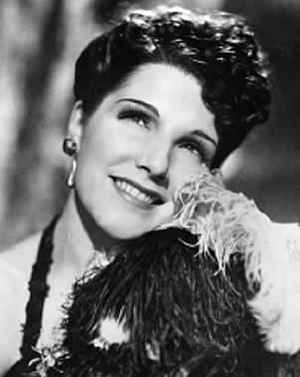 Libertad Lamarque Photo: Archivo/El Universal Source: Cultura Ya |
Born in Rosario, Santa Fe,
Argentina on 24 November 1908, tango and popular vocalist,
Libertad Lamarque, was among the
biggest names in Latin film and television, also releasing a firm number of
recordings. She was named Libertad because her father was an imprisoned
anarchist at the time of her her birth. Having won a stage competition at
age seven, she later joined a group of street singers to tour regionally.
Her first professional role was in the stage show, 'Madre Tierra' in 1923.
She was such a popular local performer that she gained the attention of a
journalist who recommended her to the National Theatre in Buenos Aires. Her
family didn't only support her career. They moved to Buenos Aires to be with
her even before she'd been hired, which she was, her debut in 'La Muchacha
de Montmartre' as a choir singer. She was soon singing for Radio Prieto,
then to record 'Gaucho Sol' and 'Chilenito' in the summer of 1926 toward Victor
79711. 'The
Telegraph' [Obit 3] and Todo Tango [Ref 8] have her getting paid a flat fee
of 150 pesos for that. She signed on
to some thousand performances of 'El Conventillo de la Paloma ('The Tenement
of the Dove')' in 1929, then toured Argentina and Paraguay as a singer
accompanied by a trio of guitarists. Her first appearance in film is thought
to have been 'Adiós, Argentina' released in 1930. That was a silent film
with a soundtrack. Her next film, released in 1932, was '¡Tango!'. Its
significance to recording was that it was the first sound motion picture in
Argentina. But the most significant thing to Lamarque was her want to die in
1935 upon jumping from a hotel window in Chile, her fall broken by awning.
Grinding onward, she decided to tour Cuba in 1946. Hugely popular there, she
performed at the Municipal Amphitheatre in Havana for 20,000 fans, then
appeared at Carnegie Hall in New York City the next year. Perhaps that tour
presented language problems, for it's said she turned down film offers from
Hollywood for inability to speak English. Mexico, on the other hand, was a
melting pot like the United States when it came to absorbing Latin
musicians. Lemarque made two films that were released in 1947 in Mexico,
'Gran Casino' and 'Soledad', then decided to stay there. One reason may have
been that Mexico's film industry was technologically advanced beyond
Argentina's. After a string of films Lemargue toured about the Caribbean and
South America in the fifties, also recording a number of albums in Cuba. The
sixties found her back in Argentina making films. Her first role in a soap
opera was in Venezuela in 1972 on the program, 'Esmeralda'. (Soap operas,
incidentally, began to appear on radio in the States in the early thirties.
They were sponsored by soap manufacturers like Colgate-Palmolive, Lever
Brothers and Procter & Gamble.) From the latter seventies through the
nineties Lemarque added various awards to her resume, also publishing her
autobiography, 'Libertad Lamarque', in Spanish in Buenos Aires in 1986
(Javier Vergara Publishing). She died in Mexico
City on 12 December 2000 [obits: 1,
2,
3]. Together with numerous appearances in theatre, Lemarque
had made 21 films in Argentina, 45 in Mexico and one in Spain. She had
starred in six soap operas and recorded more than 800 songs. References:
1,
2,
3,
4,
5,
6,
7,
8
(alt).
Sessions: DAHR.
Catalogs: 1,
2,
3,
4,
5,
6
7.
Genres of music
performed by Lamarque.
Filmographies: 1,
2,
3.
IA.
Website tribute.
Further
reading: Ernesto Lechner;
Josefina Ortega;
Marcela Valente.
Other profiles: 1,
2,
3,
4. Most of the
earlier recordings below are tangos. Of note in 1963 is Lamarque's LP,
'Tangos Inmortales'. Libertad Lamarque 1926 Composition: Agustín Irusta Libertad Lamarque 1929 Music: José D. Pecora Lyrics: Luis Rubistein Libertad Lamarque 1930 Music: Narciso Fernández Boixader José Ruiz de Azagra Lyrics: Juan Durán-Vila Note: DAHR has it recorded on an unknown date in fall of 1929 unconfirmed. A more specific date of 13 Nov 1929 is proffered at unsiglodelibertad. Discogs has it issued in 1930 on Victor 47199. Libertad Lamarque 1930 Composition: Manuel Font y de Anta Libertad Lamarque 1931 Music: Pedro Vettori Lyrics: Libertad Lamarque Composition: Sebastián Yradier Libertad Lamarque 1934 Composition: Francisco Lomuto Libertad Lamarque 1938 Composition: Francisco Canaro/Luis Amadori Libertad Lamarque 1943 "The Day You Love Me' Composition: Enrique Santos Discépolo Mariano Mores Film: 'El Fin de la Noche' Libertad Lamarque 1955 "The Day You Love Me' Composition: Carlos Gardel Film: 'Musica de Siempre' Libertad Lamarque 1956 Composition: Eliseo Grenet Film: 'Bodas de Oro' ('Golden Weddings') Libertad Lamarque 1963 LP: Victor MK L/S 1484 Mexico Libertad Lamarque 1969 Composition: Juan Carlos Cobián Film: 'El Hijo Pródigo'
|
|
|
Elsie Houston Photo: Carl Van Vechten Source: Famosos Que Partiram
|
An apt example of early Brazilian
recording is
Elsie Houston. The first
Brazilian musician to perform abroad was flautist, Pixinguiha, with the band,
Os Oito Batutas, venturing to Paris in 1922. But not until Houston did Brazilian
music really acquire international status. Born in Rio de Janeiro in 1902, Houston
came from a family of plantation owners who had traded the United States for
Brazil after the Civil War (confederados). Her father, however, was a dentist.
Houston studied voice internationally, first in Germany, then Argentina, then
Paris. Being something financially advantaged, Houston kept artistic society
with such as composer, Heitor Villa-Lobos, and various painters, her husband
for a brief period the poet, Benjamin Péret. Houston's first performance was
in 1926 at a Paris solon hosted by Marguerite and Raoul d'Harcourt. Her first
public engagement was a year later, also in Paris, at the Salle Gaveau, with
pianist, Villa-Lobos. Houston made her first recordings with Villa-Lobos in
1928 for French HMV (His Master's Voice), four short tunes titled 'Desejo',
'Na paz do outono', 'Realejo' and 'Estrela do céu é lua nova'. (Those are available
as the initial four tracks on the album, 'Elsie Houston: Queen of Brazilian
Song'.) Her next recordings were for Columbia in Brazil in 1930. Upon her husband, Péret, being expelled from Brazil, she followed him back to Paris where she
laid more tracks for French HMV in 1933. Back in Brazil in 1935, she returned
to Paris, now separated from Péret (never divorced), before migrating to New
York City in 1937. There she remained to the end of her career, appearing in
all variety of venues from cabarets to private gatherings to stadiums, as well
as radio. Howsoever, disappointment as to her career, financial difficulties
and romantic complications are all mentioned as possibilities in the equation
to her suicide on 20 Feb 1943 at age forty. References: 1,
2,
3,
4,
5,
6.
Sessions (3).
Catalogs: 1,
2,
3,
4.
Compilations: 'Elsie Houston: Queen of Brazilian Song' 1928-41 by Marston 51011-2:
1,
2.
Other profiles: 1,
2.
Elsie Houston 1930 Composition: Folk traditional Adaptation: Ari Kerner (Ari Kerner Veiga de Castro) ('Push the Melon Nightingale') ('Push the Melon Little Bird') Composition: Folk traditional Music: Lilico Leal Lyrics: J. da Paulicéia Composition: Ari Kerner Composition: Maria Amélia Barros Elsie Houston 1932 Composition: Pedro da Conceição Elsie Houston 1941 Composition: Heitor Villa-Lobos
|
|
|
Ary Barroso was a samba
composer and pianist born in 1903 in Ubá, Minas Geraisl, Brazil, to spend a
large portion of his life writing for film and television. He began
training at the keyboard at age 10 and began his career in theaters, playing
piano for silent films. An inheritance in 1921 saw him moving to Rio de
Janeiro to study law. He had completed law school the year after compositions
by him were first issued on record in December 1928. The one was the samba, of which
he authored above 160, 'Vou à
Penha', issued by Odeon and performed by another major name in Latin
recording, Mario Reis, with the Orchestra Pan American. The other was the
samba, 'Tu Queres Muito', issued by Parlaphon and performed by Artur Castro
with the Simão Nacional Orquestra. The first song he composed for dancer,
Carmen Miranda, who would become a
close friend, was 'O Nêgo no Samba' which
Miranda recorded on 14 Dec 1929 for
release the next year by Victor. Barroso composed all the titles on the
Miranda compilation released in 2007 by EMI,
'Carmen Sings Ary Barroso'. In 1930 Barroso won Carnival with 'Dá
Nela'. Barroso began working in radio in 1933 and would move onward to film
and television scores, notably for Walt Disney whom he
first met in 1941
when Disney was on Good Neighbor tour to Brazil for the U.S. State Dept. In 1953
Barroso organized a show orchestra which he took on tour to Venezuela and Mexico, that resulting
in the album, 'Fantasia Carioca: Sambas Baiaos', perhaps issued in 1954 [1,
2].
'Encontro com Ary' (Copacabana CLP
3060), an album of piano solos, followed in 1955/56 [1,
2]. Barroso had a
second career as a soccer commentator, that game his major preoccupation beyond
music. Having resided in Rio de Janeiro his entire adult
life, Barroso there passed away of liver cirrhosis on 9
February 1964. Other vocalists with whom he worked include
Orlando Silva and Candido Botelho. References: 1,
2,
3,
4,
5,
6.
Sessions.
Catalogs: 1,
2,
3,
4,
5.
Compilations: 'Brazil: Compositions 1930-1942'
on Harlequin HQ CD 151 in 2000; 'Ary Barroso Songbook: Brazil 1930-1942' by Master Classics
in 2013. Filmographies: 1,
2.
Lyrics.
IA.
Biblio: 'No Tempo de Ari Barroso' by Sergio Cabral (Lumiar Editora 1993 Rio de Janeiro).
Further reading: Arthur de Faria;
Daniella Thomson.
Other profiles: 1,
2. Ary Barroso 1928 Mário Reis Composition: Barroso Ary Barroso 1929 Francisco Alves Composition: Barroso Mário Reis Composition: Barroso Ary Barroso 1930 Carnival suite by various 1930 (2 comps by Barroso) Ary Barroso 1939 'Watercolor of Brazil' Francisco Alves Piano: Ary Barroso All comps by Barroso Ary Barroso 1941 Odette Amaral Composition: Barroso Cândido Botelho Music: Barroso Lyrics: Luiz Peixoto Cândido Botelho Composition: Barroso Ary Barroso 1944 Nestor Amaral Ary Barroso 1952 Aurora Miranda Composition: Barroso Ary Barroso 1958 Ary Barroso e Sua Orquestra Composition: Barroso
|
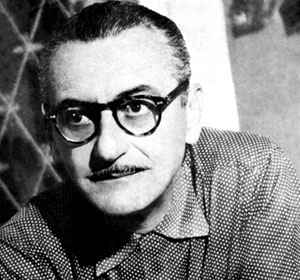 Ary Barroso Source: Radio Music Star |
|
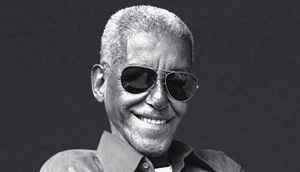 Cartola Source: Geledes |
Cartola (Angenor de Oliveira
aka Top Hat), became
important to early Latin recording and samba music in relation to the samba
school [1,
2,
3,
4,
5,
5,
5,
6,
7],
some 200 of which now compete at Carnival each year. Top Hat was
born Angenor de Oliveira in Rio de Janeiro, Brazil, in 1908. Upon the death
of his mother he dropped out of school, age fifteen. It's told he picked up
the name, Top Hat (Cartola), because he wore a bowler to keep his hair clean
as a construction worker. In 1928 he helped form the street band,
Arengueiros Carnival Bloco, the malandragem elemental in some of the sambas
they performed. Malandragem is the theme of the anti-hero in Brazilian film,
literature and music. That band would soon evolve into the Grêmio Recreativo
Escola de Samba Mangueira, an important samba school that would win Carnival
sixteen times. (The first competition between schools was in 1929.) Their
first parade in 1928 saw the first performance of a Cartola composition, 'Chega
de Demanda' ('Enough Fighting'). In 1929 Cartola recorded 'Que Infeliz Sorte'
('Unhappy that Lucky') with
Francisco Alves. In 1998 the CD, 'O Sol
Nascera' was released, containing that track along with a relatively short
catalogue of Cartola to 1978. Cartola came to great popularity in the
thirties, due much to his daughter, Creusa, singing his sambas for radio.
His first recordings as a vocalist were released in 1942 on a box set of 78s
titled, 'Columbia Presents: Native Brazilian Music by Leopold Stokowski'. He
then became a ghost, leaving the music business. It isn't known why, but
grieving the death of his wife, Deolinda, coupled with a case of meningitis,
present themselves. He was rediscovered working at a car wash, if not as a
doorman, in 1956 by journalist, Sérgio Porto. He then resumed his career by
radio at Rádio Mayrink Veiga. In 1963 Cartola opened the Zicartola
bar/restaurant in Rio de Janeiro with Eugênio Agostine and wife Dona Zica, a
major hub for samba and bossa nova. Not until 1974 did Cartola issue his
first album, 'Cartola'. He was enjoying a successful career when he died in
Rio de Janeiro on 30 November 1980. References: 1,
2,
3,
4,
5.
Catalogs: 1,
2,
3,
4,
5.
IMDb.
IA.
Poetry.
Other profiles: 1,
2,
3. Cartola 1929 With Francisco Alves Odeon 10519-A Composition: Cartola Cartola 1933 With Francisco Alves Odeon 10977-B Composition: Cartola Cartola 1941 With Ataulpho Alves Odeon 12106-B Composition: Cartola- Bide (Alcebíades Barcellos) Cartola 1974 Album Cartola 1976 Album Cartola 1982 Album Posthumous
|
|
|
Noel Rosa was born in Rio
de Janeiro in 1910 to a pair of forceps that disfigured his chin. He began
playing mandolin at age thirteen, then guitar, as a teenager. While
preparing to study medicine Rosa hung out in bars with other samba
musicians, forming the group, Bando de Tangarás, with Almirante (Admiral) in 1929. Rosa and his
group recorded 'Mulher Exigente', 'Galo Garnizé' and 'Anedotas'
in May that year. Those were all compositions by Almirante, one of the
members of his band, Rosa presented his own first composition, 'Minha
Viola', the next July while playing at the Tijuca Tenis Clube where his
band, not yet professional, performed for free as elsewhere. Rosa recorded
his second composition, 'Festa No Céu?', in 1930. He entered medical school
in 1931 but that wouldn't last long, Rosa releasing more than twenty titles
in 1930 which quickly distinguished him, especially as a lyracist. Among
those titles that year were ''Com que roupa?'/'Malandro medroso' and 'Festa
no céu'/'Minha viola' ('What Clothes?'/'Fearful Trickster' and 'Party in the
Sky'/'My Viola'). He began working in radio in 1932. Rosa's health began
notably deteriorating of tuberculosis in the early thirties. But when he was
supposed to be resting he was out at nightclubs instead. He married in 1934,
weighed less than a hundred pounds in 1935.
Rosa's compositions began appearing in film in 1936, such as the movies 'Alô,
Alô, Carnaval' and 'Cidade Mulher'. But tuberculosis laid Rosa down in May
of 1937. During a career not a decade long he yet managed to become one of
Brazil's most important musicians with a prolific catalogue. A rather pricy
($200) box set of 14 CD discs titled 'Noel Pela Primeira Vez' was released
in 2000/02 and '07 containing 229 Rosa recordings
[*].
References: 1,
2,
3,
4.
Sessions.
Catalogs: 1,
2,
3,
4.
Lyrics w composing credits *.
Compilations: 'Noel por Noel' Imperial IMP 30.205 (1971): 1,
2;
'Songbook: Noel Rosa' Lumiar 100.211/100.212 (1991): 1,
2. Biblio: 1,
2.
Other profiles:
1,
2.
Rosa composed all titles below except as noted. Bando de Tangarás 1929 Composition/Vocal: Almirante (Admiral) Odeon 10439-B 'Demanding Woman' Composition/Vocal: Almirante (Admiral) Noel Rosa 1930 'What Clothes?' With the Bando Regional Parlophon 13245 A 'Stutter in Love' 'Fearful Trickster' Noel Rosa 1931 'Best Regards' With the Bando de Tangarás Unissued version Noel Rosa 1932 'Indigestible Woman' With the Seven Devils Noel Rosa 1935
|
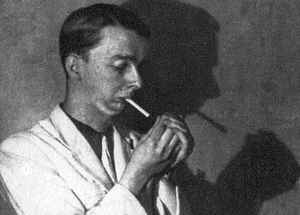 Noel Rosa Source: Radio Batuta |
|
|
Garoto was born Anibal
Augusto Sardinha in 1915 in Sau Paulo. He was eleven when his violinist
brother gave him the first of a variety of strings he would play, a banjo.
His brother also christened him with Molech de Banjo for a stage name, but
he settled for Boy (Garoto). Garoto trained in classical guitar and piano as
a youth. His first recordings in 1929, were with his
mentor, the singer, Paraguassu, not thought to have been released. The
next year he began working in radio and recorded 'Bichinho-de-queijo' with 'Driblando'.
Among his compositions in the thirties were 'Sore' and 'Moreninha' in 1936,
and 'Sobre o Mar' and 'Quinze de Julho' two years later. Accordion player,
Arnaldo Meirelles, recorded two of his compositions in June of 1938, 'Suspirando'
and 'Saudadas', for release on Victor 34441. Not until 1938 did
Garoto move from Sao Paulo to Rio de Janeiro, the greater
musical hub some 270 miles up the coast. He there formed a duet, Cordas
Quentes (Hot Strings), to record with
Laurindo Almeida. 'Dá-me tuas mãos'
and 'Música, maestro, por favor' went down as duets on 12 Sep 1939 toward
release on Victor 34516. In 1939 Garoto
headed for Uruguay, then joined
Carmen Miranda in the United States. He
worked with Miranda for eight months, including an engagement at the White
House for President Roosevelt, then returned to Rio de Janeiro where,
preceding bossa nova, he became master of the choro [1,
2,
3,
4,
5] and chorinho (little
choro). The choro (cry or lament) was the tropical metropolitan sound in
Brazil until jazz came along to fuse with samba, creating bossa nova.
In 1951 he formed the Trio Surdina w
Fafa Lemos and Chiquinho
do Acordeon (Acordiom) [1,
2,
3].
That ensemble released four albums on Musicdisc before dissolving in 1954:
'Trio Surdina', 'Trio Surdina & Leo Peracchi: Ary Barroso', 'Trio Surdina
Interpreta Noel Rosa e Dorival Caymmi' and 'Trio Surdina'. Garoto had
spent the last fifteen years of his life in Rio, dying just as bossa nova
was being developed on 3 May 1955. Garoto had recorded six albums with his
contemporary, pianist,
Carolina Cardoso de Menezes.
References for Garoto: 1,
2,
3.
Catalogs: 1,
2,
3,
4.
Compilations: 'Viva Garoto - Gravações Originais' 1992/93: 1,
2.
Further reading: 1,
2,
3.
References for the Trio Surdina: 1,
2;
discos: 1,
2,
3,
4. Garoto composed all titles below except as indicated. Garoto 1936 Columbia 8223-B Garoto 1946 Garoto 1950 Waltz Garoto 1951 Abismo de Rosas (Abyss of Roses) Composition: Canhoto (Americo Jacomino) Composition: Mário Gennari Filho Odeon 13240
|
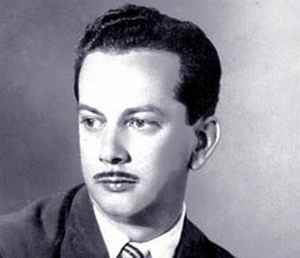 Garoto Source: Zonacurva |
|
|
|
Carmen Miranda was born Maria do Carmo Miranda da Cunha in
1909 in Marco de Canaveses, Portugal, to bring samba to the world, though
largely via the United States. She was a close contemporary of Mexican film
star, Dolores del Rio, who also did some dancing in film ('Bird of
Paradise', 'In Caliente'), and whose career was built in the States. As for
Miranda, she got transported to Brazil as a young child with her family, her
father in the produce business, later to run a barbershop. Miranda herself
learned to make hats at a boutique where she worked, and owned her own
business selling hats while young, said to be successful. Her father was an
opera fan emphatically against his daughter pursuing a career in show
business. Miranda nevertheless sang at such as parties and festivals. She
appeared in her first film before sound, 'A Esposa do Solteiro', in 1926,
that since lost. It was when she came
to the attention of composer and guitarist, Josué de Barros, that Miranda
acquired her first record contract with the German label, Brunswick, in
1929. Brunswick, however, delayed issuing those recordings, Miranda
meanwhile signing up with RCA, again with Barros' assistance. (De Barros,
born in 1888, had recorded the polka, 'Explorer', for Columbia in 1910, he
well-seasoned in the early music industry by the time he met Miranda.) Her earliest recordings were therefore
released by both labels, those by RCA first (January 1930), and getting the
attention, those by Brunswick briefly afterward, going largely wayside.
Miranda's most popular title overall, 'Pra Voce Gostar de Mim (Tahi)', had
been issued in 1930. Miranda
then began singing for Rádio Mayrink Veiga in her home city of Rio de Janeiro.
Her film debut occurred in 1933 with 'A Voz Do Carnaval', a documentary. Her
first feature film, 'Alô, Alô Brasil', followed two years later. Miranda's love
affair with hats was initially portrayed in the 1939 film, 'Banana-da-Terra'.
It was also 1939 when Miranda visited Broadway, the Brazilian government (President
Vargas at the that time) paying the fares for her band. In addition to starring
on Broadway ('The Streets of Paris'), she met President Franklin Roosevelt and
sang for radio. (Government was a big factor in Miranda's early success, due
President Roosevelt's Good Neighbor Policy concerning Latin American nations.
Miranda was received as a cultural ambassador.) Miranda's first Hollywood contract
followed the next year, with 20th Century Fox, she appearing in 'Down Argentine
Way'. Upon returning to Brazil that year Miranda was booed from the stage as
an Americanized sellout. She left Brazil for fourteen years after that. The
film, 'Down Argentine Way' was banned from Argentina for being everything but
Argentine. She received much the same treatment in Cuba upon release of the
film, 'Weekend in Havana', the next year, the press finding little Cuban about
the film. 'Springtime in the Rockies' premiered in Nov 1942 in which Miranda
appeared w Betty Grable and Harry
James. Come the film, 'The Gang's All Here', in '43 w the
Benny Goodman Orchestra. By 1945
Miranda was both the highest paid entertainer and highest
taxed female in America, earning over $200,000 that year. In 1947 she herself
produced the film, 'Copacabana', in which she starred with Groucho Marx. During
the latter forties she also continued to work in nightclubs, recording with
the Andrews Sisters as well. By 1953 Miranda was exhausted to degree of collapse.
She sought electroshock treatment due to depression. As that failed she returned
to Brazil in 1954 to recuperate. Back in the States in 1955, she worked in Las
Vegas, then toured in Cuba. Her final performance was in August that year with
Jimmy Durante on 'The Jimmy Durante Show'. She was ill to at one
point be knelt to gather herself, but performed anyway,
then died of heart attack the next day at her home in Beverly Hills on 5
August [obits: 1,
2,
3,
4]. About 60,000
people attended her funeral in Rio de Janeiro. Altogether, Miranda was no purist,
her music much embellished beyond tangos and such. Mixing musical styles,
she also more represented Latin in general than Brazil. Her great flamboyance (salsa,
if you like) was another of the things Latin press found distasteful, but which,
with her flaring energy, Americans loved, particularly Chiquita, as, to quote
one of Miranda's songs, 'Bananas Is My Business'. References: 1,
2,
3,
4,
5,
6,
7.
Sessions: DAHR.
Catalogs: 1,
2,
3,
4,
5.
Filmographies: 1,
2.
On Broadway (1940/43).
On radio
(1942-56).
Documentaries: 'Bananas Is My Business' by Helena Solberg 1996: 1,
2,
3.
Further reading: archives:
1939,
1984,
1988;
Fernando Balieiro;
Gabriela Medrano;
Gary Morris;
Lulu Garcia-Navarro;
Larry Rohter;
Tropicalia;
Andrew Vargas.
Biblio: 'Brazilian Bombshell' by Martha Gil-Montero (Donald I. Fine 1989); 'Carmen' by Ruy Castro (Companhia das Letras 2005):
1,
2,
3;
'Creating Carmen Miranda' by Kathryn Bishop-Sanchez (Vanderbilt U Press 2016) *.
Collections.
Other profiles *.
Carmen Miranda 1930 DAHR: 12/5/1929 unconfirmed Rio de Janeiro Victor 33249 Composition: Josué de Barros Composition: Randoval Montenegro Composition: André Filho Composition: Joubert de Carvalho Composition: Joubert de Carvalho Composition: Josué de Barros Carmen Miranda 1939 Composition: Dorival Caymmi Film: 'Banana-da-Terra' Carmen Miranda 1940 Composition: Ary Barroso Film: 'Down Argentine Way' With Garoto Composition: 1937: Vicente Paiva/Jararaca Film: 'Down Argentine Way' Carmen Miranda 1941 Composition: Roberto Martins Film: 'That Night in Rio' Music: Harry Warren Lyrics English: Mack Gordon Lyrics Portuguese: Aloysio de Oliveira Film: 'That Night in Rio' I, Yi, Yi, Yi, Yi (I Like You Very Much) Music: Harry Warren Lyrics: Mack Gordon Film: 'That Night in Rio' Music: Aloysio De Oliveira/Nestor Amaral Lyrics: Francisco Eugênio Brant Horta Film: 'Weekend in Havana' Music: Harry Warren Lyrics: Mack Gordon Film: 'Weekend in Havana' Carmen Miranda 1942 Music: Harry Warren Lyrics: Mack Gordon Composition: 1937: Alcyr Pires Red/Walfrido Silva Carmen Miranda 1943 The Lady in the Tutti Frutti Hat Music: Harry Warren Lyrics: Leo Robin Film: 'The Gang's All Here' Carmen Miranda 1944 Music: Nacio Herb Brown Lyrics: Leo Robin Film: 'Greenwich Village' Carmen Miranda 1947 Composition: 1917: Zequinha de Abreu Film: 'Copacabana' Composition: Nestor Amaral Cartoon: 'Slick Hare' Carmen Miranda 1948 Aka 'Cooking with Glass' Film: 'A Date With Judy' Music: Ernesto Lecuona Music: Gabriel Ruiz Lyrics: Ray Gilbert Film: 'A Date with Judy' Carmen Miranda 1955 Television broadcast Last performance
|
Carmen Miranda
Source:
Versos de Fogo |
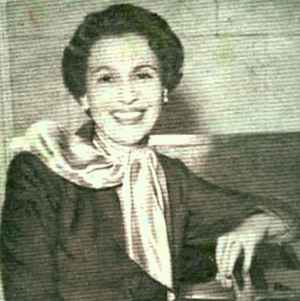 Carolina Cardoso de Menezes |
Born in Rio de Janeiro, Brazil, in 1916, pianist,
Carolina Cardoso de Menezes,
was the contemporary of
Garoto, recording six albums with him.
Along with samba, de Menezes was a choro [1,
2,
3] performer, the tropical
metropolitan beat in Brazil that preceded bossa nova. She trained with several teachers before graduating from the National
Institute of Music to work in radio in 1930. De Menezes issued her first 78 records
in 1931 for Parlophon, compositions her own and by others: 'Good Bye', 'I
Spend' ('Eu Passo'), 'It Was a Dream' ('Foi Um Sonho'), 'She Treats Me Well'
('Ela Me Trata Bem'), 'With Myself' ('Comigo Mesma') and 'Times Gone'
('Tempos Que Se Foram'). De Menezes switched to Odeon Records for releases
in '33 and '34. The labels, Victor, Columbia and Sinter followed, though the
larger portion of her issues were with Odeon in the coming decades. De
Menezes backed other artists in the studio during her career in addition to
a large number of her own name recordings. De Menezes last
studio release is thought to have been the album, 'Preludiando', released in
1997. She died of
natural causes that year on 31 Deecember in Méier, a northern bairro of Rio de Janeiro.
References: 1,
2,
3,
4.
Catalogs: 1,
2,
3,
4
5.
Compositions.
Further reading: Andressa Nathanailidis.
Per 1986 below, the full title of 'The Smiling Woman' is 'The Smiling Woman
Born of Flowers' ('Do Sorriso da Mulher Nasceram as Flores'). Carolina de Menezes 1936 With Jorge Fernandes Carolina de Mimeses 1942 With Garoto Composition: Garoto Carolina de Menezes 1944 With Garoto Carolina de Menezes 1951 Composition: Menezes Transcriptions: 'Moonlight Paqueta' Músic: Freire Junior Lyrics: Hermes Fontes Carolina de Menezes 1953 Carolina de Menezes 1986 Album: 'Os Pianeiros' Full title see above Composition: Eduardo Souto Album: 'Os Pianeiros' Carolina de Menezes 1989 From 'Fafa & Carolina' Violin: Fafá Lemos Composition: Ary Barroso 'Little Pieces of Heaven' Composition:Waldir Azevedo/Miguel Lima Carolina de Menezes 1997 Composition: Eduardo Souto Album: 'Preludiando' Final LP
|
|
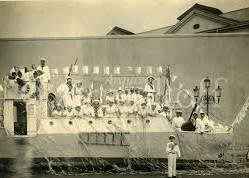 Carnival Float 1920 Photo: brazilcarnival.com Source: Brazil Carnival 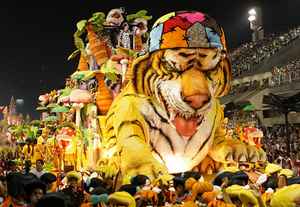 Carnival Float 2010 Photo: Reuters Source: Eirinika |
Among the more significant events in relation to music in
Brazil is the annual
Carnival, that due to its major element, the
samba.
brought to Brazil from Africa via the slave trade. Some or other version of
Carnival is celebrated throughout the world, such as in Germany, Venice and
the Mardis Gras (Fat Tuesday) in New Orleans. Marlene Hufferd traces the
roots of Carnival to to same Roman holiday at the roots of Christmas,
Saturnalia [1,
2,
3,
4,
5,
6,
7,
8,
9,
10,
11,
13,
14], which Roman historian, Titus Livius (Livy), has beginning
sometime in the 5th century BC. Saturn was the god of agriculture.
Saturnailia became a weeklong festivity in 133-31 BC.
Its connection to Carnival is via the Catholic practice of Lent officially
recognized and placed into formal practice by the First Council of Nicaea
in 325 AD [*], two years after Constantine pronounced Christianity to be the
official religion of the Roman Empire, ten years after he had legalized
it [*].
Enter "carne vale" which is "farewell to the meat" in Latin
[1,
2,
3].
Taken across the Atlantic by the Portuguese, the first known reference to Carnival in Brazil is traced to Rio de Janeiro
(which residents are referred to as Cariaoca/s) as
early as 1723 [*] when costume
[1,
2,
3] and masquerade consisted of the poor
donning the clothing of the higher class (royalty) while the latter
exchanged their apparel for rags. Such developed into an event
called the Entrudo, which was three days in which
one might go outside and get hit with wax balls about the size of a lime or
orange filled with water, perfume, urine or flour, the latter if you were
black. It was a manner of practical joking or marking whom one liked,
or whom one didn't, which caused enough fighting to eventually get the
celebration outlawed. The first known Carnival masquerade ball was held by
the aristocracy in 1840 [1,
2] where the price
of attendance precluded trading garments w riffraff. It was circa 1948 that
a shoemaker named Jose Nogueira de Azevedo began marching the streets on Carnival Monday with a
drum, tambourine and whistle, inviting who would to join him (including
slaves - abolished in Brazil in 1888), initiating the
traditional folk parade called Zé Pereira [1,
2,
3,
4]. The aristocracy followed suit
with another exclusive event in the parade of the Grand Societies (Grandes
Sociedades) in 1855 [*] during which
some 80 costumed and masked participants
promenaded the streets w the Emperor of Portugal in attendance. Until the much later introduction of samba the music of
Carnival consisted of such as was popular among the Carioca elite ranging
from tangos, marches, mazurkas, polkas and waltzes to the fado and the
maxixe [*]. The first title written specifically for Carnival was a march
(marcha) composed in 1899 by Chiquinha Gonzaga: 'O Abre Alas' ('Out of
the Way') [*]. Come the major spectacle that is the Carnival float in 1907 upon
the invention of the automobile. Sambas likely got recorded during the first decade of the 20th
century as well (unidentified). Geisa Fernandes has 'At Bahia' recorded in
1913, 'The Viola Is Hurt' in 1914 [*].
Come 'Pelo Telefone' in 1917 on Odeon
121322, recorded by Donga and Mauro Almeida
[1,
2,
3]. That had been composed the
previous year by Donga (Ernesto Maria dos Santos). The samba group, Portela,
was formed in 1923 [1,
2]. It would later become a prominent
samba school. Samba
schools are as elementary to Carnival as samba, as Carnival is a competition
between them, Portela winning the most w 21 victories at last count. It was
1926 when the first samba school originated, Deixa Falar located near
Praca Onze.
Cartola founded his school,
Mangueira, in 1928, the year of the initial samba school showdown at the
home of Zé Espinguela where his school, Conjunto Oswaldo Cruz, whooped the
other two schools in existence at the time, Deixa Falar and
Mangueira. Those schools weren't at that time a part of Carnival or other
street parades in other regions. There were five schools in 1929, to
multiply to 19 by 1932 when a journalist named Mario Filho organized the
first Samba School Parade. The following year the Mayor of Rio made the
beginning of Carnival official by handing a giant key-to-the-city of silver
and gold to King Momo, the Fat King (corresponding to the King of Misrule in
Saternalia). Carnival has since developed into a huge hours-long event
requiring its own Sambadrome as of 1984 designed by architect, Oscar Niemeyer
[1,
2,
3,
4]. There
are currently about 200 samba
schools from various towns in the region of Rio de Janeiro which populate
the Carnival Parade usually held in
February, the warmest month in Brazil. Large schools have wings within
themselves and can parade more than 3000
performers, the top ten of which construct their floats in a huge warehouse
called Cidade do Samba (Samba City) [1,
2]. Though schools are typically from
shantytowns, Carnival seating at the Sambadrome isn't for the poor, ranging
from $55 to $3000 per ticket. The majority of the five million revelers in
2012, however, weren't seated at the Sambadrome, half a million of which
were foreigners. References for Carnival:
academic: *; books: *;
encyclopedias: 1,
2;
histories: 1,
2,
3,
4,
5,
6,
7,
8,
9;
present-day Carnival: 1,
2,
3,
4,
5,
6.
Biblio: 'Carnival!' by Umberto Eco, V. V. Ivanov and Monica Rector (De
Gruyter 2011). References for samba schools:
academic: *;
encyclopedias: 1,
2;
histories: 1,
2,
3,
4,
5;
contemporary samba schools: 1,
2,
3. Carnival - Archives Carnival - Contemporary Samba - Archives
|
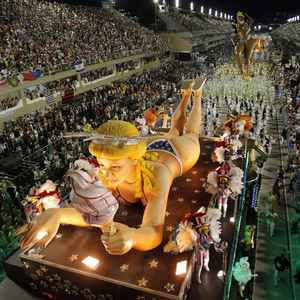 Carnival Float 2013 Photo: EPA/Antonio Lacerda Source: Culture Town |
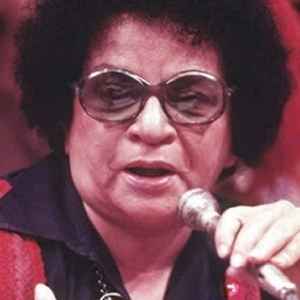 Aracy de Almeida Source: Lira Paulistana |
Born in Rio de Janeiro, Brazil, in 1914,
Aracy de Almeida was an actress
and samba
vocalist, samba being the folk and popular music of Brazil, elemental to Carnival,
before evolving into the popular genre known today as MPB (Música Popular
Brasileira) [1,
2,
3,
4]. Almeida's
father was chief of trains at Brazil Central, her mother a housewife. She is
thought to have begun her professional career circa 1933 singing for radio,
which is how she met
Noel Rosa, instrumental as an early mentor who
would supply her with compositions. De Almeida released her first titles on
78 in January of 1934 for Columbia with Pixinguinha and his Orchestra: 'In
the Midst Folia' (Carnival march) and 'Wrong Stroke'. 'Laughing Child'
(samba) and 'My Longing for Santa' (Carnival march) followed later in
December. De Almeida continued working with
Rosa until his death in 1937, but she would
continue with his sambas on radio and disc through the forties, a champion
of his work amidst her repertoire. De Almeida also appeared in the first of
several films in the forties. She is thought to have been performing at the
Vogue nightclub in Rio de Janeiro when she recorded her first LP for release
in 1950 by the Continental label, titled, 'Noel Rosa', in his honor. It was
about the time of that release that de Almeida moved to Sao Paulo for the
next twelve years. Her next album in '54 was also in
Rosa's honor, though basically a reissue of her
prior with the same title, a couple tracks added. De Almeida put her own
name in big letters below
Rosa's on her 1955 issue of 'Cançoes de Noel Rosa
con Aracy De Almeida' ("cancoes" equals "songs"). 1958 saw the release of
her album, 'O Samba Em Pessôa'. She completed the fifties with the release
of a couple 45 rpm extended plays in 1959, the first featuring the sambas,
'See You There!', 'Santo Forte', 'I Tried' and 'Domingo'; the second
containing Rosa sambas: 'Where Is the Honesty?', 'Sigh', 'You ARE a
Colossus' and 'In the Baile de Lis'. De Almeida began working in television
in the sixties as she divided her concert career between Sao Paulo and Rio
de Janeiro. In 1971 she issued another album of
Rosa compositions, 'Noel Rosa Na Voz de Araci De
Almeida'. She couldn't but remain highly popular until hospitalized from a
pulmonary edema in 1988. In a coma for two months, she revived, but for only
two days, dying that June on the 20th in Rio de Janeiro.
References: academic *;
encyclopedic: 1,
2,
3;
musical: 1,
2,
3.
Sessions 1935-38
(w composers).
Catalogs: 1,
2,
3,
4,
5.
Composers.
IMDb. Aracy de Almeida 1934 'Wrong Stroke' Composition: Francisco Alves 'Child Laughing' Composition: Noel Rosa Aracy de Almeida 1935 'Sad Cuíca' Composition: Noel Rosa Aracy de Almeida 1936 'Unhappy Guess' Composition: Noel Rosa Aracy de Almeida 1937 'Oltimo Desejo' 'Last Wish' Composition: Noel Rosa Aracy de Almeida 1938 Composition: Noel Rosa Aracy de Almeida 1939 'Yellow Shirt' Composition: Ary Barroso Aracy de Almeida 1941 'I Am Not from Here' Composition: Ataulfo Alves/Wilson Batista Aracy de Almeida 1947 'Do Not Tell Me Goodbye' Composition: Luiz Soberano/J.G. da Silva Aracy de Almeida 1948 'I Was Born to Bailar' Composition: Joel de Almeida/Tasiro/Fernando Lobo Aracy de Almeida 1951 'Three Whistles' Composition: Noel Rosa Aracy de Almeida 1955 'Yellow Ribbon' Composition: Noel Rosa Aracy de Almeida 1966 'Spell of the Vila' Composition: Noel Rosa/Vadico Album: 'Samba Asks Passage' Aracy de Almeida 1972 Aracy de Almeida 1975 'Do Not Tell Me Goodbye' Television broadcast Composition: Luiz Soberano/J.G. da Silva
|
|
|
Laurindo Almeida See
Laurindo Almeida. |
||
|
Edmundo Ros See
Edmundo Ros. |
||
| Born in 1914 in Salvador,
guitarist
and vocalist, Dorival Caymmi,
was another contributor to Brazilian bossa nova, and later to MPB (Brazilian
Popular Music). He started teaching himself
guitar in the latter twenties and began playing on Bahia radio circa 1930.
His first recognition was at age sixteen as a composer, writing 'O Que É Que
A Baiana Tem?' ('What Is It About Bahian Women?') for
Carmen Miranda. The
glory was even greater when he later won a pink satin lampshade for a
composition at Carnival. In 1938 he moved to Rio de Janeiro to work for the
newspaper, 'Diários Associados', as a journalist, also appearing regularly
on the radio show, 'Dragão da Rua Larga'. It was
Miranda's performance of 'O Que É Que A Baiana Tem?' in the 1939 film, 'Banana-da-Terra', that saw
Caymmi in demand to compose for film. It was also 1939 that Caymmi began to
appear on records: 'Rainha do Mar'/'Promessa de Pescador' ('Queen of the
Sea'/'Promise of the Fisherman'), 'Roda Pião' ('Top Wheel') and 'O Que É Que
a Baiana Tem?'/'A Preta do Acarajé' ('What Is It About Bahian Women'/'The
Dark Woman from Acarajé'). He continued with radio, working with Radio
Nacional into the forties, recording 'Samba da Minha Terra' ('Samba of My
Homeland') in 1940 and 'A Jangada Voltou Só' ('The Raft Returned Alone') the
next year. The fifties
saw the issue of his first of above twenty albums (LP/EP), 'Canções
Praieiras' (Odeon LDS 3004). His composition, 'Suíte do Pescador', was used in the film, 'The Sandpit
Generals', in 1957. The sixties brought his composition, 'And Roses and
Roses' in 1965 recorded by
Andy Williams and Astrud
Gilberto that year. The seventies brought the Bahia State Order of Merit in
1972 as well as his composition, 'Oração de mãe Menininha' ('Prayer of
Mother Little Girl'), dedicated to Little Girl Mother of Gantois *.
Gal Costa
recorded his
composition, 'Modinha para Gabriela' ('A Little Song for Gabriella') in
1975. In 1984 Caymmi was awarded the Ordre des Arts et des Lettres by
France. Beyond music, Caymmi had been a painter all his life and had practiced the Candomblé religion brought to Brazil by African slaves. Having
composed about a hundred songs, Caymmi died
of kidney cancer and multiple organ failure on 16 August 2008 [obits: 1,
2,
3,
4]. Caymmi was
father to musicians Danilo Caymmi [1,
2,
3,
4], Dori Caymmi (: 'Poesia Musicada' 2011;
'Half Moon Bay' 2012) [1,
2,
3,
4] and MPB vocalist,
Nana Caymmi.
References: 1,
2,
3,
4,
5.
Catalogs: 1,
2,
3,
4,
5,
6,
7.
IMDb.
Documentaries: 'MPB Especial' TV Cultura 2014. Other profiles: 1,
2.
Dorival Caymmi 1939 With Carmen Miranda Composition: Caymmi ('Spinning Wheel') Composition: Caymmi Dorival Caymmi 1954 Album All comps by Caymmi Dorival Caymmi 1955 Album All comps by Caymmi Co-author: Carlos Guinle tracks 1 & 2 Dorival Caymmi 1957 Album All comps by Caymmi Dorival Caymmi 1958 Album with Ary Barroso Comps by Barroso played by Caymmi Comps by Caymmi played by Barosso Dorival Caymmi 1959 Album All comps by Caymmi Dorival Caymmi 1960 Album All comps by Caymmi Dorival Caymmi 1973 Album All comps by Caymmi Co-author: Carlos Guinle tracks 13 & 19 Dorival Caymmi 1977 Duet w Sarah Vaughan Composition: Caymmi/Ray Gilbert Lyrics Portuguese: Caymmi Lyrics English: Gilbert Vaughan LP: 'I Love Brazil!'
|
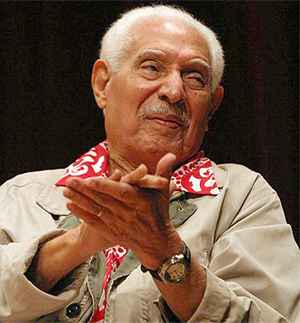 Dorival Caymmi Source: Blog do Gutemberg |
|
| Born in
Sao Paulo, Brazil in 1923,
Isaurinha Garcia (also Isaura), was born to a
father who ran a tavern. Her first experience in the music industry was
singing for Radio Cultura as a child, likewise beginning her career in radio
in 1938 at age fifteen. Garcia is known to have recorded several titles in
1941: 'A Baratinha' ('The Cockroach'), 'Chega de Tanto Amor' ('No More Tango
Amor'), 'Aproveita Beleléu' ('Enjoy Beleléu'), 'O Telefone Está Chamando'
('The Phone Is Calling') and 'Pode Ser' ('Can It Be?). She was a
popular musician in Brazil much as one would have been in the States,
excepting that in Brazil the popular genre meant samba. Garcia recorded her
first LP, 'Sempre Personalíssima', in 1959. She recorded more than 300
titles found on above fifty 78s and ten LPs (not all her own, she issuing
only a few in her name). She died on 30 August 1993 in Sao Paulo upon a career of
concert, film and television appearances. References: 1,
2,
3,
4.
Early sessions.
Discos: 1,
2,
3,
4.
IMDb.
Facebook tribute. Isaurinha Garcia 1941 Composition: Geraldo Pereira/Marino Pinto Isaurinha Garcia 1946 'Message' Composition: Aldo Cabral/Cícero Nunes Isaurinha Garcia 1950 With Hervê Cordovil Composition: Hervê Cordovil/Mariza P. Coelho Isaurinha Garcia 1951 Composition: Klécius Caldas/Armando Cavalcanti Isaurinha Garcia 1959 From 'Sempre Personalíssima': 'Handshake' Composition: Horondino Silva (Dino) Jaime Florence (Meira) Augusto Mesquita 'And?' Composition: Miguel Gustavo 'Meditation' Composition: Tom Jobim/Newton Mendonça Isaurinha Garcia 1961 Composition: Denis Brean/Osvaldo Guilherme Isaurinha Garcia 1963 From 'Festival da Bossa Nova': Composition: Tom Jobim Lyrics English: Gene Lees 'Only in Your Arms' Composition: Tom Jobim End 'Festival da Bossa Nova' From 'Sambas da Madrugada': Composition: Johnny Alf 'We and the Sea' Composition: Roberto Menescal/Ronaldo Bôscoli Composition: Miguel Gustavo Composition: Dora Lopes Carminha Mascarenhas Herotides Nascimento End 'Sambas da Madrugada' Composition: João Correia da Silva Manoel Brigadeiro Isaurinha Garcia 1971 Composition: Silvio César Isaurinha Garcia 1972 Isaurinha Garcia 1976 'Message' Filmed live with Roberto Carlos Composition: Aldo Cabral/Cícero Nunes Isaurinha Garcia 1978 Filmed live Filmed live Composition: Ary Barroso Isaurinha Garcia 1983 Filmed live with Nora Ney Composition: Denis Brean/Oswaldo Guilherme
|
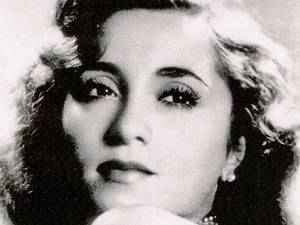 Isaurinha Garcia Source: Radio Em Revista |
|
| The accordion, high tech
concertina or squeezebox, if not laborious keyboard with confusing buttons, had never been an
especially popular instrument in the United States. One US blues musician who
played the accordion was
Clifton Chenier, King of Zydeco,
but his wasn't the major name that singer,
Luiz Gonzaga's, would come to be in
Brazil. The squeezebox was used by skiffle bands in the UK as well as country
and rock bands. Then there was British musician, Pete Townshend's, accordion
on 'Squeeze Box' in 1975. Whatever, the bellows, however they came,
weren't nearly so popular in North America
as south of the border and on
down where highly regarded musicians made their fame with it. A good acordeón player, with or without keys, was and remains a prize. The
instrument in its varieties had been important in Continental Europe as well. Gonzaga owns the distinction of
being one of the few accordion players listed in all of these histories.
Another Latin accordion player was Brazilian guitarist,
Sivuca, as well as
Hermeto Pascoal in his
earlier days. Gonzaga, was among the earliest and foremost to make accordion
a big deal, also pioneering the baiao, most notably via the
farro [1,
2] which form
he created in its basic ensemble of accordion, zabumba, and triangle. Born in 1912 to a farmer in Exu, Pernambuco in northeastern Brazil, he
played accordion as a youth at such as parties and religious events. He
learned to play cornet while in the Army which he joined in 1930. Stationed in Rio de Janeiro when
released from service in 1939, Gonzaga there remained to play in bars. He moved into
radio, then issued his first five records of ten titles for Victor in 1941.
He became hugely popular from the start, introducing styles of folk music
from northeastern Brazil to the populace. A part of his appeal wasn't unlike
that of early country western stars in the US (ala Mexico) with their fancy
attire. As well, his hat with the brims folded up wasn't unsimilar to that
of the outlaw in cowboy history in the US (or Mexico), being worn by the
cangaceiros, that is, groups of bandits which roamed northeastern Brazil,
the most notorious of which was captained by the romanticized Lampião (b
1897 d 1938). Things change, however, and Gonzaga's brand of "country" began
to wane in the sixties, the bright city lights of Rio de Janeiro
illuminating hipper ways to swing like samba at
Carnival or the bossa nova. Gonzaga died on 2 August 1989 of natural causes. He managed to weather the rise of bossa nova
and MPB (Brazilian Popular Music) in Brazil by being one of Brazil's first
popular musicians at all. Indeed, after these years he yet has a very strong
fan base. References: 1,
2,
3,
4,
5.
Discos: 1,
2,
3,
4,
5,
6.
IMDb.
Compilations: 'Maxximum' 2005 *;
'Monumento Nordestino' *.
IA.
Further reading: lyrics: 1,
2.
Biblio: 'The Accordion in the Americas' by Helena Simonett (U of Illinois
Press 2012) *; 'Forró: the Encoding by Luiz Gonzaga' by Climério de Oliveira
Santos (Companhia Editora de Pernambuco [CEPE] 2017)
*. Luiz Gonzaga 1941 Composition: Gonzaga Composition: Antonio Nássara/Eratóstenes Frazão Waltz Composition: Gonzaga Waltz Composition: Turquinho Composition: Gonzaga Luiz Gonzaga 1949 Composition: Gonzaga/Humburto Teixeira Composition: Gonzaga/Humburto Teixeira Luiz Gonzaga 1950 Composition: Gonzaga/Humburto Teixeira Luiz Gonzaga 1956 Composition: Gonzaga LP: 'Aboios e Vaquejadas' RCA Victor BPL 3027 Luiz Gonzaga 1964 Composition: José Marcolino/Gonzaga Luiz Gonzaga 1979 Album Luiz Gonzaga 1986 Album Luiz Gonzaga 1987 Television broadcast Composition: Gonzaga
|
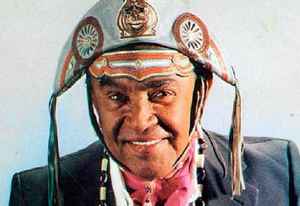 Luiz Gonzaga Source: Jornal de Paraiba |
|
|
Henri Salvador See
Henri Salvador. |
||
|
Dick Farney Source: Last FM |
Brazilian pianist Dick Farney [1, 2, 3] was born in Rio de Janeiro in 1921 to become among the avant-garde of Brazilian musicians to tour to the United States, mixing hemispheres north and south. He made his singing debut for a radio station in Rio de Janeiro in 1937. From 1941 to 1944 he crooned for the orchestra of Carlos Machada, also in Rio de Janeiro. His first recording in 1944 was with the Orquestra de Ferreira Filho, namely, 'The Music Stopped'. He first arrived to the States in 1946, crooning for NBC Radio, but largely worked in Brazil. His most popular issue in the States was 'I Wish I Didn't Love You So' (Majestic 7225) in latter 1947. He recorded 'Dick Farney Plays Gershwin' (CBS 225012) live at the Teatro da Cultura Artistica in 1956 in Sao Paul toward release in 1978, that backed by Case (alto sax), Shoo Viana on contrabass and Rubino (Rubens Barsotti) on drums. Ditto 'História do Jazz em São Paulo' (Band 23.012), recorded in '56 at the same venue, released in 1978. 'Atendendo a Pedidos' ('Fulfilling Requests') of 1958/59 was filled with tracks a little closer to home, sambas and bossa novas (Odeon MOFB 3048). More albums filled with titles by North American composers saw recording and release in 1960: 'Dick Farney no Waldorf' (Odeon MOFB 3106) and 'Dick Farney e Seu Jazz Moderno no Auditorio de O Globo' (CBS 225012). Come his trio consisting of Sebastiao Oliveira da Paz (saba/ bass) and Toninho Pinheiro Filho in 1973 toward 'Concerto De Jazz Ao Vivo' (London XLLB-1097-S). The same trio squared away '5 Anos De Jazz' around the same time for release on London XLLB-1108-S in 1977. An album of piano solos followed in 1974 per 'Um Piano Ao Cair Da Tarde' (Odeon SMOFB-3852). The eighties brought 'Noite' in '81 w Renato Loyola (bass) and Toninho Pinheiro (drums). Together with emphasis on recording, Farney's career otherwise consisted of playing clubs and ballrooms in Rio, having formed an orchestra in 1960. He also did a bit of television (Brazilian) as a host and owned a couple clubs in São Paulo. He died on 4 August 1987. Recording data per Lord and Discogs. Catalogs: 1, 2, 3. IA. Dick Farney 1944 Composition: Richard Rodgers/Laurentz Hart Dick Farney 1947 Music: Walter Gross Lyrics: Jack Lawrence Dick Farney 1962 Piano: Farney Composition: Richard Rodgers/Laurentz Hart Piano: Farney Composition: Johnny Mercer/Victor Schertzinger Dick Farney 1965 Composition: Johnny Mercer/Harold Arlen Composition: Antonio Carlos Jobim 'Two Note Samba' Composition: Luiz Bonfá Dick Farney 1972 Album Dick Farney 1981 Album
|
|
| Born Jorge Neves Bastos in Rio
de Janeiro, Brazil, in 1926, samba vocalist,
Jorge Goulart,
continues the contributions of Carnival and its
samba schools to Latin recording. Goulart was singing for Radio Nacional
when he released his first recordings in 1945: 'A Volta'/'Paciência, Coração'
and 'Nem Tudo é Póssível'/'Feliz Ilusão' ('Back'/'Patience, Heart' and 'Not
Everything Is Possible'/'Happy lllusion'). His relationship with
Nora Ney began in 1952. Lasting several decades, they would have one
child. Among the Carnival sambas that Goulart recorded was 'Exaltação a São Paulo' which saw march by the Portela
School in 1954, composed by Elton Medeiros. The recording, all orchestrated
by Radamés Gnattali, took place at Radio Nacional with its sixty piece
orchestra. Goulart toured internationally in the fifties as well, including
Russia, China and Europe. Another of his Carnival interpretations was
the 1963 march by Vinicius de Moraes and Carlos Lyra, 'Marcha da Quarta-Feira
de Cinzas', thought to be the first bossa nova to enter Carnival. The next
year Goulart, a Communist, and
Ney went into exile upon Brazil's coup d'état of 1964. Details of that
are unknown beyond both being banned from Radio Nacional. 45cat, however, has Goulart issuing in Romania on the Electrecord label in 1966: 'Carnaval Brazilian' A
side with 'Brasil' and 'Copacabana' B side. Brazil's military
government presided until 1985, but Goulart and
Ney were working together in Brazil again in the early seventies. In
1977 they issued the album, 'Jubileu de Prata', together. 1981 saw Goulart
pair with Emilinha Borba on the release of the LP, 'Oh! As Marchinhas'.
Goulart had also appeared in a number of films in the fifties. Despite
apparently recording relatively little Goulart's was a huge name in
Brazilian music as it entered into the latter half of the 20th century. He
died in Rio de Janeiro on 17 March 2012. References:
1,
2. Discos:
1,
2,
3,
4.
IMDb.
Further reading: PPB.
Other profiles: *. Jorge Goulart 1950 Carnival march 1950 Composition: Nássara/Wilson Batista 'Copacabana Mermaid' Film: 'Aviso aos Navegantes' 'Notice to Mariners' Composition: Nássara/Wilson Batista Jorge Goulart 1953 'My Maria Morena' Composition: Alcyr Pires Vermelho/João De Barro Jorge Goulart 1955 Composition: Jean Manzon/José Toledo Leônidas Autuori Paulo Mendes Campos Jorge Goulart 1957 'Down the Hill' Composition: Billy Blanco/Tom Jobim Jorge Goulart 1958 Composition: Ze Keti Jorge Goulart 1958 Film: 'Mulheres à Vista' 'Women in Sight' Composition: Wilson Batista/Jorge de Castro Jorge Goulart 1964 Carnival march 1964 Composition: Roberto Faissal/João Roberto Kelly Jorge Goulart 1967 Carnival march 1967 Jorge Goulart 1973 Filmed live with Nora Ney Composition: Nelson Cavaquinho/Guilherme de Brito
|
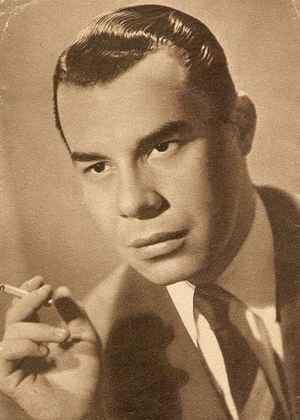 Jorge Goulart Source: Musicaria Brasil |
|
|
Luiz Bonfá Source: Musica Brasileira |
Born in 1922 in Rio de Janeiro,
composer and guitarist Luiz Bonfá,
wasn't the pioneer that was
Dick Farney (above) in the
early interest of mixing the Americas North (jazz) and South (samba), but he
would arrive to a greater and more enduring fame, particularly in
association w musicians from the United States. Bonfa is said to have taken his first professional employment as a musician in 1946,
performing for Rádio Nacional. It's generally agreed that he made his first
recordings in 1946. Whether those were from a radio broadcast, a live
performance or a studio session is unidentified. About the time Bonfá was at Rádio Nacional he also
played with the Quarteto Quitandinha and the Quitandinha Serenaders. Having
composed more than thirty film scores in his lifetime, he is thought to have
written his first in 1947 for 'Este Mundo e um Pandeiro'. The first in which
his guitar was featured was in 1955: 'Chico Viola Nao Morreu', the year he
released his first album, a collection of sambas and bossa novas called 'Luiz Bonfa' (Continental LPP-21). Bonfá first visited
the United States in 1957 to tour with vocalist, Mary Martin. Perhaps his most
highly regarded film score, 'Orfeu Negro' ('Black Orpheus') was composed in
1959 w
Antônio Carlos Jobim, the year
Bonfa recorded 'Solo in Rio'.
Bonfa's first trip to the United States is thought to have been in 1962
where he recorded 'Bossa Nova' for release the next year on Verve V-8522.
That included flute by US saxophonist,
Leo Wright, w titles arranged by
pianist, Lalo Schifrin (keyboards
played by Oscar Castro-Neves). The next year found him back in NYC for
concerts in February at Webster Hall w Stan Getz,
Antônio Carlos Jobim
also attending, to result in the album, 'Jazz
Samba Encore!'. A visit to Rio the next year in 1964 by
Paul Winter resulted in
'Rio' (Columbia CS 9115) featuring Bonfa. Tom Lord has Bonfa in Los Angeles
in June of '65 to support Astrud Gilberto's 'The Shadow of Your Smile'
(Verve V6-8629). Bonfa composed 'Almost in Love' for release by
Elvis Presley in the 1968 film,
'Live a Little, Love a Little'. Lord has him in New Jersey in 1969
contributing to
George Benson's 'Out of the Blue'
(Nemo/Jason) eventually issued in '84 on
Benson's 'I Got a Woman and Some
Blues'. Bonfa backed
Flora Purim's album, 'For a
Distant Love', in '86. Of the more than fifty albums that Bonfa released in
his lifetime the last is thought to have been 'The Bonfá Magic (Caju
511.404-2) recorded in April 1991 toward issue in '92. Bonfa also
contributed guitar to titles on both volumes of
Toots Thielemans's 'The
Brazil Project' issued in '92 and '93. Among Bonfa's last tracks before his
death on January 12 in Rio de Janeiro in 2001 [obits: 1,
2] were 'Man Alone' and
'April in Paris' in September of 2000 toward release on Ithamara Koorax'
'Love Dance' in 2003. He had also contributed to titles on uncertain dates
in Rio on Jorge Pescara's 'Grooves in the Temple' of 2005. Traveling
extensively between Brazil and the United States, other US musicians with
whom Bonfa had worked were
Quincy Jones and
Frank Sinatra. References:
1,
2,
3,
4.
Discos: 1,
2,
3,
4,
5,
6,
7.
Sessions: Lord (16 jazz only); Yasuoka (78 rpm).
IMDb.
Compositions: 1,
2.
Archives: 1,
2.
Other profiles *. Luiz Bonfá 1948 Malaguena w the Quarteto Quitandinha Continental 15.701 Composition: Marinho Valentim With the Quitandinha Serenaders Continental 15.932 Composition: Dilu Melo/Ovidio Chaves Luiz Bonfá 1950 With the Quitandinha Serenaders Composition: Jose C. Burle Luiz Bonfá 1951 Composition: Bonfa Luiz Bonfá 1954 Compositions by Bonfa Piano: Tom Jobum Accordion: Joao Donato Luiz Bonfá 1957 LP Discogs Luiz Bonfá 1958 From 'Ritmos Continentais' Odeon MOFB-3020 Also 'Toca Melodias das Américas' Imperial IMP-30.009 Composition: Margarita Lecuona Composition: Bonfa From '¡Amor!' Piano: Tom Jobum Accordion: Joao Donato Composition: Bonfa Luiz Bonfá 1959 Composition: Bonfa Film: 'Black Orpheus' Composition: Bonfa LP: 'Solo in Rio' Luiz Bonfá 1962 Composition: Noel Rosa LP: 'O Violão e o Samba' Luiz Bonfá 1963 With Stan Getz Composition: Tom Jobim Vocal: Perry Como 'The Perry Como Show' Luiz Bonfá 1966 Soundtrack Music: Bonfa Lyrics: Matt Dubey Luiz Bonfá 1972 LP All comps by Bonfa Luiz Bonfá 1973 LP Discogs
|
|
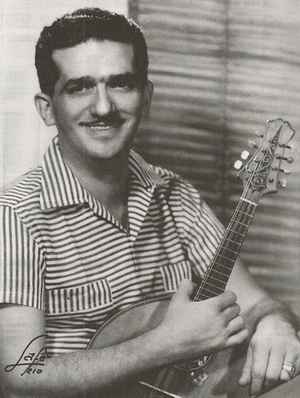 Jacob do Bandolim Source: Luis Nassif |
Born Jacob Pick Bittencourt in
Rio de Janeiro, Brazil, in 1918, mandolin virtuoso, Jacob do Bandolim
(Mandolin Jacob),
was son to a pharmacist. He played harmonica and violin before picking up
mandolin at age twelve. In the United States the great mandolin players have
been largely associated with bluegrass, a
country genre of rural folk music. In Brazil it was the other way about, do
Bandolim a composer of choro ("cry" or "lament") or chorinho ("little cry"
or "little lament"). Choro [1,
2,
3,
4,
5] was a genre of music in Brazil roughly
corresponding to ragtime in the United States preceding jazz. Like
ragtime, it was an uptown urban instrumental music that defined hip. As like
the European roots of popular music in North America, notably the Irish
ballad, so did choro (pronounced "shoro") share roots from Europe, notably
the polka and waltz via Portugal in the 19th century. Sharing origins in
classical music, in addition to local rhythms like the samba, choro also defined cultured
with flute and guitars its primary instruments. As like ragtime had its
foxtrot and Argentina its tango, so was choro's maxixe
[1,
2,
3,
4] popular in Rio into
the fifties until samba and bossa nova eventually carved R.I.P. on choro's
stone. As for Bandolim, to the left he contemplates "These stupid things
hurt my feet. I don't give a whit about shoes". After often going barefoot
as a child like the neighborhood dogs Bandolim was performing on radio at age fifteen.
His first recordings are thought to have been in 1947: 'Gloria' and 'Treme Treme',
the first a waltz, the second his own composition. Bandolim released his
debut name LP, 'Valsas Evocativas', in 1956.
Three years later he released the album, 'Época de Ouro'
('Golden Age'). Bandolim put together his own choro group in 1961 to
eventually become the Época de Ouro [1,
2,
3] w which he performed the remainder of
his career. Among their albums was 'Vibrações'
in 1967. Do Bandolim never did
quit his day job, of which he had a few, from running a pharmacy like
(perhaps with) his father, to selling insurance, court reporting and,
finally, working as a notary. Do Bandolim issued more than a hundred titles
before dying of heart attack on 13 August 1969. References: 1,
2,
3,
4,
5.
Discos: 1,
2,
3,
4,
5,
6.
Compositions.
Reviews.
Compilations: 'Mandolin Master of Brazil: Original Classic Recordings' Vol
1
& 2.
Collections.
Further reading: Choro Music Blog.
Other profiles: 1,
2,
3. Jacob do Bandolim 1947 ('Shake Shake') Composition: Jacob do Bandolim Jacob do Bandolim 1948 Composition: Bonfiglio de Oliveira Composition: Jacob do Bandolim Jacob do Bandolim 1951 Composition: Jacob do Bandolim Composition: Jacob do Bandolim Jacob do Bandolim 1952 Composition: Ernesto Nazareth Jacob do Bandolim 1961 Composition: Jacob Pick Bittencourt Jacob do Bandolim 1967 From 'Vibrações': Composition: Ernesto Nazareth Composition: Pixinguinha/Vinícius de Moraes Composition: Jacob do Bandolim Composition: Jacob do Bandolim Jacob do Bandolim 1968 Filmed live with Elizeth Cardoso Composition: Luiz Antonio/Oldemar Magalhães
|
|
| Born João Donato de Oliveira
Neto
in Rio Blanco, Acre, in 1934, Brazilian pianist,
João Donato,
began to play accordion as a child. Raised in Rio de Janeiro since age
eleven, he thought it fitting to scratch a 78 with 'Brejeiro' and 'Feliz
Aniversário' in 1949 for the Star label. That was with the band of flautist,
Altamiro Carrilho. Donato began recording on piano in 1953 when he started
leading his own bands, recording numerous titles into 1954 with the Sinter
label. 'Chá Dançante' was his initial LP release in 1956. Dividing his
career between Rio and Sao Paulo, he first visited the U.S. to perform for a
brief time at a casino in Lake Tahoe, Nevada, after which he toured Europe
with
Joao Gilberto. Back in Brazil
by 1962, 'Muito À Vontade' saw release that year on Polydor LPNG 4085,
reissued in '65 as 'Sambou Sambou' (Pacific 190). Donato made his next sojourn to the U.S. in time to record 'The New
Sound of Brazil' w Claus Ogerman arranging toward release in 1965 on RCA
Victor LSP 3473. Pianist and arranger,
Eumir Deodato, joined him in Los Angeles in 1970 toward 'A Bad Donato' released on
Blue Thumb BTS8821. It was back in Rio in latter 1972 that
Donato began adding vocals to piano per 'Quem é Quem'
released in 1973, the same year he and
Deodato recorded 'Donato/Deodato'
in March and April in New York City toward issue on Muse MR5017. After
'Lugar Comum' in 1975 Donato didn't issue 'Leilíadas' until 1986, his sole
album release during the eighties. He began recording again in the nineties
w 'Coisas tão simples' appearing in 1995. He wrapped up the 20th century a
couple albums later w 'Só Danço Samba' in 1999 and began the new millennium
w the issue of 'Remando Na Raia' in 2001. Among others Donato supported in
the new millennium was Jovino Santos Neto, appearing on the latter's 'Veja O
Som' ('See the Sound') in 2010. Having led or co-led well above thirty
albums, Donato released three of them in 2018: 'Bluchanga', 'Raridades'
(recorded 1970) and 'Gozando A Existência' ('Enjoying Existence'). Delivering bossa nova for more than half a century now, Donato is
the father of
two children and currently resides in Rio de Janeiro with his wife, journalist, Ivone Belém.
Among others with whom he's recorded during his career were Eddie Palmieri,
Bud Shank,
Sérgio Mendes and Dom Um Romao.
References: 1,
2,
3,
4.
Discos: 1,
2,
3,
5,
6, Lord (leading 4 of 33 jazz only).
IMDb.
IA.
Compositions:
1,
2.
Lyrics.
Interviews 2000/01.
Facebook.
Further reading: Allen Thayer. Per
below, all edits from 2007 onward were filmed live. João Donato 1962 Tito Puente LP: 'Vaya Puente' Composition: Puente Participation unconfirmed With Mongo Santamaría Tito Puente LP: 'Vaya Puente' Composition: Justi Barreto Participation unconfirmed João Donato 1963 Album João Donato 1964 'Steve Allen Show' Guitar: Tom Jobim Music: Tom Jobim Lyrics Portuguese: Newton Mendonça Lyrics English: Jon Hendricks João Donato 1965 Bud Shank|Donato|Rosinha De Valenca ('Bud Shank and His Brazilian Friends') João Donato 1970 All comps by Donato João Donato 1973 João Donato 1975 João Donato 2007 Composition: Donato/João Gilberto João Donato 2010 Composition: Donato/Gilberto Gil Composition: Donato/Paulo André Barata Composition: Donato/Carmen Costa Also issued on 'Sambolero' João Donato 2011 ('To Peace') Filmed with Gilberto Gil Composition: Donato/Gilberto Gil 1986
|
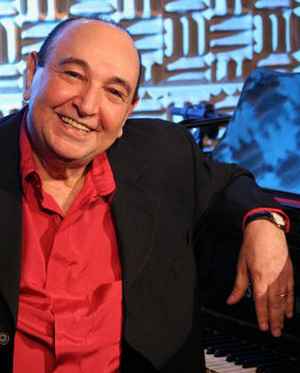 Joao Donato Source: Joao Donato |
|
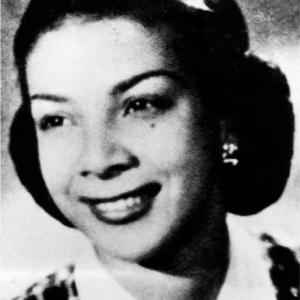 Elizete Cardoso Source: Rolling Stone |
Born in 1920 in Rio de Janeiro, Brazilian actress and vocalist,
Elizete Cardoso (also Elizeth), went to work as a
store clerk at age ten. She also worked as a hairdresser before her first
professional job at age 16 on 'Programa Suburbano' for Radio Guanabara. That
was followed by weekly appearances, then performances for multiple radio
stations. Pay got better as she added nightclubs, she becoming a popular
local singer before recording her debut sides in 1950: 'Braços Vazios'/'Mensageiro
da Saudade'. Though those were released they were pulled from shelves for
some unknown issue. In July of 1950 Cardoso recorded 'Complexo' and 'Canção
de Amor', the success of which found her on television the next year for TV
Tupi (Rede Tupi), that followed by her first films, 'Coração materno' (1951)
and 'É fogo na roupa' (1952). Cardoso wasn't primarily a bossa nova singer,
but many consider her 1958 issue of 'Canção do
Amor Demais' the first bossa nova album, with
Tom Jobim and
Vinicius de Moraes at her
side. She remained a highly popular performer for the next two decades, both
in film and on record.
Clare Fischer's bossa nova, 'Elizete',
was dedicated to Cardoso, that recorded by
Cal Tjader in March of 1962
toward release by Verve on 'Plays the Contemporary Music of Mexico and
Brazil'. Highlighting the sixties was her release of 'Elizete
Sobe O Morro' in 1965. In 1968 she performed with
Jacob do Bandolim and
the Zimbo Trio at the Teatro João Caetano in Rio toward the 1977 issue of 'Elizeth
Cardoso: Zimbo Trio - Jacob do Bandolim' Vol 1-3.
She highlighted the seventies w her first of multiple tours to Japan in
1977. Her 1990 release of 'Ary Amoroso'
['89 per RYM] was filled w compositions by
Ary Barroso. She followed
that w her posthumous issue in 1991 of 'Todo O Sentimento', that a joint
project w guitarist, Rafael Rabello. Cardoso released above forty albums before her death
of cancer in Rio de Janeiro on 7 May of 1990. References: 1,
2,
3,
4.
Catalogs: 1,
2,
3,
4,
5,
6.
IMDb. Elizete Cardoso 1950 Music: Dorival Silva (Chocolate) Lyrics: Elano de Paula Composition: Wilson Batista/Magno Oliveira Composition: Ataulfo Alves Elizete Cardoso 1958 Composition: Tom Jobim/Vinicius De Moraes Album Elizete Cardoso 1968 Album Album Elizete Cardoso 1974 Album Elizete Cardoso 1978 Music: Luiz Bonfa Lyrics: Antônio Maria Album: 'Live in Japan'
|
|
|
Joao Gilberto Source: Verve Music Group |
Born in 1931 in Juazeiro, Bahia, Brazilian guitarist and vocalist Joao Gilberto acquired fame in the United States via collaboration with Stan Getz on the 1964 album, 'Getz/Gilberto'. Gilberto had first recorded in 1951, such as 'Quando Voce Recordar'. In 1959 Gilberto released a song composed by Antônio Carlos Jobim that is often cited as the first bossa nova to see vinyl: 'Chega de Saudade' ('No More Blues'). 'Bim Bom', composed by himself a few years prior to its release, is likewise cited. 'Bim Bom' is on the 1959 LP below. Yet others point to the 1958 LP, 'Cancao do Amor Demais', by Elizete Cardoso, tracks composed by Tom Jobim (Antonio Carlos) with text by Vinicius de Moraes. Gilberto first arrived to the States in 1962 to work with Charlie Byrd and Stan Getz. March of 1964 saw the recording of 'Getz/Gilberto' with Jobim, that to win the Album of the Year Grammy Award the next year. Beginning in 1969 Gilberto performed and recorded in Mexico for a couple years, but didn't return to Brazil until 1980. He there pursued the remainder of his career into the new millennium, also touring internationally in Europe and Japan. Gilberto died in Rio de Janeiro on 6 July 2019 [obits: 1, 2, 3, 4, 5, 6, 7, 8, 9, 10, 11, 12, 13]. Gilberto had twice married, first to timid vocalist, Astrud Gilberto [1, 2, 3, 4], in 1959, then vocalist, Miúcha [1, 2, 3], in 1965 with whom he produced the singer, Bebel Gilberto [1, 2, 3, 4]. Joao's latest albums had been 'In Tokyo' ('04) and 'For Tokyo' ('07). References: 1, 2, 3, 4, 5, 6, 7. Chronology. Sessions: Lord (leading 13 of 18); McCarthy. Discos: 1, 2, 3, 4, 5, 6, 7, 8, 9. IMDb. Compositions. IA. Select YouTube. Tablature. Further reading: Andrew Kay; LA Phil; Tom Maxwell; Laura McCarthy: 1, 2; Chris Richards; various. Biblio: 'Getz/Gilberto' by Bryan Daniel McCann (Bloomsbury 2018). Other profiles: 1, 2, 3, 4. Joao Gilberto 1951 ('Loving Is Good') Composition: Zé Keti/Jorge Abdala ('Cruel Angel') Composition: Wilson Batista/Alberto Rego Composition: Valter Souza/Milton Silva Joao Gilberto 1952 ('Half Light') Composition: Hianto de Almeida/João Luiz ('When She Leaves') Composition: Albeto Jesus/Roberto Penteado Joao Gilberto 1959 Album Composition title track: Tom Jobim/Vinicius de Moraes Composition: Tom Jobim Joao Gilberto 1962 Recorded 1962 in Copacabana Issued 2015 Venue: Au Bon Gourmet (restaraunt) Personnel: Tom Jobim/Vinicius de Moraes Bass: Otávio Bailly Drums: Milton Banana Vocal group: Os Cariocas Composition: Tom Jobim/Vinicius de Moraes Joao Gilberto 1973 ('How Beautiful You Are') ('Bebel': Gilberto's daughter) Composition: Joao Gilberto LP: 'Joao Gilberto' Joao Gilberto 1983 Live performance Music: Tom Jobim Lyrics Portuguese: Vinicius de Moraes Lyrics English: Norman Gimbel Live performance Composition: Tom Jobim
|
|
| Viirtuoso choro [1,
2,
3,
4,
5] violinist,
Fafa Lemos, was born in 1921 in Rio de Janeiro, Brazil,
to begin classical training at age seven. He delivered his first solo, of
Vivaldi, in concert two years later. Age ten saw him performing at the
National Institute of Music with pianist, Souza Lima, before putting music
on a back burner for the next several years to concentrate on graduating
from high school. In 1940 he joined the Brazilian Symphonic Orchestra for
some brief months, then the Carlos Machado Orchestra. He was working with
Machado at the Casablanca nightclub when he quit to join the Trio Rio at the
Bally-Hi. Hired by Rádio Nacional in 1950, he thought to have first recorded
the next year on 78 for RCA Victor: 'Cigano no baião' ('Gypsy in Baião'), 'Saudades
do Texas' ('Miss Texas'), 'Grã-fino' and 'Tico-tico no fubá'. 1952 was a
huge year for Lemos, he traveling to the United States for the first time,
there to record for the soundtrack to the film, 'Meu Amor Brasileiro', tour
with
Carmen Miranda, appear on television and
record several albums. Back in Brazil he formed the Trio Surdina in 1951 w
guitarist,
Garoto (Anibal Augusto
Sardinha), and accordion player, Chiquinho do Acordeon (Acordeom) [1,
2,
3].
That ensemble released four albums on Musicdisc before dissolving in 1954:
'Trio Surdina', 'Trio Surdina & Leo Peracchi: Ary Barroso', 'Trio Surdina
Interpreta Noel Rosa e Dorival Caymmi' and 'Trio Surdina'. Lemos had worked
on trips to the United States with
Miranda until her death in 1955, after which
he formed a trio to perform in restaurants, then returned to Brazil the next
year. He there played in nightclubs, recorded and made television
appearances until immigrating to Los Angeles in 1961. He finally returned to
Brazil in 1985 where he died in Rio de Janeiro on 18 October 2004. RYM
(RateYourMusic) finds him issuing 11 albums from 'Jantar No Rio' in 1954 to
'Fafá & Carolina' in 1989 w
Carolina Cardoso de Menezes.
References for Lemos: 1,
2,
3,
4;
discos: 1,
2,
3,
4,
5,
6.
Compositions.
References for the Trio Surdina: 1,
2;
discos: 1,
2,
3,
4. Fafa Lemos 1952 See 'The Billboard' Composition: Aníbal Augusto Sardinha (Garoto) Fafa Lemos 1954 Album Fafa Lemos 1956 Music: Valdir Azevedo 1952 Lyrics: Jack Lawrence Fafa Lemos 1957 'Gypsy in Baião' Composition: Aníbal Augusto Sardinha (Garoto) LP: 'Para Ouvir Dançando' RCA Victor BPL 3037 Fafa Lemos 1989 From 'Fafá & Carolina' Piano: Carolina Cordoso de Menezes ('At Dawn') Composition: Nilo Sérgio ('Pieces of Heaven') Composition: Waldir Azevedo
|
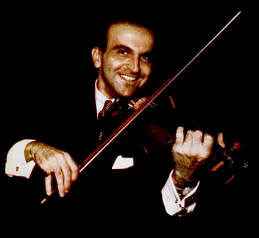 Fafa Lemos Source: Bossa Brasileira |
|
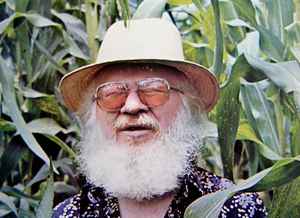 Sivuca Source: Forro Em Vinil |
Sivuca was born Severino Dias de Oliveira in 1930 in
Itabaiana, Brazil. He began is career in radio in the early fifties, also
releasing a couple solo 78s for the Continental label in 1951: 'Frevo dos
Vassour inhas' b/w 'Sivuca no Balao' and 'Carioquinha no Flemengo' b/w 'Tico-Tico
no Fuba'. 1952 saw 'Entardecendo' and 'Choro Baixo', 1953 'So Esta Valsa'
b/w 'Sincopado' and 'Lancha Nova' b/w 'Feijoada'. Sivuca switched to
Copacabana Discos for the issue of 'Homenagem a Velha Guarda' b/w 'Pulando
num Pe So' in 1955, and 'Lamento do Morro' b/w 'Carabina' in 1956. Also in
'56 Sivuca issued his first LP of accordion performances: 'Eis Sivuca!',
followed by 'Motivo para Dançar' the next year. Living in the United States
from 1964 to 1976. He toured to Stockholm in 1966 where he joined
clarinetist,
Putte Wickman on titles toward
'Putte Wickman Meets Sivuca' (Swedisc WELP 47) in 1966. That was reissued as
'Sivuca' in '68 on Interdisc ILPS 122. Another trip to Sweden in 1969 saw
Sivuca and
Wickman recording what wouldn't
see release until 1982 on 'Putte Wickman & Sivuca' (Four Leaf Clover FLC
6002). highlighting the seventies was 'Sivuca' released in 1973 on Vanguard
VSD-79337. Back in Brazil by the eighties, he joined visiting United States
harmonica player,
Toots Thielemans, in April
of '85 toward 'Chico's Bar' (Sonet SNTF 944). Sivuca eventually issued a
suite of solos per 'Enfim Solo' ('Finally Solo') on Kuarup Discos KCD 092
and Biscoito Fino BF-939 in 1997. Releasing above thirty albums during his
lifetime, his final had been 'Terra Esperança' in 2006 on Kuarup Música KCD
206. Sivuca died on 14 Dec 2006 of cancer in João
Pessoa, Paraíba. Others on whose recordings he can be found include Bobby
Hackett, Astrud Gilberto and Dom Um Romao. References: 1,
2,
3.
Discos: 1,
2,
3,
4,
5,
6, Lord (leading 11 of 41 sessions).
IMDb.
Other profiles: 1,
2. Sivuca 1951 Composition: 1909: Matias da Rocha/Joana Batista Ramos * Composition: Zequinha de Abreu 1917 Sivuca 1956 Album Sivuca 1969 Television broadcast Sweden Accordion by Sivuca Television broadcast Sweden Guitar by Sivuca Sivuca 1973 Album Sivuca 1993 Album Sivuca 2001 Filmed live with Hermeto Pascoal: Composition: Humberto Teixeira/Luiz Gonzagal
|
|
| Vocalist, Johnny Alf,
was a Carioca born in Rio de Janeiro in 1929. His father a soldier who died
in combat when Alf was three, his mother worked as a maid to raise him. He was nine
when he took up piano, but yet needed one on which to practice, among
reasons he later joined the Sinatra-Farney Fan Club [1,
2,
3] founded in 1949 w
assistance from
Farney and radio disc jockey, Luiz Serrano. Alf there worked
out his youthful timidity toward performing in public before beginning to
play professionally in nightclubs in the
Copacabana neighborhood of Rio. Alf issued his first sambas, 'Falseta' b/w
'De cigarro em cigarro', in 1952. In 1954 he began working clubs in Sao
Paulo as well. Alf moved in those circles where bossa nova (new trend) was
being created. However, at the same time his interest, like his colleagues,
was in mixing Latin samba with North American jazz he is known to have been
uncomfortable with the "bossa nova" term to the degree that he rejected an
invitation to play the Bossa Nova Festival at Carnegie Hall in 1961. That
was the year he released his initial LP, 'Rapaz de Bem', its title track
considered the earliest bossa nova. Alf had actually recorded and released 'Rapaz
de Bem' ('Well-Intentioned Guy') on 78 rpm six years earlier in 1955. Just so, some
credit Alf to be among the "fathers" of bossa nova. [See
'Bossa Nova' by Ruy
Castro (Chicago Review Press 2012).] Others think
that to be an exaggeration, Alf also initially distancing himself from "bossa nova" as a term.
Come 'Diagonal' in 1964 followed
by 'Johnny Alf' in 1965.
Alf made a living as a musician but didn't arrive to
the renown that did (other) bossa nova musicians. He recorded only ten
or eleven albums as a leader, nine of those his own to include his wrap of
live bossa nova titled 'Cult Alf' in 1998. He had made some fifty other recordings with other musicians
before dying of prostate
cancer on 4 March 2010 in Santo André, Brazil [obits: 1,
2,
3,
4]. Among those were tracks on 'Fim
de Semana em Eldorado' [*] in 2003 by German musicians, Kim Barth (flute/
sax) and Paulo Morello (guitar). That had been preceded the year before by
the recording of Alf's last album, 'Mais Um Som' in 2002, released in Japan in
2004 [*].
References: 1,
2,
3,
4.
Discos:
1,
2,
3,
4.
Compilations: ''Ele É Johnny Alf' | 'Nós'' 1971/74 by EMI 1994.
Select YouTube.
Further reading: Zuza Homem de Mello;
Kirsten Weinoldt.
Other profiles: 1,
2. Johnny Alf 1961 Debut LP Title track composed by Alf 1955 Johnny Alf 1963 'Johnny Alf Sings in English' Album Johnny Alf 1964 Album Johnny Alf 1968 ('Want to Stay') Album Johnny Alf 1969 ('Want to Stay') Filmed live Composition: Alf Lyrics English: Lani Hall ('Illusion for Nothing') Filmed with Alaíde Costa Composition: Alf Johnny Alf 1971 ('He Is Johnny Alf') Album Johnny Alf 1974 ('We') Album Johnny Alf 1978 ('Total Overflow') Album
|
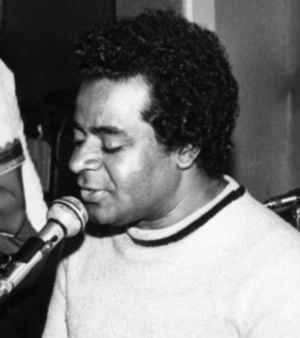 Johnny Alf Source: Bossa Nova na História |
|
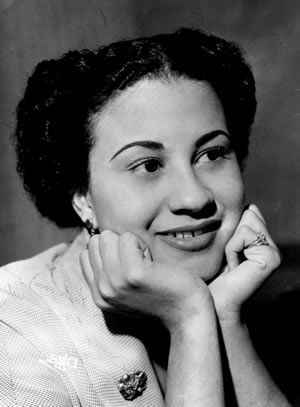 Dolores Duran Source: RACA Brasil |
Dolores Duran was born Adiléia Silva
da Rocha in 1930 in Rio de Janeiro, Brazil, to perform on radio ten years
later. She began performing on television at age 12. Changing her name to
Dolores Duran at age sixteen, she was working in nightclubs in Rio de
Janeiro when she recorded 'Canção da Volta' and 'Bom É Querer Bem' among
others in 1952. Her first recordings, however, are thought to have occurred
in 1949 at a soiree at the apartment of Raul and Helenita Marques de Azevedo,
such as 'Body and Soul' and 'Eu Sim Você'. Those weren't made available
until 2010 on a release titled 'Entre Amigos'.
That also includes 'Praça Mauá',
recorded in 1953 at the same location, as well as recordings in 57/58 at the
home of Geraldo Casé, such as 'How High the Moon' and 'Cry Me a River'.
Duran's initial credited composition, 'Se É Por Falta De Adeus', was written
w
Tom Jobim in
1955, recorded by
Jobim on guitar
backing vocalist, Dóris Monteiro toward release on Continental 17.159. In 1958 she toured to the Soviet Union, then traveled to Paris
before returning to Brazil to make her last recordings in 1959, the same
year Carlos Galhardo issued 'Idéias Erradas' composed by José Ribamar da
Silva and she. Duran herself issued five albums from 'Dolores Viaja' in 1955
to 'Êste Norte É A Minha Sorte' in '59. Her death on 24
October that year was one of the more coincidental in music. She'd given a
show at the Little Club and hung out after hours at the Clube da Aeronáutica
when she returned home about 7 AM to tell her maid to not wake her, that she
could sleep until she died. Which she did that day of heart attack,
immediate causes attributed to overdose of the easily dangerous combination,
barbiturates and alcohol. Only 29 years of age with an adult career not a
decade long, Duran yet made a powerful impression,
Ella Fitzgerald is said to have
thought her interpretation of 'My Funny Valentine' the best of which she
knew. Nice recommendation. All titles on the 1959 compilation, 'A Música De
Dolores' (Copacabana CLP 11.133), were composed or co-composed by Duran.
References: 1,
2,
3,
4,
5.
Discos: 1,
2,
3,
4.
IMDb.
Biblio: 'Dolores Duran' by Rodrigo Faour (Record 2012):
1,
2. Dolores Duran 1949 From the 2010 compilation 'Entre Amigos' Piano: Jaques Klein Music: Johnny Green 1930 Lyrics: Edward Heyman Robert Sour Frank Eyton 'Me Without You' Composition/Guitar: Billy Blanco Dolores Duran 1957 Composition: Jorge de Castro/Wilson Batista Film: 'Rico Ri à Toa' Dolores Duran 1957/58 From the 2010 compilation 'Entre Amigos' Composition: Arthur Hamilton 1953 Music: Morgan Lewis 1940 Lyrics: Nancy Hamilton Dolores Duran 1958 'End of the Affair' Composition: Duran Composition: 1937: Richard Rodgers/Lorenz For the musical 'Babes in Arms' Dolores Duran 1959 Composition: Duran Composition: Duran Dolores Duran 1960 Composition: Fernando Lobo
|
|
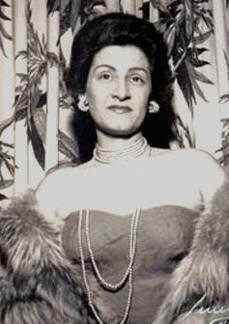 Nora Ney Source: Musicaria Brasil |
Nora Ney (not the older Polish
actress) was born Iracema de Sousa
Ferreira in 1932 in Rio de Janeiro, Brazil. She is thought to have modeled
her stage name, Nora Ney, after
Doris Day of the United States. It was Nora May before a fan misspelled her name in a letter as Ney, which she
kept. Before bossa nova there was fossa, a comparatively small genre of
tropical influence that has long since formally disappeared. Examples of
such were Ney's first records for Continental in 1952: 'Menino
Grande'/'Quanto Tempo Faz' and 'Amor, Meu Grande Amor'/'Ninguêm Me Ama'.
Discogs gives a release date of '51 for the former. 'Ninguêm Me Ama' became
the first record to achieve gold status in Brazil. Her relationship with
singer and Communist,
Jorge Goulart, commenced in 1952. 'De Cigarro
em Cigarro' was a big success in 1953. In 1955 Ney recorded
a version of Bill Haley's 'Rock Around the Clock' ("Ronda das Horas') which
tsort.info has charting in 1956. "Ronda das Horas' is said to have been the first rock
recording in Brazil. Ney had become a great success by that time. Upon
releasing the album, 'Mudando de Conversa', in 1958 Ney toured
internationally with
Goulart. Her marriage (second) to
Goulart is said to have led to exile upon the military coup in Brazil in
1964, which government presided until 1985. No details concerning such exile
are found beyond
Goulart and Ney being banned from Radio Nacional, but Ney
and
Goulart were working in Brazil in the early seventies.
Her popularity waning in that decade, Ney did little recording into the
early nineties. Despite not overmuch recording, not ten studio albums
to her name, Ney had been of the
biggest names in Brazilian popular music. She died in Rio de Janeiro in
October of
2003. References: 1,
2,
3,
4,
5.
Discographies: 1,
2,
3,
4. Nora Ney 1952 Music: Henri Crolla Lyrics: Caribé Da Rocha Composition: Antônio Maria/Luiz Peixoto Music: Fernando Lôbo Lyrics: Antônio Maria Nora Ney 1953 Composition: Luiz Bona Music: Charles Chaplin Lyrics: Antonio Almeida/João de Barro Nora Ney 1955 Composition: Ataulfo Alves/Jacob do Bandolim (Jacob Bittencourt) Composition: Reinaldo Dias Leme/Antônio Maria Nora Ney 1956 'Rock Around the Clock' Composition: Bill Haley Nora Ney 1957 Composition: Bidú Reis/Haroldo Barbosa Composition: Ary Barroso/Hermínia Silva Nora Ney 1958 Composition: Ataulfo Alves Nora Ney 1972 Composition: Fernando Lobo/Antônio Maria See Som Livre SSIG 1020P Nora Ney 1973 Nora Ney 1983 Filmed live with Isaurinha Garcia Composition: Denis Brean Nora Ney 1991 Television special Baixo: Zero Santos Bateria: Adriano Busko Piano: Adilson Godoy
|
|
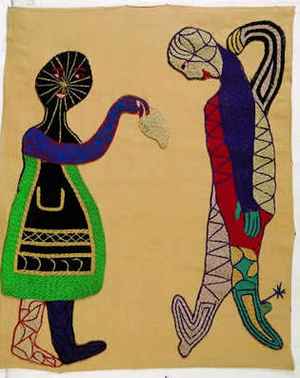 La Cueca (The Cave) Arpillera (burlap) by Violeta Parra Source: Live Journal |
Born Violeta del Carmen Parra Sandoval in 1917 in San Carlos,
Chile,
folklorist and folk singer/guitarist,
Violeta Parra, was part of the first
generation of the Parra musical dynasty, other visual
artists numerous in the family as well. That Violeta's was the first might be
qualified in that her father was a music teacher and her a mother a
seamstress who played guitar and also taught the instrument to her children. Violeta's siblings included not a few: Nicanor Parra [1914-2018 physicist/ poet:
1,
2,
3].
Eduardo (Lalo) Parra [1918-2009
singer: 1,
2],
Roberto Parra Sandoval [1921-1995 singer: 1,
2], Caupolicán, Elba,
Lautaro Parra [1928-2013 author/ musician: 1,
2] and
Oscar Parra [1930-2016 circus
performer *]. Her sister was the vocalist,
Hilda Parra [1916-1975: 1,
2]. Violeta was mother to singer,
Isabel Parra [b '39/ 1,
2],
and singer, Ángel Parra [b '43-d '17/ 1,
2]
upon marriage in 1938 to one Luis Cereceda Arenas. She was grandmother to Ángel Parra Orrego [guitarist: 1,
2],
Javiera Parra
[singer: 1,
2] and
Tita Parra [musician: 1,
2]. Violeta herself had gotten shifted
from one place to the next while growing up, but began her career as a young
lady performing in nightclubs like El Tordo Azul and El Popular in Santiago.
Among the forms she sang were boleros, rancheras and Mexican corridos. The
next step for Parra was theatre, then marriage. After a decade of that she
traded her husband for her sister, Hilda, the two of them performing as the
Parra Sisters from 1949 to 1952. They are thought to have begun recording in
'49 but their first confirmable issue was in 1952 per 'Se fue el año viejo',
'En el norte' and 'Ven' on RCA Victor 90-1219 [Cancioneros/ Mundaca]. Las
Hermanas Para released
numerous tracks together during the fifties for RCA Victor. Among them were
'El Caleuche'/'Judas',
'El Buen Consejo'/'Entrégame la Cabulla', 'Qué Rica Cena'/'La Cueca del
Payaso', 'A Mi Casa Llega un Gato'/'Ciento Cincuenta Pesos' and 'Es
Imposible'/'Luis Ingrato. 'La Jardinera'/'Es Imposible' was issued in 1954 by Odeon as
the Parra Sisters, but that was actually Violeta with her daughter,
Isabel. It was 1952 when Violeta
began documenting folk music from all about Chile, she now concentrating on
the performance of her own compositions at colleges. She hosted a radio show
for several months in 1954 as she traveled about Chile. In 1955 she traveled
abroad to Warsaw, Poland, with the World Festival of Youth and Students,
then headed to Paris to record Chilean folk songs for
the Le Chant du Monde label, her first album issued in 1956 in France
titled, 'Songs of Chile'. Back in Chile the same year, she began recording
the first of several volumes of 'The Folklore of Chile' during the next
several years, the first issued in '57. The latter fifties saw her composing
for documentaries, publishing a couple books on her research, and exploring
the visual arts via ceramics, painting and arpillera embroidery. Her next
trip abroad was also World Festival of Youth and Students in 1962, now
taking her son, Carlos, and daughter,
Isabel, to Finland, the Soviet Union
and destinations in Europe. In addition to concerts she appeared on
television and exhibited her art. Parra's archiving of Chilean folk music
was the impetus behind the Nueva Cancion musical movement in Chile that
arrived to its heydays under President Allende in the early seventies.
Parra, however, didn't make it that far, committing suicide by gunshot to
the head on 5 February 1967. Her last compositions had seen release by RCA
Victor in 1966 on 'Las Ultimas Composiciones De Violeta Parra', that
containing
'Gracias a La Vida' [1,
2]. Finance was hardly the singular cause of
Parra's desperation, but she had been involved in the installation of a
number of peñas (simply a musical venue where food and drink might or might
not be served, performances in tents if mobile or temporary - called peñas
flamencas in Spain). At the time of her death she was living in her Santiago tent
(about 100 x 100 feet) and wasn't doing well. She'd been recording, working for radio and
more, a highly productive woman with abilities of all kind, but one who the more
she worked the
less she reaped, she having zip commercial interests. When it came to Latin
music she was extraordinary altogether; when it came to money she was a
flop, making it requisite to remark that Chile was hardly abundant with
opportunities. It was a relatively undeveloped country populated with
poverty. As well, the Chilean presidency of Eduardo Frei Montalva had little use for Nueva Cancion
(though Pinochet would have
even less). Parra was devoted to the folk music of Chile like flamenco
musicians were devoted to flamenco, no messing around with jazz like nearby
in Brasil with bossa nova. Chile hadn't experienced anything like Mexico's
rumberas during that nation's golden age of cinema. The poncho set in Chile
hadn't been heading to NYC to record with big names in the States
because Santiago was the hippest place to be, as had been Havana, Cuba,
before Castro. Chile was the spine of the Andes Mountains down South
America's western coast, not a string of metropolitan bright lights,
despite its miles of beautiful coast. Santiago, Chile's largest city, could have fit in Rio's coin
pocket at Violeta's time. So Parra's significance isn't alike that of a
superstar, but one who helped preserve early traditional Chilean music,
meanwhile founding a musical genre, however brief, by the creation of her
own brew. Violeta had recorded above 300 titles during her shortened career. References: Cancioneros;
Cascada;
Lorna Dillon;
Green Left;
History Extra;
Interbrigadas;
Alejandro Mundaca
(alt);
She Shreds;
Wikipedia.
Chronologies: 1,
2.
Discos: 1,
2,
3,
4,
5,
6,
7.
Compositions: 1 (final),
2 (w text).
Lyrics.
Reviews.
Chords & tableture: Cancioneros.
Books by Parra: 1,
2.
Art by Parra: 1,
2.
Documentary films: 'Violeta Went to Heaven' directed by Andrés Wood in 2011:
1,
2,
3,
4,
5.
Further reading: Marilyn Bobes;
Lorna Dillon;
Elsa Fernandez-Santos;
Yamily Habib;
Alejandro Mundaca (politics);
Cristóbal Saez;
website tribute
(archived). Biblio: 'Despues de Vivir un Siglo' by the Consejo Nacional de la Cultura y las Artes 2017
*;
'Gracias a La Vida: Testimonio' by Bernardo Subercaseaux & Jaime Londoño 1974
*;
'Translating Poetics: Analysing . . . Parra’s Music, Poetry and Art' by Alejandro Mundaca 2019
*;
'La Vida Intranquila' by Fernando Sáez (Planeta 2017) *.
Collections: Violeta Parra Museum: 1,
2.
Other profiles: 1,
2. See
also clarinetist, Gilbert Favre [1,
2].
Like all other musicians at YouTube, Violeta is one that as soon as a title
is cited it disappears. Any remaining good links below are anomalies in the
cosmos. Violeta Parra 1952 Las Hermanas Parra: Hilda & Violeta RCA Victor 90-1219 Composition: Anonymous Violeta Parra 1953 Las Hermanas Parra: Hilda & Violeta RCA Victor 90-1351 Comps by Violeta Violeta Parra 1957 Composition: Violeta Album: 'Composiciones para Guitarra' Composition: Violeta Album: 'Composiciones para Guitarra' Las Hermanas Parra: Hilda & Violeta Composition: Anonymous Arrangement: Violeta Album Violeta Parra 1958 ('The Little Widow') Las Hermanas Parra: Hilda & Violeta With Isabel Parra (Violeta's daughter) Composition: Anonymous Note: Comments at citation above have the above version of 'La Viudita' recorded in 1949 w Isabel ten years of age. Violeta Parra 1959 La Cueca Presentada por Violeta Parra ('El Folklore de Chile Vol III') Album Violeta Parra 1965 ('What Dis I Get from Loving You') Album: 'Recordando a Chile' All comps by Violeta Violeta Parra 1966 From 'Las Ultimas Composiciones de Violeta Parra'Violeta Parra 1971 Canciones Reencontradas en París Posthumous collection
|
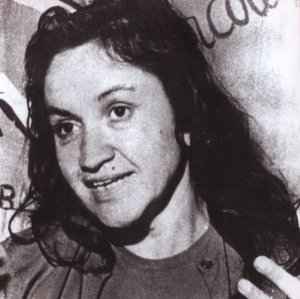 Violeta Parra Source: El Cultrun |
|
Lalo Schifrin See
Lalo Schifrin. |
||
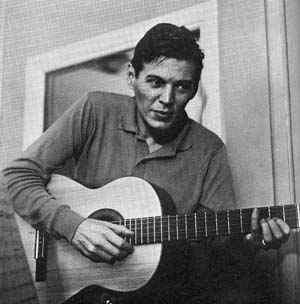 Tom Jobim Source: Musiclik |
Born in 1927 in Rio de Janeiro, vocalist
Antônio Carlos Jobim
played both guitar and piano. He composed the music to numerous titles
throughout this page. Together with
Joao Gilberto he is largely
responsible for the bossa nova that first rode airwaves in the States in
1962 via 'Jazz Samba', an album released by
Charlie Byrd and
Stan Getz. Known
in Brazil as Tom Jobim, he began is career performing piano in nightclubs before
becoming an arranger for a Brazilian record label. It was while working
clubs that Jobim met composer, Newton Mendonça [1,
2], in 1952, the latter rotating
shifts at piano w Jobim. That pair was later responsible for the composition
of 'Desifinado' (music by Jobim) issued by Joao Gilberto
in
1959 on his debut LP, 'Chega de Saudade'. It was w Billy Blanco [1,
2,
3] that Jobim composed the album, 'Sinfonia do Rio de Janeiro',
released in 1954 (music by Jobim). Jobim is thought to have first seen vinyl that year as
well, backing
singer, Bill Farr, as Tom and His Band. His career began shifting into gear in
1956, composing music for the play, 'Orfeu da Conceição'. It was then that
he met
Vinicius de Moraes
who wrote the lyrics. Jobim and
Moraes were the
pair responsible for 'The Girl from Ipanema' (music by Jobim) later issued
for the first time in 1962 by Pery Ribeiro [1,
2,
3]. Some attribute the
conception of bossa nova to the 1958 album, 'Cancao do Amor Demais', by
Elizete Cardoso, music for that LP composed by Jobim and
Vinicius de Moraes.
Others cite Joao Gilberto's
'Bim Bom' of 1959, composed a few years earlier. Yet others like Jobim's 'Chega
de Saudade' ('No More Blues'), released with 'Bim Bom' on
Gilberto's same album. In 1959 Jobim wrote the score for the film, 'Black Orpheus'. It was the 1964 release
of 'Getz/Gilberto', to which Jobim contributed compositions such as 'Desifinado'
('Off Key' or 'Out of Tune' in English) and 'The Girl From Ipanema', which made his
name in the States, 'Getz/Gilberto' also
winning the 1965 Album of the Year Grammy Award. 1964 had also witnessed the
issue of 'Você Ainda Não Ouviu Nada!' with
Sérgio Mendes. In 1965 Jobim
appeared on 'The Swinger from Rio' with
Mendes and Art Farmer
as well as Gary McFarland's 'Soft Samba'. 1967 saw the
recording 'Francis Albert Sinatra & Antônio Carlos Jobim'. Jobim's last album, 'Antonio
Brasileiro', was released two days after his death on December 9, 1994
[obit]. He
was working on another titled, 'Tom Jobim'.
References: 1,
2,
3,
4,
5.
Chronology.
Discos: 1,
2,
3,
4,
5,
6,
7.
Jobim in visual media: IMDb;
live performances.
Transcriptions.
Lyrics. Interviews:
1,
2.
Archives: Antonio Carlos Jobim: 1,
2;
Tom Jobim: 1,
2.
Further reading:
Jazz Profiles;
various.
Bibliography: Joandre Rodrigues Dias de Camargo; Patrícia Helena Fuentes Lima.
Other profiles. 1,
2,
3,
4,
5. Per 1956 below, all tracks are
from the stage play, 'Orfeu
da Conceição'. They're listed as samples of early compositions and
arrangements by Jobim w librettos by
Vinicius de Moraes
on which neither perform. Vocals are by Roberto Paiva
[1,
2], guitar by
Luiz Bonfá. Though
earlier compositions by Jobim performed by other artists are documented at YouTube,
nothing is found preceding 1962 on which he definitely performs, that with
flautist,
Herbie Mann. Jobim plays
both acoustic and electric piano in addition to guitar on a number of titles below. Antonio Carlos Jobim 1956 Eu e Meu Amor (Me and My Love) Note: Titles above were composed and arranged by Jobim w lyrics by Vinicius de Moraes. Neither perform. Vocals are by Roberto Paiva, guitar by Luiz Bonfá. Antonio Carlos Jobim 1962 With Herbie Mann Vocal: Jobim Guitar: João Gilberto Composition: Geraldo Pereira Samba De Uma Nota So (One Note Samba) Vocal: Jobim Flute: Herbie Mann Guitar: Baden Powell Composition: Jobim/Newton Mendonça Antonio Carlos Jobim 1963 The Composer of Desafinado, Plays Album Antonio Carlos Jobim 1964 Filmed live with Andy Williams Music: Jobim Lyrics Portuguese: Vinicius de Moraes Lyrics English: Norman Gimbel Antonio Carlos Jobim 1966 Vocal: Frank Sinatra Composition: Jobim/Gene Lees/Ray Gilbert Antonio Carlos Jobim 1967 Francis Albert Sinatra & Antonio Carlos Jobim Album Filmed live with Frank Sinatra Album Album Antonio Carlos Jobim 1970 Album Album Antonio Carlos Jobim 1974 Filmed live with Elis Regina Composition: Jobim Album with Elis Regina Antonio Carlos Jobim 1980 Album Antonio Carlos Jobim 1984 Filmed live with Jobim at piano Antonio Carlos Jobim 1993 Filmed live with Jobim at guitar
|
|
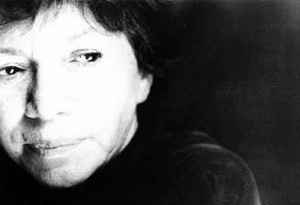 Isabel Parra Source: Cancioneros |
Born in 1939 in Santiago, Chile, guitarist and singer,
Isabel Parra, was daughter of
folklorist, guitarist and singer,
Violeta Parra, largely responsible for the
Nueva Cancion folk movement in Chile during the sixties, its heydays brief
during the Presidency of Salvador Allende from '70 to '73, then shut down
altogether upon the coup installing General Augusto Pinochet with the title
of President. The Parra family [1,
2,
3] produced numerous musicians and visual
artists, Isabel's brother, guitarist and singer, Angel Parra [b '43-d '17/ 1,
2], among the better
known beyond Isabel herself. Isabel made her first recordings at age fifteen
with her mother,
Violeta, in 1954 for Odeon: 'La
Jardinera'/'Es Imposible'. It was released as by the Parra Sisters, but it
is Isabel rather than
Violeta's sister, Hilda Parra
[1916-1975: 1,
2],
on the record. (Las Hermanas Parra,
Violeta y Hilda, had made
numerous recordings in the early fifties.) Among the more important albums
released by Isabel was with her brother, Angel, in 1965, 'La Peña de los
Parra' exampling some of the earliest songs of the Nueva Cancion genre.
Angel and Isabel went into exile upon the coup d'état of latter '73. She
first went to Argentina, then France, returning to Chile in 1987 once the regime had
run its course (fifteen years later at least). She has since toured,
releasing numerous albums into the new millennium. Her latest studio LP is
thought to be 'Ni toda la tierra entera' per 2006.
References: 1,
2,
3,
4.
Discos: 1,
2,
3.
IMDb.
Compositions.
Composers with lyrics.
IA. Andrian Pertout
interview 1999. Isabel Parra 1954 With Violeta Parra Composition: Violeta Parra Isabel Parra 1959 Composition: Anonymous Album: 'El folklore de Chile Vol 3" Isabel Parra 1969 Album with Angel Parra Isabel Parra 1971 Album Album Isabel Parra 1972 Album With Carmen Bunster & Inti-Illimani Music: Luis Advis Text: Violeta Parra Del Grupo de Experimentación Sonora Album Isabel Parra 1974 Album with Patricio Castillo Documentary With Inti-Illimani & Quilapayún Isabel Parra 2011 Filmed live with Gonzalo Sorich Isabel Parra 2013 Filmed concert Teatro Municipal de Valparaiso Isabel Parra 2015 Filmed live with Angel, Angel & Tita Parra
|
|
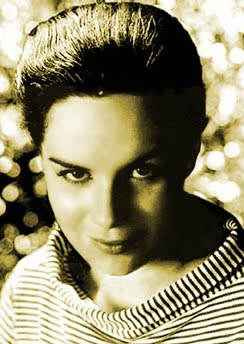 Sylvia Telles Source: Kboing |
Sylvia Telles
was born in 1934/35 in Rio de Janeiro. Also known as Sylvinha and Dindi, it was 1954
when bossa nova composer, guitarist and vocalist, Billy Blanco, became her first mentor in the
radio industry. Garoto was instrumental to her
early nightclub career. She formed a brief relationship with
Joao Gilberto about that time.
The next year she released 'Amendoim Torradinho' with 'Desejo' on 78 for
Odeon, as well as 'Menina' with 'Foi a Noite'. 'Carícia' was her first album
on 10" in 1957, also for Odeon. In 1959 she issued the album, 'Amor De Gente
Moça', replete w compositions by
Tom Jobim
including 'Dindi' (her familiar name). Another version of that went down for
her 1960 issue
of 'Amor Em Hi-Fi'
[*]. Telles' tour to America
in 1961 resulted in the album, 'U.S.A.', w the Billl Hitchcock Orchestra and
Barney Kessel on guitar. Sometime after her appearance
at the 'O Remédio é
Bossa' concert at the Paramount Theater in São Paulo in October of '64 she was
involved in an auto accident that required multiple hospital visits until
her tour of Europe in 1966 with
Edu Lobo. Upon her return to Rio de
Janeiro she formed a relationship with Horacio de Carvalho, a newspaper
publisher. She was in the car on 17 December 1966 when de Carvalho is said
to have fallen asleep at the wheel, killing them both. She had recorded 10
albums, three issued in 1966: 'The Face I Love', 'Reencontro' (live) and 'The
Music of Mr. Jobim'.
References: 1,
2.
Discos: 1,
2,
3,
4,
5.
Further reading: Marc Myers
(alt).
Other profiles *. Sylvia Telles 1955 ('Torradinho Peanuts') Composition: Henrique Beltrão ('Desire') Composition: Garoto/José Vasconcelos/Luiz Cláudio Composition: Henrique Beltrão Sylvia Telles 1957 ('Caress') Debut album 10" Sylvia Telles 1958 Sylvia Telles 1960 Album Sylvia Telles 1961 Composition: Tom Jobim/Dolores Duran Album: 'U.S.A.' Sylvia Telles 1962 ('Too Much') Composition: Tom Jobim/Aloysio de Oliveira Film: 'Assassinato em Copacabana' Sylvia Telles 1966 LP Filmed live in Germany Music: Tom Jobim Lyrics Portuguese: Newton Mendonça Lyrics English: Jon Hendricks
|
|
|
Gato Barbieri See
Gato Barbieri. |
||
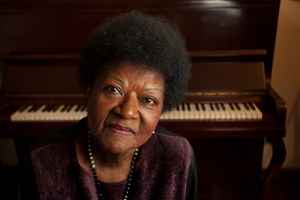 Alaide Costa Source: Carta Capital |
Born in Brazil in 1935,
vocalist,
Alaíde Costa,
began singing on radio at age thirteen. She graduated to stage in the early
fifties. IMMuB [Discos 4] has Costa issuing 'Tens Que Pagar'/'Nosso Dilema'
on Mocambo 15.050 in 1956. 'Tarde Demais'/'C'est La Vie' followed in '57 on Odeon
14.240. Come titles like 'Conselhos' (Odeon 14.320) and 'Domingo de Amor'
(Odeon 14.369) in 1958. Costa's
first LP was for RCA Victor in 1959: 'Gosta de Voce', followed by 'Alaide
Canta Suavemente' in 1960. She composed the music for 'Afinal' released in
1963. Highlighting the seventies was 'Coracao' issued in 1976 w support by
João Donato (piano), Nelson Angelo (acoustic guitar), Toninho Horta
(electric guitar), Novelli (bass) and drummer, Robertinho (Roberto Da
Silva). Come 'Águas Vivas: Alaide Costa Canta Herminio Bello De Carvalho' in
1982. The nineties saw her recording a couple albums
w classical pianist, João Carlos Assis Brasil: 'Alaide Costa|João Carlos
Assis Brasil' (Movieplay BS 260
in 1995) and 'Voz &
Piano' (Lua Music LUA
150 in 2006). Into the new millennium she joined
Johnny Alf on a few duets
included on the 2003 release of 'Fim de Semana em
Eldorado' by German guitarist, Paulo Morello, and Danish flautist and
saxophonist, Kim Barth. The second decade brought 'Canções de Alaíde' in
2014 followed by 'Alegria é Guardada em Cofres, Catedrais' com Toninho Horta
in 2015. On 23 March of 2018 Costa performed a concert of duets w Claudette
Soares at Teatro Itália in São Paulo to result in '60 Anos De Bossa
Nova'. Yet active as of this writing, Costa's starship included relatively
few recordings for a career stretching well over half a century, having
released only 22 albums per the most complete discography known of Costa's
oeuvre at IMMuB [Discos 4]. References: 1,
2,
3.
Discos: 1,
2,
3,
4,
5. Alaíde Costa 1956 Composition: Airton Amorim/Alaíde Costa Alaíde Costa 1957 Composition: Hélio Costa/Raul Sampaio Alaíde Costa 1965 Album Alaíde Costa 1969 Filmed live w Johnny Alf Composition: Johnny Alf Alaíde Costa 1973 Alaíde Costa e Oscar Castro Neves Album Alaíde Costa 1976 Composition: Milton Nascimento Album: 'Coracao' ('Heart') Alaíde Costa 1992 Alaíde Costa 1998 Television broadcast Music: Antônio Carlos Jobim Lyrics Portuguese: Vinícius de Moraes Lyrics English: Norman Gimbel Alaíde Costa 2001 From 'Rasguei a Minha Fantasia' Composition: David Nasser/Jota Júnior Composition: Lamartine Babo Alaíde Costa 2005 Filmed live Composition: Cristovão Bastos Hermínio Bello de Carvalho Alaíde Costa 2006 Filmed live in London Music: Antônio Carlos Jobim Lyrics: Vinícius de Moraes Alaíde Costa 2013 Filmed live with Adyel Silva Composition: Alaíde Costa/José Marcio Pereira Filmed live with Ary Barrosa Television broadcast Composition: Luvercy Fiorini/Oscar Castro Neves
|
|
|
Maysa Matarazzo,
generally known as simply Maysa,
was born in São Paulo or Rio de Janeiro in June 1936. Composing at age
twelve, Matarazzo was a bossa nova vocalist who also delivered the Brazilian
variety of torch song (see
Helen Morgan), the fossa,
a niche genre predating the bossa nova. She marred
into wealth at age eighteen, one André Matarazzo Filho who was a descendant
of Count Francesco Matarazzo. Matarazzo was
pregnant and singing advertising jingles when opportunity arose to record
her first album. Waiting until her son, Jayme, was born, she then recorded 'Convite
para Ouvir Maysa' ('Invitation to Listen to Maysa') for issue in 1956. Three
more volumes of that title would appear in the fifties. There
were problems, however, with Matarazzo's marriage, such as her husband not
wishing her to pursue a career in music, which saw divorce in 1956 as well.
She thereafter went through a string a lovers, including producer, Ronaldo
Bôscoli, which didn't assist her relationship with
Nara Leão a lot, to whom Bôscoli was engaged when
Matarazzo came along. A little less securely on her own, 1957 was a big year
for Matarazzo, making her debut appearances on television, working at the
Oásis and Cave nightclubs in Rio de Janeiro and releasing her second album,
'Maysa'. Four more LPs with that elegant title would follow in the sixties and
seventies. After a European tour in the sixties Matarazzo moved to Spain to
live with her second husband, producer, Miguel Anzana. Returning to Brazil
in 1969, Matarazzo performed variously in Rio de Janeiro and Sau Paulo, dipped
into cinema again, then took roles in soap operas, also composing for such. Her
career was swinging when she suddenly died on 22 January 1977 in an auto
accident on the Rio-Niterói Bridge. References: 1,
2,
3
Discos: 1,
2,
3,
4,
5,
6.
IMDb.
Documentaries: 'Maysa: Studies'
(TV Cultura 1975); unknown.
Interviews: Aramis Millarch 1976 (final).
Facebook tribute.
Biblio: 'Maysa'
by Lira Neto (Editora Globo 2007). Maysa 1956 From 'Convite para Ouvir Maysa' Debut album All comps by Maysa Maysa 1957 Album Maysa 1958 Composition: Maysa LP: 'Convite para Ouvir Maysa N°. 2' Meu Mundo Caiu (My World Fell) Composition: Maysa LP: 'Convite para Ouvir Maysa N°. 2' Film Composition: Maysa Maysa 1966 Ne Me Quitte Pas (Do Not Leave Me) Composition: Jacques Brel 1959 Maysa 1970 Ando Só Numa Multidão de Amores 'Ando Only Loves a Crowd' Album Maysa 1972 Palavras, Palavras (Words, Words) Com Raul Cortez Composition: Giancarlo Del Re/Gianni Ferrio Leo Chiosso/Maysa
|
 Maysa Matarazzo Source: Radio Nacional FM |
|
|
Born Antonio Candeia Son in 1936 in Lagoa da Canoa, Alagoas,
Brazilian arranger, composer and multi-instrumentalist,
Hermeto Pascoal, played accordion
as a youth as well as on what are thought to be his first recordings in
1956, 'Tim Tim por Tim Tim' and 'Adeus, Maria Fulo' on the album,
'Hallucinating Rhythms', by Ritmos Alucinantes. He also played accordion on
'Batucando no Morro' ('Beating at the Mount') in 1958, an LP by tambourine
player, Pernambuco do Pandeiro, issued in 1960. Pascoal had begun his career
in radio in 1950 in Recife. During his early radio days he also played in a
trio with his older brother, José Neto, called O Mundo Pegando Fogo (The
World On Fire). By the time he moved to Sao Paulo in 1958 he was performing
on piano as well. He there made the instruments he played a group by adding
flute. Pascoal played flute and piano on the next albums on which he
appeared: 'Roteiro Noturno' ('Nocturnal Route') in 1964 by Mauricy Moura, 'Conjunto
Som 4' ('Sound Set 4') in 1964 and 'Em Som Maior' ('In Greater Sound') by
the Sambrasa Trio in 1965. In 1967 he surfaced on 'Quarteto Novo' with
percussionist,
Airto Moreira. In 1969 Pascoal
played flute on 'Brasilian Octopus' before joining
Moreira and
Flora Purim in the United States,
they preceding him in 1967.
Moreira and
Purim were married by then, Pascoal
as well since his radio days, to have six sons by Ilza da Silva. Among
recordings to which Pascoal contributed in the latter sixties was the rare
bossa jazz LP, 'The Real Bobby Mackay' (RCA Victor BBL-1465
*) issued in '68
for which he arranged and played piano. He joined
Moreira and
Purim in Los Angeles in 1970
toward 'Natural Feelings' released in
1970 and 'Seeds on the Ground' in 1971. Pascoal's visit to the States was
a productive one: he also joined Miles
Davis on 'Live Evil' (Columbia '71),
Donald Byrd on 'Electric Byrd
(Blue Note '70), Duke Pearson on
'It Could Only Happen with You' (Blue Note '70,)
Edu Lobo on 'Cantiga de Longe' (Elenco
'70) and
Tom Jobim om 'Tide' (A&M '70). Add 'Sergio Mendes Presents Lobo' (A&M
'70). Pascoal issued his first name album in the United States in 1972:
'Hermeto'. He was back in Brazil, however, to record 'Música Vivre de
Hermeto Pascoal' in 1973, his first name LP in his homeland. On an
unidentified date in 1976 he recorded what would get released in 2017 as 'Viajando
Com O Som' [*], produced by Pascoal. Pascoal
returned to the US in 1976 to work again with
Moreira and
Purim. The latter seventies saw him
back in Sau Paulo as well as touring internationally to Switzerland and
Tokyo. He formed his ensemble for experimental music, Hermeto Pascoal e
Grupo, in 1981, a project he ran until 1993. He has since been hugely popular in Brazil, releasing over twenty
albums as a leader while contributing to those of other of Brazil's finer
musicians such as 'Serenata' [*] released by Mike Marshall and Jovino Santos
Neto in 2003, compositions by Pascoal along w bass flute and melodica. He
also married pianist and singer, Aline Morena [b '79 1,
2,
3], in 2003 until 2016.
They released 'Chimarrão com Rapadura' together in 2006. Among highlights in the second decade of the 21st century was Pascoal's
brass band release
of 'The Monash Sessions' [1,
2] in 2013, compositions and
arrangements by himself. His more recent issue of 'No Mundo Dos Sons'
[1,
2] in
2017 arrived w an ensemble of André Marques (piano also), Jota
P. (woodwinds), Itiberê Zwarg (bass), Ajurinhã Zwarg (drums) and Fabio
Pascoa (ercussion also). Living in Curitiba, Paraná, Pascoal is yet active
performing with either his smaller ensemble or big band [*].
References: 1,
2,
3,
4.
Discos: 1,
2,
3;
4;
Lord (leading 80 of 116);
select.
Compositions.
Select YouTube.
Reviews.
Interviews: Tom Phillips 2011;
NPR Morning Edition 2017.
Art by
Pascoal. Facebook. Further reading:
Helen Brady;
Andrew Connell (extensive);
Bruce Gilman;
Roberto Muggiati.
Other profiles *. Hermeto Pascoal 1958 From 'Batucando no Morro' ('Beating at the Mount') LP by Pernambuco do Pandeiro Composition: Luis Antônio/Oldemar Magalhães Composition: Sivuca Hermeto Pascoal 1965 LP by the Sambrasa Trio Piano/flute: Pascoal Bass/ harmonica: Humberto Clayber Drums: Airto Moreira Hermeto Pascoal 1969 LP by Brazilian Octopus Hermeto Pascoal 1970 LP by Edu Lobo Violin/guitar/vocals'arrangements: Edu Lobo Piano/flute: Pascoal Drums: Cláudio Slom Percussion: Airto Moreira Airto Moreira LP Vocals: Flora Purim Hermeto Pascoal 1971 Composition: Pascoal Miles Davis LP: 'Live-Evil' Hermeto Pascoal 1972 Album Hermeto Pascoal 1973 A Música Livre de Hermeto Pascoal Hermeto Pascoal 1977 LP All comps by Pascoal Hermeto Pascoal 1977 Filmed live Hermeto Pascoal 1979 Hermeto Pascoal 1980 LP All comps by Pascoal Hermeto Pascoal 1982 LP (reissue 1989) Hermeto Pascoal 1990 Album Hermeto Pascoal 1992 Hermeto Pascoal 2004 Hermeto Pascoal 2011 Filmed live Composition: Pascoal
|
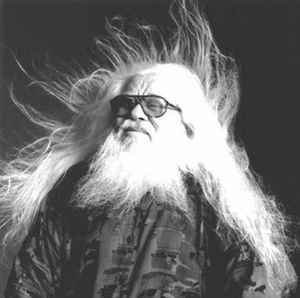 Hermeto Pascoal Photo: Divulgação Source: Night Flight |
|
|
Born Antonio Candeia Son in 1935 in Rio de Janeiro, Brazil,
samba singer,
Candeia (Candle) grew up in the
environment of one of the largest samba schools [1,
2],
the Portela [1,
2]. Elemental to
much Latin recording in Brazil, samba schools
are what populate the Carnival parade in Rio de Janeiro each year, currently
about 200 of them, each with their own float competing for various honors.
Some schools are huge with wings in themselves, and can have over three thousand
performers during the Carnival parade. The Portela was founded the year of
Candeia's birth from a school six years older, and named the Vai Como Pode
(Come as You Can or Go as You Will) in 1931. The name, Vai Como Pode, had
been pronounced inappropriate by the newly formed Carnival association, the
Delegation of Customs and Entertainment, thus Portela. Howsoever, Candeia
began composing at age thirteen. In 1953 his samba, 'Six Magnas Dates',
written with Altair Marino, was a portion of Portela's victory in all
categories at Carnival that year. In 1957 the samba composed by Candeia,
Waldir de Souza and Picolino Portela won Carnival, 'Legacy of King John VI'. That
was the year Candeia appeared on the LP: 'A Vitoriosa Escola de Samba da
Portela' with Casquinha, Monarco and Manacéia. Meanwhile needing an income, Candeia
became a cop at age 22 ('57). In the early sixties Candeia formed the
Messengers (of) Samba with Cone and Picolino Portela, releasing the album,
'Messengers Samba', in 1964. Accounts have Candeia going by the book as a
police officer, apparently overmuch with a tendency toward abuse.
That all changed in December of 1965 upon leaving a party obfuscated,
crashing
into a fish truck, discovering his fender bent, then angrily unloading his gun
into the vehicle's
tires [*]. When an Italian in the back of the truck returned
five shots Candeia went down, one hitting bone that left him paralyzed waist down
the rest of short life. Candeia released his first album, 'Candeia' ('Lamp') in 1970. Such the
tragedy as being confined to a wheelhair naturally had a large influence on
Candeia's composing. His issue of 'Filosofia Do Samba' in 1971 contained his
beautiful 'Saudade' composed w Arthur Poerner
[see saudade: 1,
2,
3,
4,
5,
6].
Other albums included 'Seguinte...: Raiz' ('71), 'Samba de Roda' ('75), 'Light of
Inspiration' ('77) and 'Axe - Good
People Do Samba' ('78 posthumously by a matter of days). Candeia had founded
the samba school, Quilombo [1,
2,
3,
4,
5,
5],
in latter 1975. In 1978 he published a history of samba schools titled,
'Samba School: The Tree That Forgot the Root', before dying of kidney
infection on 16 November that year. References: 1,
2,
3,
4,
5,
6.
Discos: 1,
2,
3,
4,
5.
Compositions: 1,
2.
Select YouTube: 1,
2,
3,
4,
5.
Reviews.
Documentaries: 'Eu Sou Povo' ('I am the People') 2008:
1,
2,
3,
4;
'80 Anos de Candeia 37 de Saudade' (?) *.
Further reading: Gonçalo Júnior (samba and the Negro movement);
Portela Web;
various.
Bibliography:
'Luz da Inspiracao' w CD by Joao Babptista Vargas *.
Candeia 1957 From 'A Vitoriosa Escola de Samba da Portela' Candeia contributes to compositions and vocals Vocals also by Casquinha, Monarco & Manacéias Composition: J. Barbosa/Ventura Composition: Candeia Picolino da Portela Waldir de Souza (Waldir 59) Composition: Francisco Santana Hildmar Diniz (Monarco) Composition: Milton Casquinha Messengers (of) Samba 1964 Composition: Candeia Album: 'Messengers do Samba' Candeia 1970 Candeia 1971 Album Album Candeia 1975 Candeia 1977 Candeia 1978
|
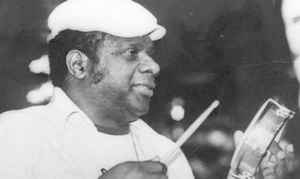 Candeia Source: Grupo Portelamor |
|
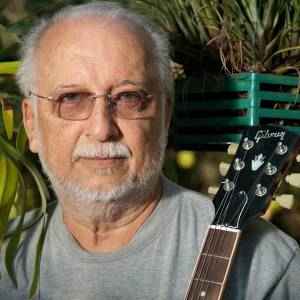 Roberto Menescal Source: Rolling Stone |
Among the major players in early bossa nova was composer/guitarist,
Roberto Menescal, born in 1937 in
Vitória, Brazil. He began his professional career backing
Sylvia Telles on tour about
Brazil in 1957. He and
Carlos Lyra began teaching guitar in 1958 in Rio de
Janeiro, one his students,
Nara Leão. In 1958 he formed the jazz-samba group
(bossa nova), Conjunto Roberto Menescal, among the earliest in Brazil. That
group recorded an EP of four tracks that year, titled 'Bossa é Bossa', for
issue the next year. Menescal was with
Lyra and
Telles at the Clube Hebraica
nightclub in Rio giving a show inadvertently advertised as "bossa nova" by a
club secretary, citing 1958 the year "bossa nova" came to be. 'Jura de
Pombo' was Menescal's first composition to be recorded, that by Alaíde
Costa. He toured heavily during the explosion of bossa nova in the early
sixties, performing at Carnegie Hall as early as 1962 with
Lyra and
Tom Jobim. He recorded
his debut LP in Rio de Janeiro in 1963, 'A Bossa Nova De
Roberto Menescal' [Discogs].
Come 'Bossa Session' in 1964 [Discogs]. He issued 'The Boy from Ipanema
Beach' in Canada and the United States in 1965 on Kapp LP1418. 'Soul Beat
Brazil' followed in '66 on Kapp KL1495. Menescal began working as
an arranger and producer for PolyGram in the mid sixties, remaining w that
outfit for 16 years. He also began producing independently in the sixties.
He partnered w
Elis Regina from '68 to 1970. Menescal did
session work in the coming years with numerous performers while producing
yet others, also working on soundtracks for film and soap operas.
After an international tour with
Leão in 1985 he concentrated less on producing,
the more on his own solo career. He joined guitarist and singer, Wanda Sa, in
1996 on 'Swingueira' (Albatroz COCB-53513). Menescal's first issue in the
new millennium arrived in 2000 on 'Bossa Evergreen'. 2001 saw him on
'Brasilidade' [1,
2,
3] w his son, bassist, Marcio Menescal, that the first by the
electronic bossa nova trio, Bossacucanova [1,
2,
3,
4]. He partnered with
guitarist, Eddy Palermo, on 'Bossa Jam Session' in 2003 [Discogs],
also featuring guitarist and singer, Cris Delanno, on 'Eu & Chis' (Albatroz)
that year. Menescal joined Bossacucanova again on the release of 'Uma Batida Diferente'
in 2004. He arranged and contributed guitar to Delano's eponymously titled 'Cris
Delanno' in 2006. Menescal was back w Bossacucanova yet again as recently as the
release of 'Bossa Got The Blues' in 2019. Having led or co-led a minimum of 30 albums
during his career, Menescal yet actively performs as of this writing, '80
Anos' also released as recently as 2019 on Som Livre 4631-2.
References: 1,
2,
3.
Discos: 1,
2,
3,
4,
5, Lord (leading 3 of 13 sessions).
IMDb.
Select YouTube.
Lyrics. Roberto Menescal 1962 Composition: Roberto Menescal/Ronaldo Boscoli LP: 'Bossa Nova at Carnegie Hall' Roberto Menescal 1963 LP by Lúcio Alves Compositions: Roberto Menescal/Ronaldo Boscoli Roberto Menescal 1964 With Paul Winter Compositions: Roberto Menescal Luís Fernando de Oliveira Freire Roberto Menescal 1966 Composition: Tom Jobim Roberto Menescal 1985 Vocals: Nara Leão Composition: Maurício Einhorn/Durval Ferreira/Bebeto Album: 'Um cantinho, um Violão' Roberto Menescal 1992 Composition: Roberto Menescal Album: 'Ditos & Feitos' Roberto Menescal 2001 Filmed concert With Wanda Sa & Marcos Valle Roberto Menescal 2006 Vocal: Cris Delanno Composition: Alejandro Sanz Roberto Menescal 2011 Filmed live w Cris Delanno & Andy Summers: Composition: Gordon Sumner (Sting)('Airplane Samba') Music: Tom Jobim Lyrics Portuguese: Tom Jobim Lyrics English: Gene Lees Roberto Menescal 2019 With Bossacucanova Composition: Roberto Menescal/Bossacucanova Album: 'Bossa Got the Blues'
|
|
|
Elemental to any history of bossa nova is composer and guitarist,
Carlos Lyra, born in 1939 in Rio de
Janeiro, Brazil. His initial composition to be recorded was 'Menina' by
Sylvia Telles in 1954. Lyra was
performing with
Telles and
Roberto Menescal at the Clube Hebraica
nightclub in Rio when a club secretary inadvertently billed the show as "bossa nova",
making 1958 the year "bossa nova" came to be insofar as the use of the term.
Lyricist, Ronaldo Bôscoli, and he enjoyed a greatly productive partnership
in the latter fifties. In 1959
Joao Gilberto recorded three of
Lyra's compositions for release on the album, 'Chega de Saudade'. Some would
cite that as the first bossa nova album. Lyra wasn't present at the session
though. He was recording his own first album at the time, 'Bossa Nova', its
release delayed until May 1960. Lyra found an important comrade in
Vinicius de Moraes in the
early sixties, they pairing up on numerous compositions. Beginning to
compose for film and theatre in the early sixties as well, Lyra also
performed at Carnegie Hall on 21 Nov 1962 w the Oscar-Neves Quartet, his
composition, 'Influencia Do Jazz', released that year on the album by
various, 'Bossa Nova No Carnegie Hall' (Audio Fidelity AFLP 2101) [*].
Come his LP, 'Depois do Carnaval', in 1963 [1,
2,
3]. Unable to come up w a specific date, Lyra joined alto saxophonist,
Paul Winter, on 'The Sound of Ipanema' in the summer of 1964 w
Sérgio Mendes
(piano), Sebastiao Neto (bass) and Milton Banana (drums). The release of
that on Columbia CL 2272/CS 9072 is advertised in the 17 Oct 1964 issue of
'Billboard'. One wouldn't have seen Lyra in
a ball cap or t-shirt promoting some corporation, as it was 1964
that he refused to advertise Mentex chewing gum for free [*]. 1964 was
also the year of the coup d'état in Brazil in March and April, behooving Lyra
to move to New York City where he replaced
Joao Gilberto
performing w
Stan Getz at the time [*]. Though Lyra appeared at the Newport Jazz Festival in
Rhode Island on 3 July 1964 with Getz, he wasn't among personnel on
the 2014 release of
Getz' 'Live at Newport 1964' [*].
In 1965 Lyra contributed guitar to 'Song of the Jet' (Tom Jobim-Gene Lees)
on
Tony Bennett's 'If I Ruled the
World: Songs for the Jet Set'. July 4 of '65 found him w
Getz again at the Newport Jazz Fest,
tracks from that stored at Wolfgang's Vault #286 per Lord. Soon after, Lyra
followed among
Getz' crew to Tokyo where a concert taped on 18 July of '65
wrought only one tune issued,
Phil Woods' 'Waltz for a Lovely
Wife' on 'Sweetie Pie' (Philology W 40.2) in 1992 [*].
Upon tour w
Getz to Mexico in 1966 Lyra decided to
stay there for the next five years, joining earlier comrades from Brazil who
had left for Mexico rather than the US. Lyra's career in Mexico included
composing for films. Back in Brazil by the early seventies, Lyra recorded 'Herói de Medo' ('Fear's
Hero') in 1974. But as it was censored by the junta he moved to Los Angeles
for a couple of years. He there studied astrology and partook in primal
scream therapy. Returning to Brazil permanently in 1976, three years later
he directed a choir of 5000 students at the '79 Congress of the UNE (União
Nacional dos Estudantes) [*]
performing the UNE hymn composed by Lyra and
Vinicius de Moraes
back in 1963. He was back in Japan again in 1988, now w Leila Pinheiro and
the
Quarteto em Cy. Of
three books that Lyra has published, 'Songbook' (Luminar Editora) arrived in
1994 [*].
Come 'Harmonia Prática da Bossa-Nova' (Irmãos Vitale) in 1999 [*].
Having led or co-led above thirty albums, he commenced the new millennium w
'Sambalanco' [*]
in 2000. Come '50 Years of Bossa Nova' [*]
in 2005, '50 Anos de Musica' [*]
in 2008 and 'Os Bossa Nova' [*]
in 2011. In the meantime he had joined Aldir Blanc toward the 2010 release
of 'Era No Tempo Do Rei'. A nice example of the kind of performance Lyra
gave in his latter career is documented below per 2012 for Instrumental Sesc
Brasil [1,
2,
3] with Ricardo Costa (bateria), Adriano Giffoni (baixo), Reginaldo
Vargas (percussão), Fernando Merlino (piano), Dirceu Leite(sax/flauta/clarinete)
and Vander Nascimento (trompete/flugel). Yet active as of this writing, Lyra's most recent release was 'Alem Da Bossa'
(no label) [*]
in 2019. References 1,
2,
3,
4.
Concerts.
Compositions.
Lyrics.
Discos: 1,
2,
3,
4,
5,
6.
IA.
Interviews: Marc Myers 2015.
Further reading: Arnaldo Contier (composition and politics in Brazil);
Mauro Ferreira;
James Gavin;
Marc Myers;
Sousa/Schiavo. Carlos Lyra 1960 Carlos Lyra 1963 Carlos Lyra 1964 Alto sax: Paul Winter Composition: Lyra/Ronaldo Bôscoli/Dan Haley LP: 'The Sound of Ipanema' With Dulce Nunes Composition: Lyra/Vinícius de Moraes LP: 'Pobre Menina Rica' Carlos Lyra 1969 LP: 'Sarava!' Carlos Lyra 1991 Programa Ensaio (Test Program) Filmed live Carlos Lyra 2012 For Instrumental Sesc Brasil Filmed live Composition: Lyra/Geraldo Vandré Composition: Lyra/Joyce Moreno Composition: Lyra/Ruy Guerra Composition: Lyra/Ruy Guerra Lyra/Gianfrancesco Guarnieri Composition: Lyra Composition: Lyra/Vinícius de Moraes Composition: Lyra/Vinícius de Moraes
|
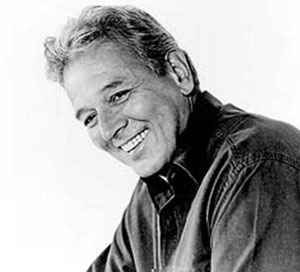 Carlos Lyra Source: Vera Barbosa |
|
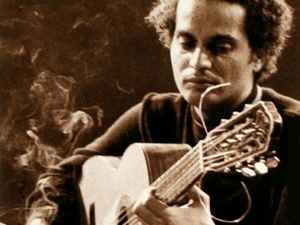 Baden Powell Source: G2E |
Born in 1937 in Rio de Janeiro, Brazil, guitarist,
Roberto Baden Powell de Aquino, was named
after Scouting founder, Robert Baden-Powell [1,
2,
3,
4]. (The Scouting movement - Cub
Scouts, Boy Scouts, Girl Scouts, etc. - had been founded in the first
decade of the 20th century.) Presumably well-prepared, Powell was also a child virtuoso playing professionally
at age fifteen. Though he was familiar with North American jazz the greater
influence was the music of his own culture in Brazil, such as samba and choro. By the
mid fifties he was playing Brazilian jazz in hotels, believed to have
recorded for the first time in 1959 for the Philips label in Brazil
(630 415 L) on the album, 'Monteiro de Souza e Sua Orquestra Apresentando
Baden Powell e Seu Violão'. Sources variously give '59 or '61 for its
release, but Brazil on Guitar [Discos 3] drives down the middle of the road
at 1960. Powell also issued 'Samba Triste' in 1960, music composed by himself with lyrics by Billy
Blanco, with vocalist, Lúcio Alves.
The LP, 'Um Violão Na Madrugada', saw record shelves in 1961. Collaborations
with lyricist and writer,
Vinicius de Moraes, began in 1962,
a couple appearing on recordings by US flautist,
Herbie Mann, upon a visit to Rio
in October of 1962 toward both 'Do the Bossa Nova with Herbie Mann' and
'Latin Fever'. In 1963 Powell
recorded tracks for 'A Vontade' ('Make Yourself Comfortable') released that
year on Elenco ME-11. He is thought to have first toured to Europe in 1963
where he performed classical music by such as
Ravel
and his own compositions at the Olympia Theater in Paris. His first volume
of 'Le Monde Musical de Baden Powell' went down between April and June of
1964, after which he
spent several months in Bahia, Bahia, researching African heritage and
religion at the roots of samba, arriving to another compositional phase he
called Afro-samba, well exampled on the 1966 Forma issue of 'Os Afro Sambas'
w all music by himself and lyrics by
Moraes. He composed the
bossa nova, 'Samba de Ben?ão', for the 1966 film, 'Un Homme et Une Femme'
written and directed by Claude Lelouch. By the end of 1966 Powell had
recorded ten albums during his first seven years as a recording
artist. January of 1969 saw him in Paris to square away his second volume of
'Le Monde Musical de Baden Powell'. With all the traveling Powell did back
and forth across the Atlantic during the sixties the date of his actual move
there widely varies. He yet lived in Brazil when he their met Pierre Barouh
on a trip to Rio to make the film, 'Saravah', to which Powell contributed
all compositions. In any case, he was living in France by 1970, recording
'Baden Powell Quartet: Tristeza - Live 1970' in Germany that year [see
Coqueiro Verde 78989943043252 *].
Significant in the eighties was his move to Baden-Baden Germany in 1983. His
homeland calling again, Powell laid out 'Decembre 94: De Rio a Paris' in
Germany in Dec of '94 and 'Jan of '95 before heading back to Brazil. Powell
and his wife had produced two sons who were young musicians by that time,
Marcel Powell [guitarist: 1,
2] and
Philippe Baden Powell [pianist: 1,
2,
3]. Powell
and his sons got together on 14 July of 1995 toward 'Baden Powell & Filhos',
after which eight days later Baden was already back in Europe again to
record 'Live at Montreux' on 22 July. He died only five years later of
pneumonia on 26 September 2000 in Rio de Janeiro [obits: 1,
2,
3], having released well above
fifty albums. His last live session had gone down on 23 July 2000 in New
York City toward 'O Eterno' (Verita Note VQCD 10020). His final studio
recording was logged in Sao Paulo on 18 August 2000 toward 'Joao Pernambuco
e O Sertao' (SESC 199.008 497). Brazzil [Ref 4] has him giving his final
performance on the same date at the Minas Tênis Clube some 360 road miles
north of Sao Paulo in Belo in Horizonte (capital of the State of Minas
Gerais). References: 1,
2,
3,
4,
5,
6.
Discos: 1,
2,
3 (extensive),
4,
5,
6,
7,
8,
9.
IMDb.
Compilations: 'Tempo de Musica'
1960-2000 Iris Music 3001 967 in 2006.
Compositions: 1,
2,
3 (film).
Other composers covered.
Transcriptions.
Guitars.
Archives.
Bibliography.
Other profiles: 1,
2,
3. Per 1977
below,
the full title of the album is 'Canta Vinícius de Moraes e Paolo César
Pinheiro'. Baden Powell 1960 Vocal: Lúcio Alves Composition: Baden Powell/Billy Blanco Baden Powell 1961 Composition: Ary Barroso Composition: Baden Powell Album: 'Um Violão Na Madrugada' Baden Powell 1963 Composition: Baden Powell/Vinicius de Moraes LP: 'Baden Powell Swings with Jimmy Pratt' Baden Powell 1965 Baden Powell 1966 Baden Powell 1967 Filmed live Music: Tom Jobim Lyrics Portuguese: Newton Mendonça Lyrics English: Jon Hendricks 1st issue: Joao Gilberto 1960 Baden Powell 1968 Baden Powell 1974 Baden Powell 1977
|
|
 Nana Caymmi Source: Arte 40 |
This profile is an old rough draft that comes as is. Better
version at
Nana Caymmi. Born Dinahir Tostes Caymmi in 1941 in Rio de Janeiro,
Brazilian popular vocalist,
Nana Caymmi, was daughter to
Dorival Caymmi. In 1959 she
married a doctor who took her to Venezuela until divorce in '66 found her
back in Brasil. Caymmi had surfaced on vinyl for the first time in 1961 on
her father's album for Odeon, 'Acalanto'. In 1964 she contributed vocals to
a few titles on
Dorival's 'Caymmi Visita Tom' (Elenco
M-17) w
Tom Jobim at
piano. Caymmi released three LPs titled 'Nana' during her career, the first
produced in 1965
by Aloysio De Oliveira for the Elenco label with arrangements by Oscar
Castro-Neves. Two more with that title were issued in '77 and '85. Once living in Brazil again she became a part of the Tropicalia
[1,
2,
3,
4,
5,
6] movement
bearing similarity to the youth movement in the U.S. with its so-called
flower children and hippies. Others identified w that movement include
Gilberto Gil,
Jorge Ben Jor,
Gal Costa,
Caetano Veloso,
Tom Zé and
Os Mutantes. In 1967 Caymmi married U.S. pianist,
Gil Evans, fo, for a year. She released her
first album called, 'Nana Caymmi' in 1973, two more with that title to
follow in '75 and '79. Nana contributed vocals to 'Velho Piano' on her
father's album, 'Dori Caymmi', issued in '88. The early decades
of Caymmi's career were livable, but she didn't score a gold album (100,000
copies) until 'Bolero' in 1993, the first of several. She was named Best
Female Singer by the APCA (Associação Paulista de Críticos de Arte) in '95
and '98. Among highlights in the new millennium her issue of 'Sem Poupar
Coração' (Som Livre 1408-2) in 2009 [1,
2].
'Caymmi' in 2013 was a joint issue w
Dorival and Caymmi's brother,
Danilo (Dori) Caymmi [1,
2,
3,
4].
Having issued or jointly issued above thirty albums, Caymmi's most recent as
of this writing was 'Canta Tito Madi' in 2019 by the Biscoito Fino label.
References: 1,
2.
Dicos: 1,
2,
3,
4.
IMDb.
Nana Caymmi 1961 Composition: Dorival Caymmi Dorival Caymmi LP: 'Acalanto' Nana Caymmi 1964 Composition: Tom Jobim/Vinicius de Moraes LP with Dorival Caymmi: 'Caymmi Visita Tom' Nana Caymmi 1965 Composition: Tom Jobim/Vinicius de Moraes Album: 'Nana' NNana Caymmi 1975 Album Nana Caymmi 1976 Album Nana Caymmi 1977 Album NNana Caymmi 1979 Album Nana Caymmi 1981 Album Nana Caymmi 1987 Album Recorded 1983 Piano: Cesar Camargo Mariano Nana Caymmi 2011 Television boradcast Nana Caymmi 2013 Filmed live With Danilo e Dori Caymmi
|
|
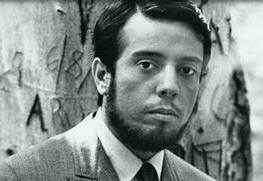 Sergio Mendes Source: Latino Life |
Born in 1941 in Rio de Janeiro, Brazil,
composer and pianist,
Sérgio Mendes, had a doctor for a
father. He attended conservatory for a time with intentions of becoming a
classical pianist. But the jazz, samba and new form that was the twain,
bossa nova, that were being played in nightclubs owned the greater gravity.
He performed at that time with
Tom Jobim, a
mentor to him, as well as with US musicians brought to the major hub of
bossa nova that Rio de Janeiro was. He formed the Sexteto Bossa Rio to
record the instrumental LP, 'Dance Moderno', in 1961. He then joined
Herbie Mann for a concert in Rio
de Janeiro on October 16, 1962 for 'Batida Differente' and 'Influenza de
Jazz', etc.. He then toured to Europe
before a performance at Carnegie Hall on November 21 ('One Note Samba'),
followed in December by sessions with
Cannonball Adderley for such as
'Clouds' and 'Sambop'. Mendes appeared on the
'Ed Sullivan Show' in 1963. The Musicians Union was allowed him only one club
date and one television show, so in 1964 he up and moved to the United States,
joined the union with the help of
Bud Shank and
Shelly Manne, and formed the
group, Brasil '65 to record a couple of albums. In 1966 Mendes formed Brasil '66.
Enter another
major figure in Mendes' career, trumpeter,
Herb Alpert, who had founded A&M Records
in 1962 with Jerry Moss. The issue of 'Herb Alpert Presents Sergio Mendes
and Brasil '66' was to go platinum, that containing a cover of Jorge Ben's, 'Mas Que Nada' (first
issued by
Ben in 1963). Now that Mendes'
name was a household word in the United States his career went stellar in the
latter sixties, also performing for Presidents Johnson (April
'67) and
Nixon (Jan '71). He lit his path into the seventies at the World Expo in Osaka, Japan,
in June of 1970. Collaborations with
Stevie Wonder would occur in
the seventies, as well as the formation of Brasil '77. May of 1982 saw
another performance at the White House, now for President Reagan. The
eighties also brought further collaborations with Joe Pizzulo, Leza Miller and Lani Hall.
Mendes received a Grammy in 1993 for his 1992 album, 'Brasileiro'.
He received a Latin Grammy in 2005 for Lifetime Achievement, in 2006 for his
cover of
Jorge Ben's 'Mas que
Nada'. In 2008 it was for his title,
'Acode', issued on his album, 'Encanto' [1,
2],
the same year he joined a host of other musicians in the lost of master
tapes to the Universal Studios fire where stored. Mendes' title, 'Bom Tempo',
won a Latin Grammy in 2010, a Grammy in 2011. His had been
among master tapes lost to the Universal Studios fire in 2008. His song,
'Real in Rio', received an Academy Award in 2012. Mendez has recorded prolifically, issuing nearly fifty albums, his latest
release was 'Magic' in 2014. Mendes yet actively tours as of this writing.
References: 1,
2,
3,
4.
Discos: 1,
2,
3,
4,
5,
6.
IMDb.
IA.
Compositions.
Interviews: Luke McGarry 2009;
Russ Slater 2012.
Facebook.
Further reading: Concord;
Steve Thorn. Sérgio Mendes 1962 Composition: (João Theodoro) Meirelles Album: ' Você Ainda Não Ouviu Nada!' Composition: Tom Jobim/Newton Mendonça Album: 'Bossa Nova at Carnegie Hall' Sérgio Mendes 1964 With Tom Jobim Composition: Tom Jobim/Vinicius de Moraes Sérgio Mendes 1966 Herb Alpert Presents Sergio Mendes Album Television broadcast Composition: Jorge Ben Sérgio Mendes 1967 Television broadcast Composition: Jorge Ben Sérgio Mendes 1968 Album Title track by Lennon-McCartney Composition: João Donato Album: 'Look Around' Pradizer Adeus (To Say Goodbye) Composition: Edu Lobo/Torquato Neto/Lani Hall Album: 'Look Around' Sérgio Mendes 1973 Album Sérgio Mendes 1974 Album Sérgio Mendes 1984 Concert filmed in Vienne, France Vocals: Kevyn Lettau & Carol Rogers Sérgio Mendes 1992 Composition: Aldir Blanc/Carlos Escobar (Guinga) Sérgio Mendes 2014 Concert filmed in Vienne, France
|
|
|
Born Marcus inicius da Cruz e Mello Moraes in 1913 in Rio de Janeiro, Brazil,
writer and
vocalist,
Vinicius de Moraes, composed the
lyrics to numerous titles throughout this page. He attended the
Jesuit high school, St. Ignatius, before enrolling at the University of Rio
de Janeiro (now Rio de Janeiro State University) to study law and social
science. Upon graduating in 1933 he published his first two collections of
poetry, 'Caminho Para a Distância' ('Path into Distance') and 'Forma e
Exegese' ('Form and Exegesis'). He published his third book, 'Ariana, a
Mulher' ('Ariana, the Woman') in 1935. He was working as a film censor for
the Dept. of Education and Health when he left for England on a fellowship
to study English and English literature at Oxford. He continued publishing
in England until his return to Brazil in 1941 whence he began working as a
film critic for the newspaper, 'A Manhã' ('The Morning'), collaborated on
the literary journal, 'Clima' ('Climate') and was employed by the Banking
Employees' Institute of Social Security. In 1943 Moraes moved to Los Angeles
as vice consul for Brazil's Ministry of Foreign Affairs, also publishing ''Cinco
Elegias' that year, followed by 'Poemas, Sonetos e Baladas' in 1946. He
published a couple more books of poetry before living variously in Europe as
a government delegate, one such task to study the management of film
festivals such as in Cannes. In 1953 Moraes wrote the music for 'Quando tu
passas por mim' ('When You Pass By') with lyrics by Antônio Maria. They also
paired up to compose 'Debrado de amore a Sau Paulo' ('Debrado de amore a Sau
Paulo') the next year. The fifties would also see Moraes working as a
playwright before representing Brazil in France at UNESCO (United Nations
Educational, Scientific and Cultural Organization). The 1958
album, 'Canção do Amor Demais', by
Elizete Cardoso, consisted of compositions by Moreas
and Antônio Carlos Jobim.
That album is generally cited as the first bossa nova LP, also featuring Joao Gilberto
on a couple tracks. It was 1961 before Moraes began singing his
compositions, starting with 'Água de Beber', music by Jobim. He and Jobim
also collaborated on the album, 'Brasília - Sinfonia da Alvorada', issued
that year. After the Brazilian military coup d'état in 1964, ousting
President João Goulart, Moreas' was banned from civil employment in '69 as
an alcoholic. By that time, however, Moreas had a strong reputation in film
and relatively new, though successful, career in music. In 1974 he and Toquinho
released the first of several albums together:
'Vinícius & Toquinho'. As he toured Europe and Argentina Moraes assumed
a personal style with his audiences, casually bantering in four languages
while drinking Scotch whisky. With more than 400 compositions for a legacy,
Moraes died in Rio de Janeiro on 9 July of 1980. References: 1,
2,
3,
4,
5,
6.
Chronology.
Significant associates: musical,
other.
Discos: 1,
2,
3,
4,
5.
IMDb.
IA.
Books by Moraes: Good Reads: 1,
2;
poetry,
prose.
Poetry: 1,
2.
Lyrics.
Interviews: Narceu de Almeida Filho 1979.
Further reading: Eat Rio;
Tiro de Letra;
Kirsten Weinoldt.
Other profiles: 1,
2,
3. Vinicius de Moraes 1961 From 'Brasilia - Sinfonia da Alvorada' Music: Tom Jobim Text: Moreas Vinicius de Moraes 1966 Album Music: Baden Powell Text: Moreas Vinicius de Moraes 1967 Album Vinicius de Moraes 1971 Album with Toquinho Vinicius de Moraes 1978 Filmed live with Tom Jobim & Toquinho RTSI (Radio Television Swiss Italian) Vinicius de Moraes 1998 Album with Toquinho Vinicius de Moraes 1999 Filmed live
|
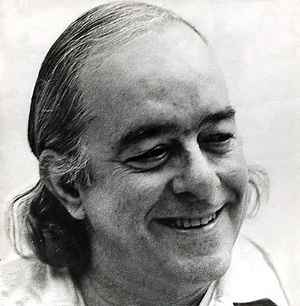 Vinicius de Moraes Source: LES |
|
|
Born Elis Regina Carvalho Costa in 1945 in Porto Alegre, in
southern Brazil, vocalist,
Elis Regina (aka Little Pepper), was singing for Rádio
Farroupilha on 'O Clube do Guri' at age eleven, next Radio Gaúcha. A few
years later she traveled the thousand miles from Porto Alegre to Rio de
Janeiro to record, 'Viva a Brotolândia' ('Long Live Teenage Land'), released
in 1961. 'Poema de Amor' followed the next year. Regina moved to Rio in '63,
briefly before Brazil's military coup in April of '64. Recording in rapid
succession, Regina's fifth album, 'Dois na Bossa', is thought to be the
first LP to sell over a million copies in Brazil, due largely to the single,
'Arrastão' ('Pull the Trawling Net'). She'd sang that song, composed by
Edu Lobo and Vinicius de Moraes,
at one of her more significant early performances, Brazil's initial
major pop festival ('Festival de Música Popular Brasileira') covered via radio and television, making her a national
star. As well, 'Dois na Bossa' is often used as a marker in samba's
evolution from bossa nova, having been about some ten years blending samba
with jazz, to MPB or, Brazilian Popular Music. Come 1966, age 21, Regina was
the highest paid performer in Brazil. In May of 1969 she crossed the
Atlantic to record 'Elis Regina in
London' [*].
She was off to Sweden in June for 'Aquarela do Brasil'
[*]
w harmonica player,
Toots Thielemans, and
Roberto Menescal at
guitar. Regina's most applauded issue of the seventies was
'Ellis & Tom' [Philips: 1,
2]
w Tom Jobim gone down in Los Angeles in 1974. She didn't like the issue of
'Elis Especial' [*] in 1979 but she owed Philips titles.
Here seems an apt place to back up to 1972 concerning another of Regina's more significant
performances, constrained under threat of jail to perform the
national anthem of the military government in a stadium gathered to
celebrate Brazil's "independence". For which she attracted a lot of friction
from leftist democratic movements. Albeit capitalism had made her rich, the rest of the population was
comprised of but instruments for the few. What had kept Brazil's military
regime in operation for some twenty years (64-85) was capitalism. Across the ocean in South Africa,
apartheid was being fed by capitalism. A socialist, Regina had
kept her music apolitical to that point, but getting compromised (with a
child to support) made her more expressively critical of the governing junta, she
eventually joining the democratic Worker's Party in 1980. Regina's last
studio album, 'Elis', was issued in 1980. Apparently alcohol, cocaine and
temazepam (prescribed for insomnia) are a dangerous combination, for that
was the mixture that killed Regina on 19 January 1982. In the two decades of
Regina's career she released over thirty albums. Her 1979 performance at the Montreaux Jazz Festival w Herman Pascoal was released posthumously in '82 on
'Elis Regina: Montreux Jazz Festival' [*]. as well as her
final recordings in 1981 on the live album, 'Trem Azul' [*]. Of her three
children, all to work in the music industry, vocalist, Maria Rita [1,
2,
3], would
begin her recording career in 2003 with her eponymously titled CD, 'Maria Rita'.
References: 1,
2,
3.
Chronology (alt).
Discos: 1,
2,
3,
4,
5,
6,
7.
IMDb.
Select YouTube.
Reviews.
Further reading: NPR;
Robert St-Louis: 1,
2.
Other profiles: 1,
2,
3,
4. Elis Regina 1961 Album Elis Regina 1962 Album Elis Regina 1968 Television program Elis Regina 1969 Composition: Baden Powell/Vinicius de Moraes Album: 'Elis, Como & Porque' Filmed live with Toots Thielemans Composition: Tom Jobim Elis Regina 1972 Album Filmed live Composition: Ivan Lins/Renaldo Monteiro de Souza Elis Regina 1973 Television broadcast Elis Regina 1974 Filmed live with Tom Jobim Composition: Tom Jobim All comps: music by Tom Jobim Elis Regina 1978 Television broadcast Composition: Tom Jobim Composition: Fermo Dante Marchetti/Armando Louzada Álbum: 'Transversal do Tempo' Filmed live Festival do Choro da Rede Bandeirantes Composition: Luiz Peixoto/Cândido Costa Henrique Vogeler/Marques Pôrto Composition: Adoniran Barbosa Album: 'Transversal do Tempo' Elis Regina 1979 Filmed live Montreaux Jazz Festival, Switzerland Composition: Tom Jobim Filmed live Montreaux Jazz Festival, Switzerland Music: Tom Jobim Lyrics Portuguese: Vinicius de Moraes Lyrics English: Norman Gimbel Elis Regina 1982 Final recording
|
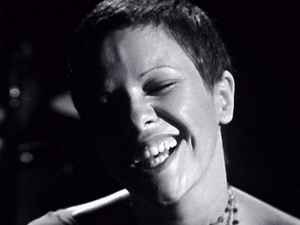 Elis Regina Source: Jim A Musiques |
|
|
Born in 1942 in Salvador, Bahia, Brazilian guitarist and singer,
Gilberto Gil Moreira, was conceived to a doctor,
his mother a teacher of elementary school. The latter presented him with an
accordion when he was ten, upon which he trained in classical music the next
four years. He began playing vibraphone when he joined his first band in
high school. He picked up the guitar a few years later and became attracted
to bossa nova. His first recordings were for JS Studios as a composer of
jingles in 1962. He also performed accordion that year on one
of his compositions, 'Bem Devagar' ('Slowly'), recorded by The Three Baianas (who would
become the
Quarteto em Cy). Additionally, he released
his first record, 'Povo Petroleiro'/'Coca Coca Lacerdinha' (English: 'Tanker
People' and the Carnival march, 'Scratch, Scratch, Lacerdinha'). It was
limited to a thousand copies. The next year Gil issued 'Gilberto Gil - Sua
Musica, Sua Interpretacao', a 7" EP with four tracks: 'Serenata de
Teleco-Teco', 'Maria Tristeza', 'Vontade de Amar' and 'Meu Luar, Minha
Canções'. Instrumental to his early career was
Caetano Veloso whom he met as
a student in 1963 at the Universidade Federal da Bahia. It was at the Vila
Velha Theatre with
Veloso that he first performed
with
Maria Bethânia (Veloso's
sister),
Gal Costa and
Tom Zé. That group would be central to
the release of 'Tropicália ou Panis et Circencis' in July of '68, the
manifesto of the Tropicalismo movement
[1,
2,
3,
4,
5,
6,
7], both democratic and musical,
critical of the junta that, Goulart out, had installed Mazzilli, then
Blanco, as President of Brazil in 1964. Tropicalismo was comparable to folk
rock in the United States in relation to the youth movement (: flower
children v the US military in Vietnam). Among its principles was its welcome of any and every
style of music (Afro, rock, the avant-garde) to conflate with traditional
samba, the notion to prevent the regime from developing a culture upon what
had come before. If the zeitgeist was going to change and samba with it,
then it would be as musicians described it, not the the junta. Until the
junta arrested Gil and Veloso as suspected subversives and they spent at
least two months in jail, then were offered freedom from house arrest if
they left the country. Enter London after their last concert together in
Brazil in Salvador in July of '69. 'Gilberto Gil (Cérebro Eletrônico)' was
meanwhile released that year, containing four songs Gil composed while
incarcerated. Acoustic guitar and vocals were recorded in Salvador. Other
instruments were added in Rio de Janeiro and Sao Paulo. Gil organized the
Glastonbury Free Festival in 1971, also recording 'Gilberto Gil (Nêga)' in
'71 in London. Fled musicians were allowed to return to Brazil in '72, Gil
among them to issue 'Expresso 2222' the same year. He then toured the
States, recorded an LP in English and spent the latter seventies traveling
in Africa. It was 1976 that he met
Fela Kuti and
Stevie Wonder at the Festival
of African Culture (FESTAC) in Nigeria. His performance of 'Chororo' at the
1978 Montreux Jazz Fest saw issue on the compilation of various, 'Live in
Montreux', CD 2 of 2 by ACT 9001-2 in 1998. Gil has since that time become one
of the largest names in music, both in Brazil and internationally. Of note
in 1994 was his album 'Acoustic', not his usual fare in the midst of his
varied repertoire, though not like he'd never seen a guitar without a plug
before. Between 2003 and 2008 he was appointed Minister of Culture, a
cabinet position to President Luiz Inácio Lula da Silva, a position he
apparently didn't like but had difficulty escaping. In 2010 he issued 'Fé Na
Festa', an album that explores the forró, a style of music native to
northeast Brazil, such as the state of Bahia with its capital in Salvador,
some thousand miles north of Rio. Much of Gil's time was spent simply
collecting awards from about the globe, such as Grammies, Latin Grammies, et al.
Gil and
Veloso released the live CD and DVD, 'Dois amigos, um século de música', in 2015.
Discogs counts 77 albums issued by Gil to his most recent per this writing,
'Ok Ok Ok' in 2018 [*]. Gil is said to
be an agnostic vegetarian. References: 1,
2,
3,
4.
Discos 1,
2,
3,
4,
5,
6,
7,
8, Lord (18 sessions).
IMDb.
Select YouTube.
IA.
Compositions.
Lyrics.
Reviews.
Interviews: Amy Goodman 2008,
Russ Slater 2013,
various.
Further reading: Edd Hurt,
Mike Quinn,
various.
Biblio: books by Gil,
books by others. Gilberto Gil 1962 Composition: Everaldo Guedes Gilberto Gil 1963 From 'Sua Musica, Sua Interpretacao' 7" EP JS Discos CJ-1001 All comps by Gil: Gilberto Gil 1968 Tropicália ou Panis et Circencis Album Gilberto Gil 1970 Album All comps by Gil Gilberto Gil 1972 Album Gilberto Gil 1978 Filmed concert Gilberto Gil 1979 Album Gilberto Gil 1993 Album with Caetano Veloso Gilberto Gil 1997 Album All comps by Gil Album Gilberto Gil 2002 Concert tribute to Bob Marley Gilberto Gil 2003 Filmed concert Gilberto Gil 2007 Filmed live in Buenos Aires, Argentina Composition: Bob Marley Gilberto Gil 2014 Album Gilberto Gil 2018 Composition: Gil Album: 'Ok Ok Ok'
|
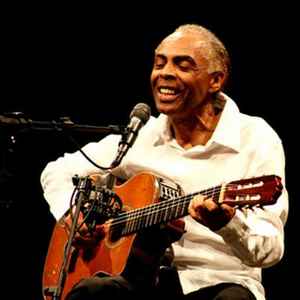 Gilberto Gill Source: Gilberto Gill |
|
|
Born Wilson Simonal de Castro in Rio de Janeiro in 1939,
vocalist,
Wilson Simonal, had a mother who
worked as a cook, laundress and maid. He was drafted into the Brazilian Army
to serve in artillery until 1960. Upon release from service Simonal and his
brother, Zé Roberto, formed a group called the Dry Boys thought to have
performed on television for Tupi TV in 1961. The Dry Boys didn't travel far
but Simonal was able to land work singing at the Drink nightclub. That
December he was recording his first vinyl with Odeon Records: 'Teresinha'
b/w 'Biquinis e Borboletas' ('Theresa' b/w 'Bikinis and Butterflies'). He
released four more titles in '62, also appearing on a couple tracks of
organist, Celso Murilo's, 'Isto e o Drink', that year. 1963 saw the issue of
Simonals' initial LP: 'Tem Algo Mais', followed by 'A Nova Dimensão do
Samba' the next year. Among Simonal's concerns was to create a music that
communicated with people better than bossa nova, thus his blend of samba,
soul and yeh yeh yeh (what rock n roll was called in Brazil in the sixties
due to the
The Beatles) in the sixties. Per 1967 his
first volume of 'Alegria! Alegria!' ('Joy! Joy!') was released, three to
follow into 1969. He began fusing samba w soul (Brazilian soul, bossa soul)
in the seventies, witnessed by such as the alum, 'Dimensão 75'. in 1974.
However, by that time Simonal had been such a huge star in recording,
television and theatre that Royal Dutch Shell offered him a million dollars
to promote their gas (stations), which amounted to $50,000 a day, as he was
to give seventeen shows on tour in twenty days, including a show for
presentation on Tupi TV. A lucrative contract with Shell would follow. In
1970 Simonal accompanied the Brazilian football team to the World Cup in
Mexico where he recorded and issued 'Mexico '70'. Simonal had a pretty fancy
carriage rolling when he was informed that he was broke and what's a can of
worms not to be opened here entered into his life. Suffice it to say that
a contractual dispute with Brazilian television giant,
Global, escalated into a court case versus his accountant for embezzlement,
which graduated to kidnapping that involved DOPS (Department of Political
and Social Order: police), which became another court case versus his
accountant, now in defense for extortion, all to the result of Simonal not
only being jailed for a couple weeks, but coming to be believed to be a
police informant. That, of course, didn't jive well in the world of MPB
(Brazilian Popular Music) which was resistant to Brazil's military regime
(1964-85). The debate as to Simonal's involvement with police (: thugs) continues to this day,
even as his name was cleared posthumously in 2003 through final acquisition
of government documents showing him nowhere listed as an informant. Howsoever,
while Simonal was alive he had to live with it, moving from Rio to Sao
Paulo as record sales plummeted. What might have sold 100,000 copies now
sold 15,000, enough to make a living but the golden carriage gone. The
complete matter that had sparked with a disagreement with Globo in 1970 had
been officially resolved in 1974 and Simonal was back with Globo in 1977.
But record sales, with the exception of in Europe, weren't what they should
have been and Simonal found himself recording for the small label, WM
Productions, in the early eighties. Simonal continued performing but record
production dropped to only two albums early in that decade: 'Tropical Joy'
('82) and 'Simonal' ('83). By the nineties Simonal had taken up whiskey. A
second marriage to Sandra Cerqueira in 1994 brought some sunshine into
Simonal's life, but he released his last of only three albums in the nineties in
1998: 'Bem Brasil - Estilo Simonal'. On 25 June of 2000 he died of liver
cirrhosis, an alcoholic. Simonal's sons are musicians,
Max de Castro [1,
2] and
Wilson Simoninha [1,
2].
References: 1,
2,
3.
Discos: 1,
2,
3,
4,
5.
IMDb.
Compositions.
Compilations: 2014: 'Wilson Simonal na Odeon (1961-1971)' on 9 CDs
*; 2015: 'S'imbora: A História De Wilson Simonal' 1961-71/75 also
including one track by each son: 1,
2.
Reviews.
Facebook tribute.
Further reading: Alessandra Dalevi;
Tom Schnabel. Wilson Simonal 1961 Composition: Fernando César João Leal Brito (Britinho) Composition: Carlos Imperial Wilson Simonal 1962 Composition: Carlos Imperial Composition: Ed Lincoln/Sílvio César Composition: Carlos Imperial Wilson Simonal 1963 Album Wilson Simonal 1964 Album Wilson Simonal 1966 Album Wilson Simonal 1967 ('My Lemon, My Lemon Tree') Filmed live Composition: José Carlos Burle 1937 Filmed live Composition: Wilson Simonal/Ronaldo Bôscoli Wilson Simonal 1970 Filmed live Wilson Simonal 1974 From 'Dimensão 75': Composition: Jorge Ben Jor ('The Search') Composition: Adilson Manhães João Roberto Kelly Wilson Simonal Composition: Jair Amorim/Evaldo Gouveia Wilson Simonal 1995 Composition: Ary Barroso Album: 'Brasil'
|
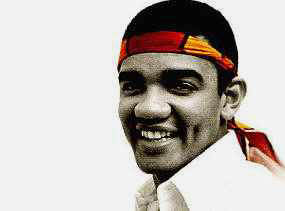 Wilson Simonal Source: Cultura Mix |
|
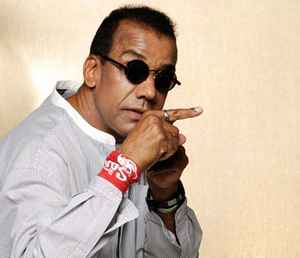 Jorge Ben Jor Source: Itapema |
Born Jorge Duilio Lima Menezes in 1945 in Rio de Janeiro, Brazil,
samba singer,
Jorge Ben Jor (also Jorge Benjor or
simply Jorge Ben)
played pandeiro (tambourine) in blocos (Carnival street bands) as a
teenager. At age eighteen he began performing in nightclubs on a guitar that
his mother gave him. In 1962/63 Ben Jor laid tracks with organist, Ze Maria,
for Maria's album, 'Tudo Azul - Bossa Nova e Balanco', to be released by
Continental. That is thought to contain his first version of 'Mas Que Nada',
though not released until after his name version that year, concerning
which, about that time Ben Jor had been noted at a club by some big hat from
Philips, to issue his first name release on 78 in 1963, his hugely
successful version of 'Mas Que Nada' b/w 'Por Causa De Você Menina'. Those
would be released on the album, 'Samba Esquema Novo', the same year along
with tracks such as, 'Chove Chuva', 'Balança Pema', 'Rosa, Menina Rosa' and
'A Tambá'. During his Ben Jor fused samba with various other genres like
rock, R&B, bossa nova and soul. Ben Jor is identified alongside MPB
(Brazilian Popular Music) contemporaries like
Gilberto Gil w the
Tropicalia [1,
2,
3,
4,
5,
6]
movement in the sixties bearing similarity to the youth movement in the
United States about the same time. Such is exampled in Ben Jor's 1969 release of the self-titled album,
'Ben Jor', with the ensemble, Trio Mocotó [1,
2,
3,
4]. Of especial note in the seventies
was his issue of the samba funk LP, 'Africa Brazil' in 1976 [1,
2].
Continuing into the eighties laying rail as an international star, Ben Jor
wrapped up that decade w his release of 'Benjor' in 1989
[*].
The new millennium brought 'Reactivus Amor Est [Turba Philosophorum]' in
2004. A Lifetime Achievement Award from the Latin
Recording Academy followed in 2005. His 2007 issue of 'Recuerdos de Assunción 443' (Som
Livre 0729-2) in
2007 is a collection of previously unreleased material recorded in the
seventies and eighties per description at Amazon, which doesn't fit
Wikipedia that has it recorded in studio in 2007 [*]. The 2007 DVD, 'Energia',
had gone down in 1982 [1,
2,
3]. Ben Jor has released
above forty albums and yet
occasionally tours in Brazil. References: 1,
2,
3,
4.
Website.
Discographies: 1,
2,
3,
4,
5,
6,
7.
IMDb.
Compilations: 'Jorge Benjor' by E-collection:
1993,
2000.
Compositions.
YouTube.
Reviews.
Interviews: Walter de Silva 1995.
Further reading: Brazzil; Christopher Dunn.
Nigh every title on every album below was composed, music and lyrics, wholly
by Ben. Jorge Ben Jor 1963 Composition: Jorge Ben Zé Maria album: 'Tudo Azul' Composition: Jorge Ben Zé Maria album: 'Tudo Azul' Album Jorge Ben Jor 1969 Album All comps by Jorge Ben Jorge Ben Jor 1970 Album All comps by Jorge Ben Jorge Ben Jor 1972 Album: 'Ben' All comps by Jorge Ben Jorge Ben Jor 1973 Album Jorge Ben Jor 1974 Album: 'A Tábua de Esmeralda' Jorge Ben Jor 1976 Album All comps by Jorge Ben Jorge Ben Jor 1982 DVD: 'Energia' 2007 All comps by Jorge Ben Jorge Ben Jor 1997 Album Jorge Ben Jor 2002 MTV presentation Album released 2002 Jorge Ben Jor 2004 Filmed live with Ivete Sangalo Composition: Jorge Ben Jorge Ben Jor 2012 Filmed live Composition: Jorge Ben Jorge Ben Jor 2014 Filmed concert
|
|
|
Born in 1942 in Vitória, Espírito Santo, Brazil, then raised
in Rio de Janeiro, guitarist and singer,
Nara Leão received a guitar from her
father at age twelve, he thinking she too shy. The bossa nova movement was
in its infancy at that time, Leao to become instrumental in its evolution
into MPB (Brazilian Popular Music) a decade later. She attended university
while working as a reporter for the newspaper, 'Última Hora'. Her first
professional employment was in theatre in 1963, taking part in the musical
comedy, 'Pobre Menina Rica'. Her first recording was in 1963, 'Nana', a
soundtrack for the film, 'Ganga Zumba', released in theaters that year. She
also recorded the Carnival march, 'Marcha da Quarta-Feira de Cinzas', and the
samba, 'Promessas de Você' that year, both found on the Carlos Lyra album, 'Depois
do Carnaval'. Leao then
toured Brazil, Japan and France
with
Sérgio Mendes, a major figure
in anybody's life. The next year she released two albums, 'Nara' (on which is
'Nana') and 'Opinião de Nara' [1,
2,
3], the latter a good example of early MPB,
arising out of the theatrical production of 'Opinião' that year at the
Teatro Opinião in Rio de Janeiro. 'Opinião de Nara' is oft used as a marker in the
transition from bossa nova to MPB insofar as the music was bossa nova while
Nara's opinions were decidedly not. The emergence of MPB largely coincides
with the military coup in Brazil of '64 that put the junta in power until
1985. Just so, MPB was also a democratic movement in the junta's nest,
pushing the limits without appearing a too widely funny egg. Leao viewed
bossa nova to be both politically complacent and alienating, plopping Brazil
in a niche the only thing for which to be known. (It's a junta but the world
thinks they're dancing from
Carnival to
Carnival.) Leao's early career was
an endeavor to address those troubles, she to acquire the designation, "the
muse of bossa nove". Notable the more, then, her issue of the album, 'Opinião
de Nara' ('64 above), with lyrics clearly indicating that she was no fan of
the junta. Just so, Leao joins numerous on this page such as
Jorge Ben Jor,
Tom Zé, et al, in identification
with the Tropicália movement
[1,
2,
3,
4,
5,
6,
7] that in Brazil was similar to the peace
movement in the United States with its beef against military presence in
Vietnam). Notable in 1968 was her appearance on the album, 'Tropicália: ou Panis et Circencis', on the track 'Lindonéia'.
'Tropicália' was the
manifesto of the Tropicália (Tropicalismo) movement toward fusing the music
of Brazil with aught more distinctly not the bossa nova, now, of the
junta. Like the youth movement in the United States, rock music played a
large role in Tropicalia at the avant-garde of MPB (Brazilian Popular
Music), woven into Brazil's greater atmosphere of samba. 'Tropicália''s
album cover was an intentional visual reference to the
Beatles' 'Sgt. Pepper's
Lonely Hearts Club Band'. Others performing were
Gilberto Gil,
Caetano Veloso,
Os Mutantes and
Gal Costa. As for bossa nova, Leao
issued her interpretation of numerous BN standards in 1971 on 'Dez Anos Depois'
recorded in Paris and Rio de Janeiro. During the seventies Leao returned to college to
study psychology, also issuing several more albums. In 1979 she learned she had an inoperable brain tumor, her
last eleven albums recorded with that knowledge, among them, 'Com Acurar,
Com Afeto' [*] arriving in 1980. Come 'Um
Cantinho, Um Violao' [*] in 1985
w
Roberto Menescal at
guitar. Leao's final LP was 'My
Foolish Heart', filled w interpretations of jazz standards, released about the time of her death on 7 June of 1989,
only 47 years of age. The album, 'Personalidade', was a compilation released in '88
by Philips, one of the numerous in its 'The Best of Brazil' series. References:
1,
2,
3,
4,
5,
6.
Chronology.
Discos: 1,
2,
3,
4,
5,
6,
7.
IMDb.
Compositions.
Lyrics.
Reviews.
Documentaries:
'For All My Life' 2007.
Select YouTube.
Archives.
Bibliographies: 1,
2.
Other profiles 1,
2. Nara Leão 1963 From 'Depois do Carnaval' Marcha da Quarta-Feira de Cinzas Composition: Lyra/Vinicius de Moraes Composition: Lyra/Nelson Lins de Barros Nara Leão 1964 From 'Nara' Composition: Baden Powell/Vinicius de Moraes Composition: Moacir Santos/Mário Telles Nara Leão 1968 Composition: Caetano Veloso Album: 'Tropicália ou Panis et Circencis' Nara Leão 1971 From 'Dez Anos Depois' ('Ten Years After' Composition: Tom Jobim/Vinicius de Moraes Composition: Tom Jobim/Dolores Duran Nara Leão 1978 E Que Tudo Mais Vá Pro Inferno Compositions: Roberto & Erasmo Carlos Arrangements/production: Roberto Menescal Nara Leão 1985 ('A Corner, A Guitar') Album w Roberto Menescal (guitar) Nara Leão 1987 Duets w Roberto Menescal TV Manchete Nara Leão 1989 Composition: Ned Washington/Victor Young Lyrics Portuguese: Nelson Motta Album: 'My Foolish Heart'
|
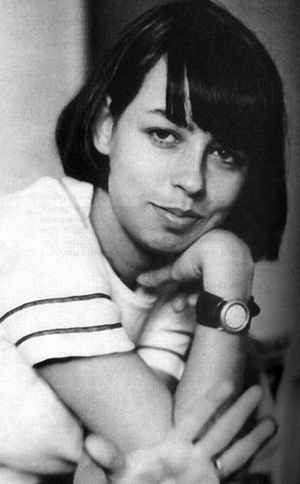 Nara Leao Source: Musica para Gatos |
|
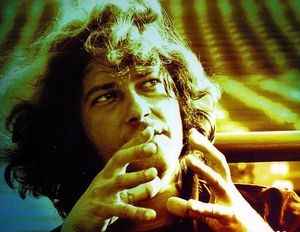 Eumir Deodato Source: Discogs |
Born in 1942 in Rio de Janeiro, pianist,
Eumir Deodato, began to play
accordion at age twelve. An autodidact (self-taught), piano soon followed,
as well as arrangement and orchestration. His first professional work was
orchestral, alongside Durval Ferreira and
Roberto Menescal. In 1962 Deodato
arranged, conducted and recorded his debut album, 'Inútil Paisagem' (RCA
Victor), with the one-shot orchestra, Los Danseros. That was a suite of Tom Jobim
compositions which saw release in 1964, reissue in '65 as 'Los Danseros en Bolero' (Equipe
801) and again in 2002 as 'Lounge '64'. Also issued in '64 were 'Impulso!' (Equipe 802
recorded in '63), 'Samba Nova Concepção' (Equipe 803 recorded in '63), 'Idéias' (Odeon
recorded in '64) and 'Tremendão' (Equipe
806 recorded in '64). The latter two were recorded with Deodato's group, Os
Catedráticos. Like other artists of his
period, Deodato left Brazil's military regime for the United States in 1967.
He there began to work with Brazilian compatriots who had also left
Brazil like Astrud Gilberto and Tom Jobim.
His debut session in the States was with Gilberto in May of 1967;for the
latter's 'Beach Party' in NYC. 1968 saw titles to Gilberto's 'Windy' as well
as
Paul Desmond's 'Summertime'
he contributing guitar to 'Lady in Cement' on the latter. In
March of 1970 Deodato began arranging titles on Ray Bryant's
'MCMLXX'. Also that March he arranged 'Ampora' on Jobim's
''Stone Flower', then participated into May on Jobim's
'Tide' and 'Brazil'. He joined Gilberto again
in 1971 for 'Gilberto with Turrentine'. He also contributed electric piano
to Turrentine's 'Salt Song' in
'71, arranging and conducting all titles as well. Come Gilberto's 'Astrud
Gilberto Now' in 1972, date unidentified. Deodato returned to Brazil to make 'Percepção' in early
1972 but was back in the U.S. to record with the CTI All Stars at
the Hollywood Bowl in July
before laying out 'Prelude', containing his version of 'Also Sprach Zarathustra'
(Richard Strauss), in
September, released in '73. 'Zarathustra' would later be used in the 1979
film, 'Being There', starring Peter Sellers. (The version in Stanley Kubrick's 1968 '2001: A
Space Odyssey' was performed by the Wiener Philharmoniker w Herbert von
Karajan conducting.)
1972 also saw further tracks with Bryant
in October, now backing Little Jimmy Scott. Come 'Deodato 2' [1,
2] in 1973. International touring followed
in the seventies, a decade in which Deodato issued some fifteen LPs. Deodato
has also worked on numerous film and television scores, such as 'The Onion Field' released in 1979. Of note in the eighties was work with
Kool & the Gang resulting in platinum albums. The
nineties saw Deodato concentrating on his work as a producer, especially of
Icelandic rock vocalist, Bjork. By the turn of the century Deodoto
had issued nearly thirty albums. The latest of the several he's released in
the 21st century was 'The Crossing' in 2010.
References: 1,
2,
3,
4.
Compositions.
Discographies: 1,
2,
3,
4,
5,
6, Lord (leading 22 of 70 sessions).
IMDb.
IA.
Twitter.
Per below, though no issue dates for Deodoto are identified prior to 1964
earlier unconfirmed dates are given per IMMuB in order to help organize.
Similarly, 'Tremendão' is a 1964 issue per Discogs, 1965 per IMMuB. Eumir Deodato 1962 'Los Danseros en Bolero' Orquestra Los Danseros Reissued 'Lounge '64' 2002 Year per IMMuB: Most discos have this issued in 1964 Composition:Henry Mancini/Johnny Mercer Composition: Errol Garner/Johnny Burke Composition: Henry Mancini Composition: Gene de Paul/Sammy Cahn Eumir Deodato 1963 Composition: Sérgio Carvalho/Paulo Bruce LP: 'Samba Nova Concepção' Year per IMMuB: Most discos have this issued in 1964 Eumir Deodato 1964 Composition: Durval Ferreira/Luis Fernando Freire LP: 'Ideias' All titles music by Tom Jobim Eumir Deodato 1965 Album Year per IMMuB: Discogs has this issued in 1964 Eumir Deodato 1973 LP with João Donato Comps by Donato & Deodato Eumir Deodato 2010 All arrangements by Deodato Eumir Deodato 2011 Filmed live Composition: Richard Strauss 1896 Filmed live Composition: George Gershwin 1924 Filmed live Composition: Deodato
|
|
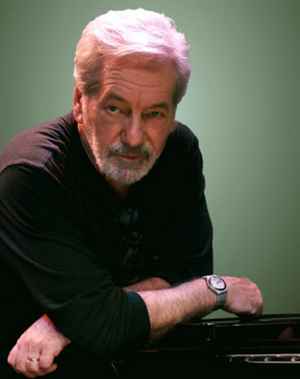 César Camargo Mariano Source: Piano Play |
Born in Sao Paulo, Brazil, in 1943, arranger, composer and pianist,
César Camargo Mariano, had a
piano teacher for a father. He is thought to have begun his career in radio
at age thirteen per a program titled 'The Boy Prodigy Who Plays Jazz'. He is
thought to have appeared on stage with trombonist, Melba Liston, who was touring Brazil in June of 1957. Mariano also early performed
on television on a show titled 'Passport to Stardom'. Making a television
announcement/commercial in 1958 as to Nat King Cole's first visit to Brazil
landed him a position in the William Furneaux Orchestra before he could read
music. He then formed a quartet that performed at the A Baiuca nightclub in
Sao Paulo for two years. By 1963 he was arranging and producing (Claudete
Soares' 'E Dona Da Bossa' per 1964). Mariano issued his first album for RGE,
'Quarteto Sabá', in 1964. Several LPs with his Sambalanco Trio [1,
2] rapidly
followed in '64 and '65, that filled by Humberto Clayber (bass) and
Airto Moreira (drums).
Several albums with Som Tres from 1966 ('Som/3') to 1970 (Toboga'), that
manned by Sebastião 'Sabá' Oliveira Da Paz (bass) and Antônio 'Toninho'
Pinheiro (drums). Both
those formations were highly successful, placing Mariano's name among the
majors in Brazilian jazz where he kept it through more than thirty LPs to
come. In 1971 Mariano became arranger, director and producer for
Elis Regina, working with her on fourteen
albums to come, starting with 'Elis', issued in 1972. Mariano was also
marred to
Regina between '73 and '81 (his second wife).
Among Mariano's contributions to soundtracks was 'Eu Te Amo' ('I Love You')
in 1980 which he composed and performed. Among works on synthesizer came 'Prisma'
in 1985 and 'Ponte das Estrelas' in 1986. He toured to the Montreux Jazz
Festival in Switzerland in 1989 w João Bosco. Lord's disco has him in Sao
Paulo in 1992 contributing keyboards to a couple tracks on 'Leo Gandelman'
(CD One Globe 60001-2): 'Molambo' and 'Dance in the Woods'. Later that
decade sometime in 1999 he joined
Blossom Dearie in NYC toward 'Planet
One' (CD Daffodil BMD Vol XVIII). Into the new millennium arrived 'Cafe'
in 2002 w
the Trio Da Paz and vocalist, Dianne Reeves. Mariano also participated in
Freddy Cole's 'In the Name of Love' [*] that year.
Come his own release of 'Nova Saudade' in 2003. He won a Grammy for 'Au
Vivo' (Rob Digital RD 053) in 2007 for Best MPB Album. His most recent issue
as of this writing was 'Joined' in 2017
w Sidiel Vieira, Thiago Rabello and Conrado Goys, compositions by himself. Mariano was among pianists
contributing to Tomoko Miyata's 'Secret of Life' in 2009 Mariano is the recipient of multiple awards by CLIO (for radio advertising),
'Playboy' and APCA (film). He won a Latin Grammy for Lifetime Achievement in
2006. Notable
others w whom Mariano has performed include cellist, Yo-Yo Ma, and
Brazil's own Tom Jobim.
Mariano currently resides in the United States since 1994 with his third
wife for some thirty years, Flavia Rodrigues Alves.
References: 1,
2,
3,
4.
Discos: 1,
2,
3,
4,
5.
IMDb.
Compositions.
Arrangements and production *.
Awards.
Select YouTube: 1,
2,
3.
IA.
Reviews.
Interviews: Jan Dumee 2000;
other.
Facebook.
Myspace.
Further reading: Rebecca Cline;
Abelita Mateus (pdf).
See also *. Per below, titles are alphabetical, not chronological, by year. Sambalanço Trio 1964 Album Sambalanço Trio 1965 Lennie Dale e o Sambalanço Trio Album Reencontro Com Sambalanço Trio Album Album César Camargo Mariano 1966 Octeto de César Camargo Mariano Album Album by Som Tres César Camargo Mariano 1968 Album by Som Tres César Camargo Mariano 1969 Album by Som Tres Album by Som Tres César Camargo Mariano 1978 Album César Camargo Mariano 1983 Album Vocals: Nana Caymmi Album w Nana Caymmi All arrangements Mariano César Camargo Mariano 1986 Album César Camargo Mariano 2009 Filmed live Composition: Mariano César Camargo Mariano 2017 Filmed live Composition: Mariano
|
|
|
Flora Purim See
Flora Purim. |
||
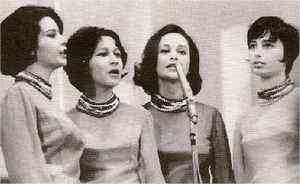 Quarteto em Cy Source: TV Sinopse |
Born on various dates in Brazil, Cybele, Cylene, Cynara and
Cyva are thought to have become the
Quarteto em Cy (Quartet in B, as in
Bahia) in 1959, performing on television that year. The Quarteto em Cy was a
little different from other MPB artists on this page, most of whom played an
instrument like
guitar or piano as solo artists. The Quarteto was a vocal harmony group, none of
whom played
guitar,
led by Cyva, that soon left Bahia for Rio de Janeiro a good thousand miles
south to perform in bars such as Bottles and Zum Zum. The girls released
their first album in 1964: 'Quarteto em Cy'. The Quarteto has seen multiple
members over the decades. 1966 saw Cylene getting married, replaced by Regina Werneck
to become known as Cyregina. Both Cybele and Cynara left the group in 1967,
replaced respectaviely by Sonya to become known as Cyntia and Semiramis as
Cymiramis. The only original member left at that time was Cyva who remained
to this day. Ins and
outs aside, the Quarteto em Cy was one of the larger names in Latin American
recording, and rightly so as one couldn't but like them, making their mark not only
amidst Brazil's giant recording industry, but establishing a fan base in the
United States in sixties, and touring to Japan in the eighties and nineties.
Releasing about forty albums over the decades, their most recent was
'Janelas Abertas' ('Open Windows') in 2016 on Fina Flor FF 068. Of the
Quarteto's original members, Cybele died in 2014. The group presently
consists of original members, Cyva and Cynara, Cyntia (Sonya), and member
since 2016, Corina, who appeared on 'Janelas Abertas'. The Quarteto Em Cy
currently tours to destinations in Brazil.
References: 1,
2,
3,
4,
5.
Discos: 1,
2,
3,
4,
5.
Facebook.
IA. Quarteto em Cy 1964 Album Quarteto em Cy 1966 Composition: Carlos Castilho Francisco (Chico) De Assis 'Andy Williams Show' Composition: Oscar Castro-Neves Quarteto em Cy 1972 Album Quarteto em Cy 1973 Filmed live with Toquinho Quarteto em Cy 1978 Album Quarteto em Cy 2012 Filmed live Composition: Tom Jobim/Vinicius de Moraes Quarteto em Cy 2016 ('Open Windows') Composition: Tom Jobim/Vinicius de Moraes Album: 'Janelas Abertas'
|
|
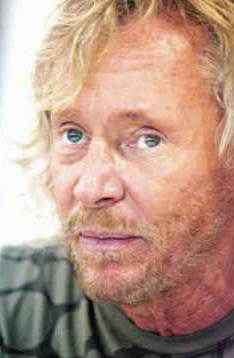 Marcos Valle Source: Outras Escritas |
Born in 1943 in Rio de Janeiro, Rio de Janeiro, Brazilian guitarist,
keyboardist and singer,
Marcos Valle, released his debut LP,
'Samba "Demais"' ('Samba "Too"') in 1964. Upon the issue of 'O Compositor E
O Cantor' in '65 Valle toured the United States the next year where he
recorded the album, 'Brasil '66', with
Sérgio Mendes. His third album, 'Braziliance!',
was also recorded in the US, issued in '66. He was in New York City in May
of 1967 to support Astrud Gilberto's 'Beach Samba',
Barry Galbraith and
Toots Thielemans also at guitar.
His appearance on 'The Smothers Brothers Comedy Hour' was aired on 24 Dec
1967 (Christmas Eve). Valle composed for
'Vila Sésamo' from '72 to '74, that Brazil's version of 'Sesame Street' in
the United States. As his interest was less in MPB
(Brazilian Popular Music) than pop and rock in North America, he moved to Los
Angeles in 1975 where he would work with such as
Sarah Vaughan and Leon Ware. Returning to Brazil in latter 1980, he released 'Vontade de
Rever Você' the next year. Valle's most popular recording was the disco
tune, 'Estrelar', in
1983, selling about 90,000 copies. His album, 'Tempo da Gente', followed in
'86. Compilations of Valle's oeuvre were released in 1995 and '96 'The
Essential' (Mr Bongo MRBLP003 & MRBLP007) [1,
2]. In 1998 Valle released 'Nova Bossa
Nova', a modernized return to his roots. He composed 'Summer Samba' w his
brother, Paulo Sérgio Valle [1,
2], to see issue in 2000 on 'Serenade in Blue'
by vocalist, Ithamara Koorax, Valle contributing keyboards. That formula was
repeated per 'Flame' on the 2003 issue of 'Love Dance' by Koorax. In the
meantime he ad released 'Escape' and 'Bossa Entre Amigos' in 2001, the
latter w
Roberto Menescal and
Wanda Sá [1,
2,
3].
Six albums later come 'Estática' [1,
2] in 2010 on which he composed or
co-composed all titles. 'Au Vivo' arrived in 2013 with vocalist, Stacey Kent. Valle's career over
the decades might be summarized as an exchange of MPB (expanding the samba) for MPV (Vallean
Popular Music), largely a fusion of Latin with pop. Having issued nigh
thirty albums, Valle's latest release was 'Sempre' [1,
2,
3,
4] in 2019. Yet quite active, Valle has pages at
Facebook,
Myspace and
Twitter.
References: 1,
2,
3.
Discos: 1,
2,
3,
4,
5,
6,
7.
IMDb.
Compositions.
Reviews: 1,
2.
Interviews: Marc Myers 2011: 1,
2,
3.
Further reading: Allen Thayer
(Valle and Leon Ware).
Other profiles: 1,
2,
3,
4. Marcos Valle 1964 Album Marcos Valle 1965 Album All music: Marcos Valle Featuring lyrics by Paulo Valle Marcos Valle 1970 Album All music: Marcos Valle Featuring lyrics by Paulo Valle Marcos Valle 1971 Album All music: Marcos Valle Featuring lyrics by Paulo Valle Marcos Valle 1972 Album with Azimuth Album Most music: Marcos Valle Featuring lyrics by Paulo Valle Marcos Valle 1973 Album Most music: Marcos Valle Featuring lyrics by Paulo Valle Marcos Valle 1981 Album All music: Marcos Valle Featuring lyrics by Paulo Valle Marcos Valle 1983 Composition: Marcos Valle/Paulo Sérgio Valle Album: 'Marcos Valle' Marcos Valle 1998 Composition: Marcos Valle/Paulo Sérgio Valle Album: 'Nova Bossa Nova' All music: Marcos Valle Marcos Valle 2008 Composition: Marcos Velle DVD: 'Co-Nec-Ta' DVD: 'Co-Nec-Ta' With Patricia Alvi Marcos Valle 2010 Composition: Marcos Velle Album: 'Estática' Marcos Valle 2014 Filmed live with Patricia Alvi Marcos Valle 2019 Album Most music: Marcos Valle
|
|
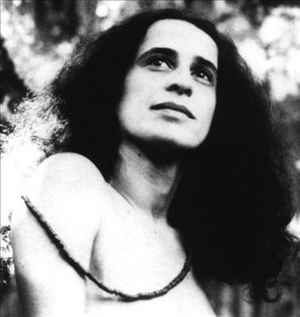 Maria Bethania Source: All Music |
Born Maria Bethânia Viana Telles Veloso in Santo Amaro,
Bahia, in 1946, MPB (Brazilian Popular Music) singer,
Maria Bethânia, moved with her
family to Salvador, Bahia, when she was thirteen. Her brother was singer,
Caetano Veloso. When she was
nineteen she accepted an offer to perform in
the musical, 'Boca de Ouro', her first public performance her first
professional performance as well. She continued with theatre until her first
record, 'Carcara' b/w 'Eu Vivo num Tempo de Guerra', was released in 1965.
Her album, 'Maria Bethânia', ensued that year. Bethânia addressed the
traditional Brazilian folk song on her 1973 album, 'Drama 3°Ato, Luz da Noite'
[*].
She was touring nightclubs around Brazil when she released the LP, 'Pássaro
da Manhã', in 1977, which would go gold. Twice blessed, her issue the next
year of 'Álibi' sold a million copies as well. Bethânia maintained a stellar fame into the nineties.
She performed Gonzaguinha's 'Grito de Alerta' ('Crying Alert') for inclusion
on the 1980 soundtrack to the Brazilian soap opera, 'Agua Viva' ('Living
Water') [1,
2,
3]. 'As Canções Que Você Fez Para Mim'
[1,
2]
was the highest selling album in Brazil in 1993, easily gold at 1,500,000 discs. All
titles on that were composed by Roberto and Erasmo Carlos.
Along with films and documentaries Bethania has largely spent her life on
tour while recording prolifically, about 50 albums, more than 26 million
records sold. Several albums into the new millennium she issued two of note
in 2009, 'Encanteria' [1,
2] and
'Tua' [1,
2]. Come 2012 w
her studio release of 'Oásis de Bethânia'
followed in 2013 by the live album, 'Noite Luzidia', in Volumes 1
& 2. Her latest
issues as of this writing were in 2018 w Zeca Pagodinho, 'De Santo Amaro a
Xerém' by Biscoito Fino on CD and
DVD.
References: 1,
2,
3,
4,
5.
Discos: 1,
2,
3,
4,
5,
6.
Compositions.
Reviews.
Interviews: Alice Grenato 2005,
André Bernardo 2012,
Ana Tomas 2015.
Further reading: Bethânia and the Rouanet Law: 1,
2,
3,
4.
Other profiles: 1,
2,
3,
4. Maria Bethânia 1965 Filmed live Composition: João do Vale/José Cândido Composition: Caetano Veloso Album: 'Maria Bethânia' Composition: António Branco (Batatinha) Album: 'Maria Bethânia' Maria Bethânia 1971 Album with Toquinho & Vinicius Maria Bethânia 1978 Album Title track composed by Djavan Maria Bethânia 1982 Filmed live Composition: Gonzaguinha Maria Bethânia 1982 Filmed live Maria Bethânia 1993 As Canções Que Você Fez Pra Mim Album All comps by Roberto & Erasmo Carlos Maria Bethânia 1994 Filmed live Composition: Caetano Veloso Filmed live Composition: Roberto & Erasmo Carlos Maria Bethânia 2005 Composition: Tom Jobim/Vinicius de Moraes Album: 'Que Falta Você Me Faz' Maria Bethânia 2005 Filmed live Maria Bethânia 2018 Filmed live Composition: Caetano Veloso DVD: 'Amaro a Xerém'
|
|
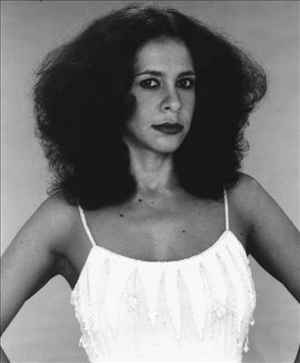 Gal Costap Source: All Music |
Born in 1945 in Salvador, Bahia, Brazilian guitarist and singer,
Gal Costa, had a father she never met and
a mother who listened to classical music during her pregnancy with Gal that
she might have an interest in music. Might have worked, for she got a job at
a record shop as a teenager. She was 18 when she met
Caetano Veloso who would
become instrumental to her career, composing or co-writing numerous of her
titles through the years. Costa performed in her first professional
show in August of '64 with
Veloso and others with whom
she would form an alliance per the Tropicalismo movement
[1,
2,
3,
4,
5,
6,
7]. Those were
Gilberto Gil,
Maria Bethânia (Veloso's
sister) and
Tom Zé.
Gil and
Veloso would contribute
compositions to jumpstart Costa's career. Her initial recording was with
Bethânia on the EP, 'Maria da Graça'(?) in
1965, on the track 'Sol Negro'. Also in '65 Costa issued the singles, 'Eu
Vim Da Bahia' and 'Sim, Foi Você'. 1967 saw the LP, 'Domingo', released with
Veloso. The Tropicalismo
movement was at once musical and democratic, arising as a response to the
coup d'état of 1964 that installed Brazil's military regime for the next
score of years [*]. That movement's manifesto was the album, 'Tropicália ou
Panis et Circencis' [*], in which Costa participated in 1968 (the track, 'Mamãe,
Coragem', in particular). Among issues in 1969 were Costa's EP, 'Gal'
(Philips 441.470), and the LPs, 'Gal Costa'
(PhilipsR 765.068 L) and 'Gal'
(Philips R 765.098 L). In 1970 she journeyed to London to where
Gil and
Veloso had gone into exile the
year
before. Her album, 'Legal' was released that year.
Returning to Brazil in 1973, she there laid out 'India' [1,
2], its album
cover censored for its focus on her bikini bottom.
Recording prolifically since then as one of the larger names in MPB
(Brazilian Popular Music), Costa maintained a high public profile with
continual television appearances throughout her career. She was surfing one
of stardom's bigger waves on the globe by the time she appeared at the Montreux Jazz Fest
in Switzerland in July of 1987. The same year found her in Los Angeles w
Tom Jobim for the live recording of 'Rio Revisited' at the Wiltern Theatre
issued in Oct 1989 on Verve 841286-2 [Lord/ Discogs]. Highlighting the
nineties was her role as
Carmen Miranda in the
film, 'O Mandarim' ('The Mandarin'). Into the new millennium she travelled
to the United States in 2006 to perform at the Blue Note in NYC toward 'Blue
Note' w a crew of Ze Canuto (flute/ sax), Marcus Teixeira (guitar), Adriano
Giffoni (bass) and Jurim Moreira (drums). Come 'Estratosférica' in 2015. She recently issued the live
album 'A Pele Do Futuro'
in 2019. References:
All Music;
Wikipedia worldwide: 1.
2,
3,
4,
5,
6,
7.
Discos: 1,
2,
3 (w composers
& lyrics),
4,
5 (w composers),
6,
7,
8,
9.
DVDs w composers
& lyrics.
IMDb.
IA.
Reviews.
Interviews.
Facebook,
Twitter.
Further reading: Patrick Ambrose,
Jon Pareles,
Ben Ratliff,
Colin Snider,
various.
Other profiles: 1,
2. Gal Costa 1965 With Maria Bethania Composition: Caetano Veloso Gal Costa 1967 Album with Caetano Veloso Gal Costa 1968 Composition: Caetano Veloso/Torquato Neto Album: 'Tropicália ou Panis et Circenses' Gal Costa 1969 Gal Costa 1971 Gal Costa 1973 Gal Costa 1974 Gal Costa 1981 Television broadcast Gal Costa 1984 Gal Costa 1985 Television broadcast Gal Costa 1987 Filmed live w Tom Jobim Wiltern Theatre Los Angeles Composition: Ary Barroso Gal Costa 1990/91 Live album Issue unidentified Gal Costa 1996 Television special w Caetano Veloso Gal Costa 1997 Gal Costa 2017 Concert filmed live Gal Costa 2019
|
|
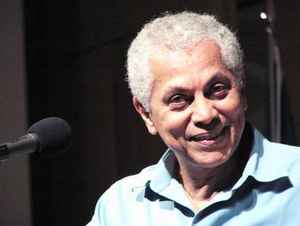 Paulinho da Viola Source: MEC FM |
Born Paulo César Batista de Faria in 1942 in Rio de Janeiro, Brazil, guitarist and singer,
Paulinho da Viola, also performed
samba [1,
2,
3,
4,
5] and
choro [1,
2,
3,
4,
5] on cavaquinho and mandolin. He began composing with guitar as a teenager,
though with no intent to become a musician. He wrote his first samba, 'Pode
ser Ilusão', in 1962. Da Viola was working as a bank clerk when he met poet, Hermínio Bello de Carvalho, with whom he composed 'Duvide-o-dó' in 1964
(recorded by singer Isaurinha Garcia on a date unkown). Thus encouraged to
compose by Carvalho, da Viola began performing in a restaurant owned by samba
master,
Cartola. His name was changed to Paulinho da Viola
(Paulie Guitar) some time in 1965 because Paulo César was too common. He
paraded w the Portela [1,
2]
school [1,
2]
in 1965, the year that put da Viola on track with appearances on two LPs. The first
was performing guitar on the cast of the musical, 'Rosa de Ouro' ('Golden
Rose'), released under the names of vocalists, Aracy Coates and
Clementina de Jesus. A second volume was released in 1967. Also in 1965 Viola released
'Roda De Samba' with the group, A Voz Do Morro (The Voice of the Hills). A
second volume appeared in 1966. Da Viola revived
Jacob do Bandolim's
choro group, Época de Ouro [1,
2,
3],
in 1973 for a performance at the Teatro da Lagoa in Rio. That ensemble had
been dormant since
Bandolim's death in
1969. Viola's father, Benedicto Cesar Ramos Faria, had been a guitarist in
Bandolim's ensemble.
The Época de Ouro have survived to this day [1,
2,
3].
It was also 1973 that Viola released his LP, 'Nervos De Aço' ('Nerves of
Steel'), having recently separated from his wife. 'Zumbido' arrived several
LPs later in 1979, followed by 'Paulinho Da Viola' in 1981.
Though Viola's audience began to fade in the
eighties as he concentrated more on composing, his 1997 issue of
'Bebadosamba' yet proved a strong following, selling above 100,000 copies. Into the new millennium Izabel
Jaguaribe directed the Viola documentary, 'Meu Tempo E Hoje' ('My Time is
Now'), released in 2003 to coincide w Viola's album. Having released nearly thirty
albums, his latest was 'Acústico MTV' in 2007 on both CD and
DVD. Beyond music, da Viola is a
woodworker who has made fine furniture. He yet performs in Brazil, living in Rio de Janeiro. References: 1,
2,
3.
Discos: 1,
2,
3,
4,
5.
IMDb.
Compositions.
Reviews.
Lyrics
w composing credits.
IA. Further reading:
Ben Ratliff. Paulinho da Viola 1965 Album with A Voz Do Morro Track B6 of 2 Album: 'Rosa De Ouro' Composition: Élton Medeiros Paulinho da Viola Hermínio Bello de Carvalho Paulinho da Viola 1970 Foi Um Rio Que Passou em Minha Vida Album 9 of 11 comps by Viola Paulinho da Viola 1971 Composition: Paulinho da Viola Album: 'Paulinho Da Viola' Paulinho da Viola 1999 Album w Toquinho Paulinho da Viola 2003 Documentary film Paulinho da Viola 2011 Filmed live Composition: Paulinho da Viola/Ed Sito Filmed live with Beatriz Faria Composition: Paulinho da Viola
|
|
|
Examining various genres of the music of Brazil has led to
neglect of Brazil's biggest bang of all,
Carnival, to which
Clementina de Jesus
(aka Quelé)
returns us insofar as she was a
Carnival performer for
decades before her initial record release. Most sources have her born in
Valenca in the state of Rio de Janeiro on 7 Feb 1901. Some sources lend 1902. Elise Dietrich hesitates to give a date, coming up w
1900 or 1901, rolling w 1901. De Jesus would become a member of the Portela [1,
2] Samba School, transferring to the Mangueira
School in 1940 upon getting married rather late in life. The Mangueira had
been founded in 1928 by
Cartola before
Carnival became the official
festival as it is now known in 1932/33. Attending matters
Carnival over the decades,
Jesus didn't begin a solo career
until age 63, launched in December of '64 [*] at the Teatro Jovem in Rio de
Janeiro w classical guitarist, Turíbio Santos, for a production of 'Movimento
Menestrel', written by the poet, Hermínio Bello de Carvalho. That was
followed by Carvalho's musical, 'Rosa de Ouro' ('Golden
Rose'), which is how she found her name in big letters along with Aracy Côrtes on
the cover of 'Rosa de Ouro' issued by Odeon Records
in 1965 [review]. A
second volume ensued in 1967 after her release
of 'Clementina
De Jesus' in
1966. A couple more albums ensued to 'Clementina, Cadê Você?'
('Clementina, Where Are You?') in 1970. A few more albums followed in the
seventies until her last, a folklore collection of work sambas titled 'O Canto dos Escravos'
('The Slave Song') released in 1982 [1,
2].
Clementina's ancestors had been slaves among whom may have sung a few of the
anonymous traditionals passed down by memory for recording on 'O Canto dos Escravos'. For someone who had spent years supporting
herself as a maid, and was a senior citizen before her debut recordings, de Jesus nevertheless enjoyed a hugely popular
career singing traditional sambas. She died on 19 July 1987 in Rio de
Janeiro. References: 1,
2,
3,
4,
5,
6,
7.
Catalogues: 1,
2,
3,
4,
5.
IMDb.
Compilations: 'Raizes Do Samba' ('Roots of Samba').
Documentaries: 'Clementina' produced by Mariana Marinho w direction by Ana Rieper (Dona Rosa Filmes 2019): 1,
2. Further reading:
Welington Andrade; 'Mediating Authenticity' by Elise Dietrich
(pdf);
Milani/Ferron (Carvalho interview 2010);
Marcelo Oliveira;
Luciana da Silva.
Biblio: 'Clementina, Cadê Você?' by Adriana Bevilaqua, et al (Funarte 1988)
*; 'Quelé: A Voz da Cor' by Felipe Castro, Janaína Marquesini, Luana Costa
and Raquel Munhoz: 1,
2,
3.
Other profiles: 1,
2,
3,
4,
5. Clementina de Jesus 1965 Composition: Pixinguinha/Gastão Viana Album: 'Rosa De Ouro' Clementina de Jesus 1970 ('Clementina, Where Are You?') Composition: Davi do Pandeiro/Candeia Album: 'Cadê Você?' Clementina de Jesus 1973 Clementina de Jesus 1976 From 'Clementina De Jesus' Composition: Batelão/Silvio Composition: Batelão/Silvio Mirabeau Jorge Gonçalves Vital de Oliveira ('Incompatibility of Temper') Composition: João Bosco/Aldir Blanc Composition: Serafim Adriano Composition: Paulo da Portela End 'Clementina De Jesus' Filmed live Composition: Pixinguinha/Gastão Viana Clementina de Jesus 1979 Composition: João Bosco/Aldir Blanc Album: 'Clementina e Convidados' Filmed live Composition: Paulo da Portela Clementina de Jesus 1982 Filmed live Composition: Unknown Adaptation: Caetano Veloso/Padeirinho ('The Song of Slaves') LP of traditional slave sambas
|
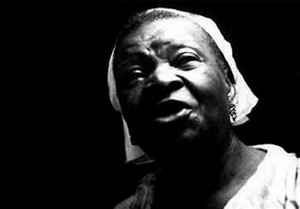 Clementina de Jesus Source: Camarilha dos Quatro |
|
|
Born in 1943 in Rio de Janeiro, Brazil, composer, guitarist and singer,
Edu Lobo (aka Edu Wolf), expanded upon and came to define MPB (Brazilian
Popular Music), the dominating musical genre in Brazil having its origins in
the sixties upon the bossa nova boom of several years and Brazil's military
coup of '64. Lobo was eighteen when he formed a
trio with
Dorival Caymmi and
Marcos Valle in 1961, the same year he met
Vinicius de Moraes [Ref
4]. Sharing glory w some of the more significant composers on this page, he began
writing for theatre in 1963, 'Chegança', composed for the play, 'Os
Azeredo Mais os Benevides' by Oduvaldo Vianna Filho was later recorded by
Elis Regina to appear on
her LP w the Zimbo Trio, 'O Fino Do Fino' in 1965 [*]. Another of their titles
interpreted by
Regina was 'Arrastão'
[1,
2]
which took prize at the 1965 Brazilian Popular Music Festival. Lobo also
wrote the music w
Moraes' lyrics to 'Zambi',
that appearing on Lobo's first two LPs in 1965, 'A Musica de Edú Lobo por Edú
Lobo' and 'Edu Canta Zumbi' (not necessarily in that order). 'Zambi' is also
performed by Lobo on
Moraes' 'Poesia e Canção
Vol II' in 1966 [*].
Regina issued another of their songs in 1966 on Philips 365.204 PB, 'Canto
Triste'.
Regina also issued Lobo's 'Pra Dizer Adeus' in '66 on her album,
'Elis' [*],
that w text by Torquato Neto [1,
2,
3]. In 1969 Lobo married vocalist, Wanda Sa [1,
2,
3]
and moved to Los Angeles. He there met
Sérgio Mendes the same year, the
latter helpful toward the project of alto saxophonist,
Paul Desmond's, 'From
the Hot Afternoon' issued in 1970 to which Lobo had contributed guitar and three compositions
by himself. Most, though not all, other titles were composed by Milton Nascimento [1,
2,
3].
Lobo also toured with
Mendes' band, Brasil '66, in
'69.
Mendes produced and arranged
Lobo's bossa nova LP, 'Sergio Mendes Presents Lobo' [*],
released in April of 1971. Upon Lobo's return to Brazil in 1971 he focused on composing for cinema and
the Globa television network. 'Edu E Tom' [*], an album of duets with
Tom Jobim, appeared
in 1981. Lobo composed the ballet suite, 'Jogos de
Danca' ('Dance Games') [*], released in 1982.
In 1983 Lobo partnered with
Chico Buarque on the
soundtrack to the ballet, 'The Great Mystic Circus' [1,
2],
a show that toured both Brazil and Portugal. Lobo and
Buarque were a songwriting
industry over the years, composing numerous titles together such as the
soundtrack to Augusto Boal's play, 'O Corsário do Rei' [*],
issued in 1985. Tom Lord has Lobo in the United States in 1992 with other
Brazilian musicians like
Buarque to record
Toots Thielemans' 'The
Brazil Project' [*].
Buarque contributed to
Lobo's 1994 issue of
'Corrupião' [*]
which won the Paulista Association of Art Critics award. Into the new millennium Lobo and
Buarque co-wrote the
soundtrack to the 2001 play by João and Adriana Falcão, 'Cambaio' [*].
Buarque contributed lyrics to
a few of Lobo's melodies on the latter's 2010 issue of 'Tantas Marés', Paulo
César Pinheiro assisting on most other titles.
Buarque, et al, joined Lobo in 2013 for
'Edu 70 Anos' [*]
at the Municipal Theater of Rio as well as 'The Essential Edu Lobo: A 70th
Birthday Celebration' [1,
2].
It was a trio w
Dorival Caymmi and
Marcos Valle on 'Edu Dori & Marcos' in 2018
[*]. Lobo's latest issue as of this writing was 'Quase Memória' [*]
in 2019 w Romero Lubambo e Mauro Senise. References: 1,
2,
3,
4,
5.
Discos: 1,
2,
3,
4,
5.
IMDb.
Compositions.
IA.
Further reading *. Edu Lobo 1965 A Musica de Edú Lobo por Edú Lobo Composition: Edu Lobo/Vinicius de Moraes LP: 'A Musica de Edú Lobo por Edú Lobo' Edu Lobo 1966 Album w Maria Bethânia Television broadcast Germany Music: Edu Lobo Lyrics: Gianfrancesco Guarnieri Edu Lobo 1968 Edu Lobo 1970 Edu Lobo 1973 Also issued as 'Edu Lobo' Edu Lobo 1976 Edu Lobo 1977 Television broadcast Composition: Edu Lobo Edu Lobo 1978 Edu Lobo 1992 Filmed live with Zizi Possi Heineken Concert Composition: Edu Lobo/José Carlos Capinam Edu Lobo 2007 DVD: 'Vento Bravo' Composition: Edu Lobo/Chico Buarque Edu Lobo 2013 Filmed live Theatro Municipal do Rio de Janeiro Music: Edu Lobo Lyrics: Gianfrancesco Guarnieri Edu Lobo 2018 Composition: Edu Lobo/Chico Buarque '70 Anos' Filmed live Edu Lobo 2019 Composition: Edu Lobo
|
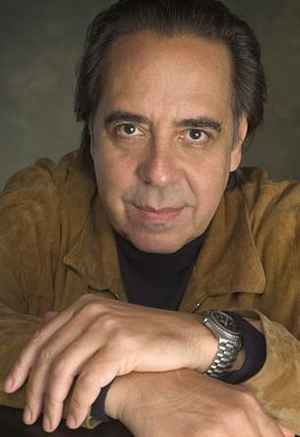 Edu Lobo Source: Cariricaturas |
|
|
Born in 1942 in Santo Amaro da Purificação, Bahia, Brazilian guitarist and singer,
Caetano Veloso, was brother to
Maria Bethânia. He moved to Bahia's capital,
Salvador, in the early sixties to attend college, then to Rio de Janeiro in
1965. His composition, 'Um Dia', won a competition that got him a contract
with Philips in 1965, releasing the bossa novas, 'Samba em Paz'/'Cavaleiro',
in May that year. In 1967 he released 'Domingo' with
Gal Costa. Veloso and
Costa became part of a movement called Tropicalismo
[1,
2,
3,
4,
5,
6,
7] with Veloso's sister,
Maria,
Gilberto Gil,
Tom Zé and poet, Torquato Neto.
All of them participated in the 1968 release of Tropicalismo's manifesto, 'Tropicália:
ou Panis et Circencis'. Tropicalismo welcomed foreign influence on
traditional song, be it Afro, rock, avant-garde. Its distinction from MPB
(Brazilian Popular Music) was a little comparable in the United States to
popular vs such as, say, folk rock. Unfortunately the Brazilian junta (since
1964) found both
Gil and Veloso dubitable
personalities to the regime, banning their
work. The two were rounded up in February of 1969 and spent at least two months in jail before
their release, after which they went into exile in London. Both
Gil and Veloso returned to
Brazil in '72 when amnesty was granted to musicians. The brief
countercultural Tropicalismo movement was effectively halted upon the exile
of select musicians in the latter sixties and Veloso returned to a slightly
shifting scenario giving rise to MPB which, unlike popular music in the
States, had its origins as a democratic movement. Which is to say that the
Brazilian junta was dealing with a democratic elephant in its room (largely
the MDB - Brazilian Democratic Movement) until its demise in 1985 upon the
election of Tancredo Neves. As in South Africa, capitalistic interests kept
an ugly ogre in power, while in other sectors (: record companies)
developing a negative image of Brazil's junta, a case of reign by might
versus not only the people, but people throughout the world. Yet some things
take a long time. Not until 2014 did Brazilian President Dilma Rousseff
testify to her torture on multiple occasions by military thugs. Her report,
calling for the repeal of the 1979 law granting amnesty to regime officials,
also claimed the killing or disappearance of well above 400 suspected
subversives and the torture of some 20,000 during the twenty years of the
regime. In addition, it named 377 perpetrators, about half of whom are still
alive as of this writing. Against that backdrop Veloso quickly embarked upon
a hugely successful career delivering PMB throughout the world. A round
example of his composing are all the titles on the 1977 release of 'Bicho'
like 'Tigresa', 'Odara' and 'O Leãozinho'. He authored such as 'Muito' and 'Sampa'
toward issue on 'Muito'
in 1978. December 13, 1983, brought the death of Veloso's father, his mother
yet living as of this writing [*]. Tom Lord has Veloso in Los Angeles
several years later in May of 1988 to
perform his composition, 'Linda (Voce É Linda)', w Lee Ritenour, issued on
the latter's 'Festival' that year. Veloso released the album, 'Estrangeiro',
in 1989 w Peter Scherer at keyboards. He also attended the jazz festival in
Montreux, Switzerland, where on July 10 [Lord] he performed 'Saudade da
Bahia' and 'Sampa' toward later issue in 1998 on the album by various, 'Live
in Montreux' (ACT 9001-2). Lobo was in the United States in 1992 with other big-name Brazilian
musicians like
Chico Buarque and
Edu Lobo to record
Toots Thielemans' 'The
Brazil Project' [*]. In 1993 Veloso
and
Gilberto Gil released 'Tropicalia 2', a quarter century after the first,
now with
other issues to address such as Haiti. Veloso decided to sing in
English rather than Portuguese on his 2004 release of 'A Foreign Sound'. A
later international tour w
Gil in 2015-16 [1,
2] resulted in the
2016 issue of 28 tracks on 'Dois Amigos, Um Século de Música ao Vivo' [*] on
both CD and DVD. 2018 saw the issue of the live album, 'Ofertorio' recorded
in Sao Paulo on 27 Oct 2017 w Veloso's three sons, Moreno [1,
2],
Tom and Zeca Veloso.
A fourth child, Julia, had died briefly after premature birth in 1979. As of this writing in Oct 2019 Veloso is currently on another
international tour [*],
now w his sons. Veloso has won two Grammy Awards and twelve Latin Grammy Awards
[*].
References: 1,
2,
3,
4.
Chronology
(alt).
Discos: 1,
2,
3,
4,
5,
6,
7,
8;
Veloso website: 1,
2.
IMDb.
IA.
Compositions.
Prose by Veloso: books: various,
'Verdade Tropical' (Da Capo Press 1997) later published in 2003 as 'Tropical Truth: A Story of Music and Revolution in Brazil';
Blog
2013;
NY Times
2018.
Twitter.
Reviews: 1,
2,
3,
4.
Marjorie Perloff interview 2017.
Further reading:
NY Times,
Nonesuch,
Chris Richards,
Colin Snider,
John Wright.
Bibliographies: 1,
2.
Other profiles: *. Caetano Veloso 1965 Composition: Caetano Veloso Caetano Veloso 1967 Album with Gal Costa Tropicália ou Panis et Circencis Caetano Veloso 1972 Caetano Veloso 1979 Caetano Veloso 1993 Caetano Veloso 1999 Concert filmed live With João Gilberto Caetano Veloso 2012 Album: 'Abraçaço' Caetano Veloso 2013 Composition: Caetano Veloso Album: 'Multishow Ao Vivo Abraçaço' Caetano Veloso 2015 Concert filmed live With Xande de Pilares Caetano Veloso 2018 Album w sons Moreno, Tom & Zeca Caetano Veloso 2019 Concert filmed live With sons Moreno, Tom & Zeca
|
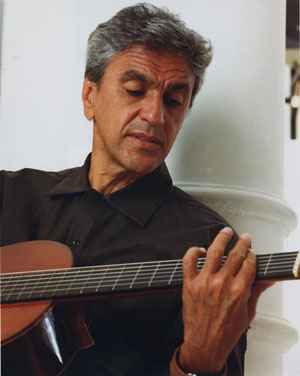 Caetano Veloso Source: Hostel Colonial |
|
|
Born in 1936 in Irara, Bahia, Brazilian guitarist and singer,
Tom Ze, was involved in the Tropicalismo
movement
[1,
2,
3,
4,
5,
6,
7] in the sixties with such as
Nara Leão and the band, Os Mutantes. Tropicalismo
emerged upon the coup d'état of 1964 resulting in the ouster of President
João Goulart and the installment of Pascoal Ranieri Mazzilli. The Tropicalismo movement was countercultural insofar as
culture was now defined by the regime which had an appetite for bossa nova. Tropicalismo was
thus a rather paradoxical defense of Brazilian culture, including bossa
nova, via the
invitation of foreign influences such as Afro, rock, the avant-garde,
aught but the regime's bossa nova. Tropicalismo was something of the Ka to MPB's Boom. MPB is
short for Brazilian Popular Music, though popular music in the United States
wasn't political as a whole, Tropicalismo in Brazil was comparable to the
folk music of the youth movement in the United States w such as flower
children vsrsus the presence of the US military in Vietnam. Popular music in Brazil is
much the resumption of where Tropicalismo left
off, that is, a democratic movement. It was a wrestle of twenty years
between all forces involved until the regime acquiesced in '85 with the
election of President Tancredo Neves. As for Ze, not only was he a
self-taught guitarist, but he liked to experiment with sounds made by such
as blenders, doorbells, vacuum cleaners, etc.. He first met
Caetano Veloso, instrumental
to Tropicalismo, in 1963. He began his career in theatre in 1964. His
appearance in 'Arena Conta Bahia' led to a contract with RCA Records, he
releasing 'Maria do Colegio da Bahia' in 1965. In May 1968 he participated in
the recording of 'Tropicália: ou Panis et Circencis' [*] with other figures
central to Tropicalismo, that album a manifesto of the movement with a cover
something imitating the cover of the
Beatles' 1967 'Sgt. Pepper's Lonely Hearts
Club Band'. He also distinguished himself with the release of his album,
'Grande Liquidação' (also issued as 'Tom Ze'), in
1968. Ze was one of the Tropicalismo musicians who remained in Brazil when
others like
Veloso and
Gilberto Gil went into exile in
1969. He began teaching in Sao Paulo in 1971, then released an album in '72
that he had recorded in 1965, simply titled 'Tom Ze' like previous others.
He released a few more albums to 'Correio Da Estação Do Brás' in 1978, the
year before political amnesty was granted to exiles from Brazil in August of
1979. Entering into a drift for some years, Ze bounced from day job to day
job
before arriving to 'Nave Maria' [*]
in 1984. In 1986 Scottish
musician, Daviid Byrne, amazing lead for the Talking Heads, bought one of
Ze's records
('Estudando o Samba' '76 *) in a shop in Rio de Janeiro. That led to Ze being
contacted from out of the blue by Byrne in 1989. 'The Best of Tom Zé –
Massive Hits' was released in 1990 on Byrne's Luaka label (one of several)
as Volume 4 of his 'Brazil Classics' series. That was followed by 'The Hips
of Tradition' in '92 as Volume 5 of 'Brazil Classics'. Come electronica in
'98 and '99 on 'Postmodern Platos Remixes' [*]
and 'Postmodern Platos' [*]. Ze's career has since
been a nonstop adventure in the more avant-garde wing of MPB, such as his
2005 operetta, 'Estudando o Pagode' ('Studying Pagode') [1,
2,
3,
4], addressing pagode
[1,
2,
3],
a samba style emerging in Rio de Janeiro in the latter seventies. Ze didn't
tour in the United States until 2010, taking the quintet, Tortoise, with
him [*].
They issued 'The Letter' and 'Defect 3: Politicar' that year on Luaka Bop 6
80899 4509-1-1. Ze
addressed bossa nova on his 2008 release of 'Estudando a Bossa - Nordeste
Plaza'. He issued 'Vira Lata na Via Láctea' [*] in 2014
followed by 'Canções Eróticas de Ninar' in 2016 and 'Sem Você Não A' in
2017. References: 1,
2,
3.
Discos: 1,
2,
3,
4,
5,
6.
Compositions.
Lyrics.
Reviews.
Documentaries: 'Fabricando' directed by Décio Matos Jr. in 2007.
IA.
Further reading: Anna Bahania;
BAM (Brooklyn Academy of Music);
Christopher Dunn: 1,
2;
New York Times: Jon Pareles: 1999,
2017;
various;
Mike Powell;
RBMA (Red Bull Musical Academy);
Jeff Stark;
K. Leander Williams.
Other profiles: *.
Ze is the composer of the vast majority of his oeuvre represented below. Tom Zé 1967 Composition: Tom Ze Album: 'Tropicália: ou Panis et Circencis' Tom Zé 1968 Grande Liquidação (Grand Sale) Tom Zé 1970 Tom Zé 1972 Reissue 1983: Tom Zé 1973 Tom Zé 1976 Tom Zé 1978 Tom Zé 1990 Filmed live Tom Zé 1992 Tom Zé 2003 Album Compositions: Tom Ze/Miguel Wisnik Tom Zé 2005 Composition: Tom Ze Album: 'Estudando o Pagode' Tom Zé 2012 Tom Zé 2014 Tom Zé 2017 Filmed concert
|
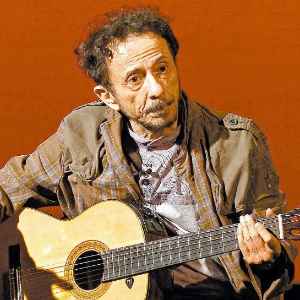 Tom Ze Source: UOL Musica |
|
|
Born in 1944 in Rio de Janeiro, Brazil, guitarist and singer,
Chico Buarque, was son of the
writer, Sérgio Buarque de Holanda, thus lived in various locations during
his youth, including São Paulo and Italy. He wrote his first short story at
age eighteen, then studied architecture at the University of São Paulo. His
greater interest, however, was making music, his debut public performance in
1964, his own composition. That led to gigs at festivals and on television.
It was the recording of a few of his compositions by
Nara Leão that his name
began coming to notice. His debut vinyl was a collection of sambas on the
album, 'Chico Buarque de Hollanda', in 1966. 'Morte e Vida Severina'
followed the same year. In 1968 his composition, 'Roda Viva' ('Live Circle')
gained him a brief time in prison from the Brazilian military government
(1964-85). Upon release he sojourned to Italy in 1970, returning in 1972 to write
his first novel published in 1974, 'Fazenda Modelo'. He also contributed
titles to the play, 'Ópera do Malandro', in 1974. Buarque's 1970 composition, 'Apesar de Você' ('In spite
of You'), eventually got his work banned from record shelves upon it
becoming a theme song for the democratic movement in Brazil. Buargue's
response was to go to work as Julinho da Adelaide, recording 'Acorda Amor'
in 1974 as such. Buarque concerned himself with political protest until the
Brazilian military regime came to its end in 1985. Along the way he composed
all the titles on
Leão's 'Com Acurar, Com
Afeto' issued in 1980. He performed at the Montreux Jazz Festival in
Switzerland on July 4 of 1986 [Lord], 'Gota d'Agua' to see later issue in
1998 on the album by various, 'Live
in Montreux' (ACT 9001-2). Tom Lord has Buarque in the United States in
1992 alongside other big names like
Gilberto Gil,
Dorival Caymmi and
Edu Lobo to perform on
Toots Thielemans' 'The
Brazil Project' [*]
recorded in Los Angeles, NYC and Rio de Janeiro. Leading or co-leading 39
albums throughout the years per Discogs, into the new millennium Buarque released 'Chico' in 2011
[1,
2]. Titles that
Buarque composed for film, television and documentaries are a regular Tumbler list at IMDb. Of works in prose, his fourth novel, 'Spilt Milk [1,
2],
was published in 2012. 'My German Brother'
saw print as recently as 2018. Having issued some 13 DVDs, his latest as of this writing was 'Caravanas au Vivo'
in 2018, also on CD.
References: 1,
2.
Buarque website.
Facebook.
Discos: 1,
2,
3,
4,
5,
6.
Compositions.
Books by Buarque: 1,
2,
3.
Reviews.
Interviews: Luiz Roberto Oliveira 1996 or '97: 1,
2,
3,
4.
IA.
Further reading:
Caio Camargo,
Tamara Davison,
Marten de Haan,
Jemima Hunt.
Biblio: 'Brazilian National Identity in the Lyrics of Chico Buarque' by
Rubini de Carvalho Lean (University of Otago 2012) *.
Other profiles: *.
Per below, highlighted albums point to composers. Chico Buarque 1966 Album All comps by Buarque Chico Buarque 1970 'This Girl Is Different' Composition: Buarque Chico Buarque 1971 Chico Buarque 1973 Album All compositions: Buarque/Ruy Guerra Julinho da Adelaide 1974 Composition: Julinho de Adelaide/Leonel Paiva Chico Buarque 1976 Chico Buarque 1982 Album Most compositions: Buarque/Daniel Viglietti Chico Buarque 1985 Music video Composition: Buarque/Francis Hime Chico Buarque 1987 Composition: Buarque Album: 'Francisco' Chico Buarque 1999 Filmed live Composition: Buarque Chico Buarque 2012 Filmed live Composition: Buarque/Edu Lobo Chico Buarque 2018
|
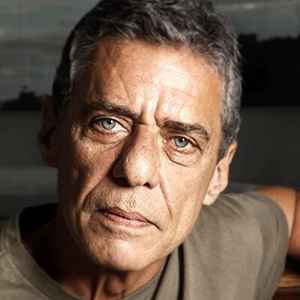 Chico Buarque Source: UOL Musica |
|
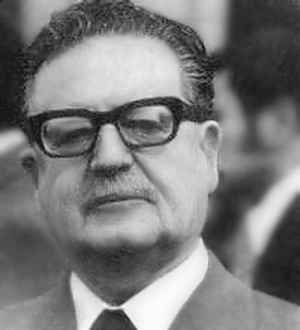 President Salvador Allende Source: Wikipedia 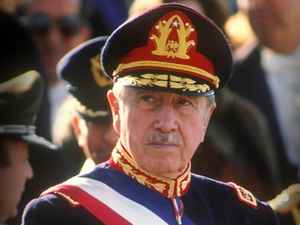 General Augusto Pinochet Source: History |
Born in 1932 in Lonquén, Chile, folk musician,
Víctor Jara, punctuates rather
unfortunately the struggle between military power and musical power that was
so much the scenario of Latin recording in the 20th century from Franco in
Spain to Castro in Cuba to the numerous cartels and juntas in Central and
South America. Across the Atlantic the same wrestle was occurring between
African authorities and African rhythms. Jara's father had been a farmer
having a desperate time of it, disappearing in quest of an income when Jara
was a child. Upon his mother's death at age fifteen he studied accounting,
then attended seminary for a couple years. That inspired requisite
perspective otherwise, in Jara's case, several years in Chile's army. In
that capacity he developed an interest in folk music and theatre. Leaving
military service, he was singing with the group, Cuncumen, in the mid
fifties which yet performs to this day [*]. His association with the Parra family of musicians began with
guitarist/singer, Angel Parra (brother to
Isabel, son of Violeta), who
owned a folk club in Santiago called La Peña de Los Parra (The Rock of
Parra). The Parra family of
musicians and other notables were numerous, but it is Violeta, a singer and guitarist whose work
documenting the folk songs of Chile in the sixties saw the emergence of the nueva cancion genre, a folk movement which didn't last a decade upon
interruption by the military coup of 11 September 1973 that put Chile in control of
General Augusto Pinochet's regime [1,
2,
3,
4]. Jara had been working in theatre when he
released his first name album, 'Víctor Jara (Geografía)' for the RCA
imprint, Demon, in 1966. 'Canto a lo Humano' was its reissue. That album
included 'Paloma Quiero Contarte', but not 'La Beata', the A side to 'Paloma
Quiero Contarte' that got banned from radio and pulled from record shelves
for inappropriate lyrics concerning Catholic confession. Jara had toured
Cuba and Russia, and become a Communist by the time he took a beating from
government thugs for 'Preguntas por Puerto Montt' ('Questions About Puerto
Montt'), concerning an attack by police on squatters in Puerto Montt that
year. That song appears on the 1969 album, 'Pongo en Tus Manos Abiertas'. Chile yet under the six-year presidency of Eduardo Frei Montalva, that
would change to socialist, Salvador Allende, in November 1970. Allende
wasn't popular to US interests, the
Pinochet regime taking office by coup in September of '73. Jara, a member of
the Popular Unity Party, was teaching at State Technical University (UTE,
founded 1947) in Santiago when Allende took office with Jara's public
support. Three years later Allende would shoot himself in the head on
September 11, during the coup, with an AK-47 given him by Fidel Castro. The
next day Jara was at UTE when he was arrested with about five thousand
others at the university and throughout Santiago. He was beaten severely and
on the 15th taken to National Stadium (Estadio Nacional) where his hands broken before being told
to play guitar and sing. He is said to have sang 'Vencerermos' (below), a
tune he'd done a second version of for the Allende campaign in 1970. He was
then tortured with a game of Russian Roulette at the back of his head until
the chamber with the bullet fired. There was sufficient respect, however, to
ensure he was dead with above forty more bullets to his fresh corpse. Jara's wife, Joan, retrieved his body
from a lot near a cemetery where it had been dumped, had him buried, then
went into exile. Forty-two years later (2015) ten former soldiers were
charged with involvement in his murder. The case against Lt. Pedro Barrientos Nunez [1,
2,
3,
4], who (allegedly) amused himself with Russian Roullette at
the back of Jara's head before some time moving to Florida, is scheduled for
trial in the summer of 2016. The Pinochet regime held power until 1990,
during which time it is estimated some 40,000 undesirables were jailed and
above 3000 offed in delightfully entertaining ways. It was, however, deemed
safe for the return of musicians in exile, such as the
Inti-Illimani and
Quilapayún, upon the plebiscite of
October 1988, voting Pinochet out (transition between governments requiring
a year and five months). Incidentally, National Stadium, one of 80 detention
centers in Santiago during the '73 coup, isn't to be confused with the
Victor Jara Stadium in Santiago, so renamed in 2004 from Chile Stadium (Estadio
Chile) and an entirely different arena. Jara was building the album, 'Tiempos
Nuevos' ('New Times'), when he was arrested and killed. It was released
incomplete posthumously in 1974 as 'Tiempos que Cambian' ('Changing Times').
Joining Jara on that were the
Inti-Illimani and
Patricio Castillo (Quilapayún).
Also issued in 1974 was the compilation of sessions from 1968 to 1973 titled
'Manifiesto: Chile September 1973' on XTRA 1143 [1,
2,
3].
References: 1,
2,
3,
4,
5; murder:
1,
2,
3,
4,
5.
Catalogs: 1,
2,
3,
4,
5,
6.
Compositions.
Tablature.
MP3.
Archives: 1,
2.
Discussion.
Further reading:
Gregg Chadwick,
Amy Cunningham,
Jenny Farrell,
Edith Moody,
Sergio Reyes website;
Patricio Zamorano. Biblio: 'Victor: An Unfinished Song' by Joan Jara
(Victor's widow);
'Our Man in Chile' by Yuliya Minkova.
See also the Victor Jara
Foundation. Víctor Jara 1966 Composition: Traditional polka From 'Victor Jara'See note below Note: 'The above is 2001 reissue of 'Victor Jara', Jara's original debut LP containing only 12 tracks to 'Jai Jai'. Additional tracks begin w 'La Beata' through 17. Víctor Jara 1969 LP: 'Pongo en Tus Manos Abiertas' Víctor Jara 1970 ('We Shall Triumph') Music: Sergio Ortega Lyrics: Claudio Iturra Lyrics altered by Jara Note: 'Venceremos' was composed for the 1970 election campaign of Salvador Allende. Víctor Jara 1971 Víctor Jara 1972 LP: 'PLa Población' Víctor Jara 1973 Final concert Lima, Peru 17 July 1973 Panamericana Televisión Víctor Jara 1974
|
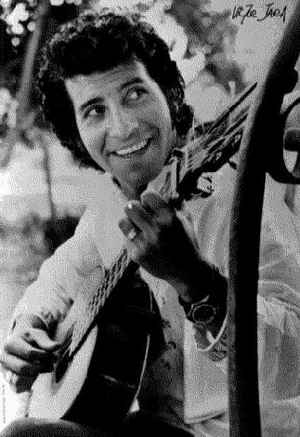 Victor Jara Source: Rauman 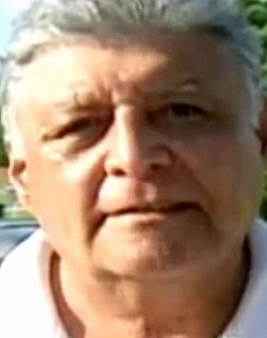 Pedro Barrientos Nuñez Source: Daily Mail |
 Quilapayun 1966 Source: Music Bazaar |
Formed in 1966 in Santiago, Chile,
Quilapayún was a folk group which name
means "Three Bearded Men" consisting of Eduardo Carrasco [1,
2] and Julio Carrasco
with Julio Nehumhauser until Patricio Castillo showed up in 1966. Though
with beard, the group retained its name. They gave their first performance
of Andean folk music was at the Universidad de Chile in Valparaíso. Their
first recording is thought to have been 'El Pueblo', found on their 1966
debut album, 'Quilapayun' [*]. In 1966 they released 'Canciones folklóricas de
América' [*] with Chilean martyr,
Víctor Jara, before touring to
Russia and Europe. Julio Nehumhauser left the group prior to Quilapayun's
first political album issued in 1968: 'X Vietnam' [*], that containing Juan
Capra's 'Canción Fúnebre para el Che Guevara'. 'Basta',
also a political album, was issued in '69 [*]. The group appeared again with
Jara on his '69 release of 'Pongo
en Tus Manos Abiertas' [*]. Juilo Carrasco would drop away after its recording,
replaced by Herman Gomez. Like the
Inti-Illimani, Quilapayun went into exile
upon the Chilean coup d'état in September of 1973. Prior to that, Quilapayun
had recorded 'El Pueblo Unido Jamás Será Vencido' [*] in June, that issued in
exile in 1975 on the album by the same title
('The United People Will Never Be Defeated') also containing Carrasco's 'Elegía
al Che Guevara'. Quilapayun based its
operations out of Colombes, France, until the end of Augusto Pinochet's
regime, he stepping down in March of 1990, though Quilapayun returned in
'88. Quilapayun recorded the album, 'En Chile!', for release in 1989, at which juncture Eduardo Carrasco left the group or, rather, it left
him, returning to band member commitments in France. Carrasco remained in
Chile to pursue his career as an intellectual, composing, recording numerous
albums, writing books,
teaching philosophy at the University of Chile and holding a couple
positions as musical director for the Sociedad Chilena del Derecho de Author
(Chilean Society of the Right of Author) and the Chilean Ministry of
Education. Quilapayun meanwhile continued in France as before, excepting
that Rodolfo Parada Lillo [1,
2] assumed Carrasco's place as director and lead
composer. Parada had performed with Quilapayun since 1968 and appeared on
the group's 1970 album, 'Santa María de Iquique'. Parada earned a doctorate
in anthropology in France during the nineties and was employed by its
Ministry of Culture. As he was also Quilapayun's leader, he also registered
Quilapayun in his name, apparently without consulting its original members. The result was the erasure of the names of the
historical members of Quilapayun, replaced with the names of musicians not
so committed to the group. Its major talent, Patricio Wang [1,
2,
3],
didn't join Quilapayun until 1981. Carrasco, not having contributed to Quilapayun since
the '88 album, but an original member in more precarious times, then formed the Quilapayun Historico in Chile
in 2003. A legal decision as of December 2007 forbade Parada from using
the Quilapayun name, the French Supreme Court reasoning that Quilapayun was
and remains a Chilean, not French, group. Parada's ensembles have since then
come to be registered as Guillatún
[1,
2,
3,
4,
5]. Be as may, both groups are yet active as
of this writing, Carrasco's in Chile, Parada's in France. Between the both
of them, largely the Parada-Wang party in France, the Quilapayún have released above 40 albums.
Into the new millennium the Parada-Wang Quilapayún released 'A Palau'
recorded live on 29 January 2003 at the Palau de la Música in Barcelona [*].
Upon Carrasco's resurrection of the Chilean Quilapayun they recorded 'El Reencuentro' ('The Reunion') in September of 2003
[*]. Despite a
degree of
factious rivalry between the Chilean Quilapayun and the Parada-Wang outfit,
no longer using the name except in reference to a long past, Parada and Wang
have toured to Chile on multiple occasions
[1,
2].
In 2012 they released 'Absolutamente Quilapayún' [*].
Carrasco's Quilapayun issued 'Quilapayún Sinfonico' as recently as 2018 [1,
2],
recorded the previous year. References:
1,
2,
3,
4,
Carrasco,
Parada,
Wang.
Members current;
past.
Discos: 1,
2,
3,
4,
5,
6.
Radio & television:
1,
2.
Composers.
Lyrics.
Facebook.
Twitter.
Archives.
Biblio: 'Quilapayún: La
Revolución y las Estrellas' by Eduardo Carrasco (Las Ediciones del
Ornitorrinco 1988). Quilapayún 1966 Quilapayún 1969 Quilapayún 1970 Quilapayún 1973 Quilapayún 1974 Documentary with Isabel Parra Note: La Nueva Canción Chilena' (my title), is a documentary concerning New Chilean Song and the climate of the Chilean junta. New Chilean Song was a genre with its origins in the sixties much commencing with the endeavors of guitarist and singer, Violeta Parra (mother of Isabel Parra), to establish a national identity for Chile via the collection of folk songs, proverbs, recipes and traditions of the Chilean people. Such as Quilapayun represent that genre until its interruption per the military coup of 24 August 1973. Quilapayún 1975 Quilapayún 1989 Music: Quilapayun Text: Nicolas Guillen Album: 'En Chile!' Quilapayún Historico 2003 Filmed concert Teatro Teleton Quilapayún Guillatún 2010 Filmed live with Sol Dominguez Composition: Victor Jara Quilapayún Guillatún 2012 Filmed live Composition: Violeta Parra Quilapayún Guillatún 2014 Filmed concert Quilapayún Historico 2018 With the OS Estudiantil Metropolitana Composition: Patricio Manns/Eduardo Carrasco Recorded 2017 Municipal Theater of Santiagot
|
|
 Toquinho Photo: Luiz Tripolli Source: Studiomusica |
Born Antônio Pecci Filho in 1946 in São Paulo,
Toquinho studied classical guitar as a
teenager before joining the bossa nova movement in Brazil. He had also
studied harmony and orchestration. His early professional career included
gigs at the Paramount Theater in São Paulo which were broadcast over radio
by DJ, Walter Silva. In 1965 Toquinho recorded 'Lua Cheia', thought to have
been released the next year. Toquinho also released his debut LP in 1966, 'A Bossa Do Toquinho' [*],
reissued as 'O Violão de Toquinho' [*] in 1968.
Toquino was living in Italy w Chico Buarque when a
tour to Italy by
Vinicius de Moraes
resulted in instrumental contributions to several titles on
Moraes's 'La vita, amico,
è l'arte dell'incontro' [*].
That launched a partnership in the seventies resulting in about 25
albums through some thousand performances together. Among those was 'Vinícius
& Toquinho' [*]
in 1974 full of co-written titles.
Moraes' death in 1980
meant a solo career for Toquinho, also pairing with various Brazilian
vocalists.
In 1982 he visited Switzerland toward the album, 'Ao Vivo Em Montreux' [*].
His first tour to Japan was in 1986 where he performed w saxophonist, Sadao
Watanabe. In 1988 Watanabe visited Rio where Toquino contributed
to 'Made in Coracao' and 'O Que Passou Passou' on Watanabe's album, 'Elis'
(Elektra 60816-1). They also squared away their joint album, 'Made in Coração' [*],
released that year loaded w co-authored titles. A compilation of
instrumental performances was issued in 1990 called 'Instrumental' [*]
followed by his album, 'O Viajante do Sonho' in 1992. Among Toquinho's numerous
trips to Italy included such as the Umbria Jazz Fest in Milan in 1995 w
Gilberto Gil. Touring in
the latter nineties included Spain and Portugal. Discogs has Toquino
commencing the new millennium w the 2000 release of the live album, '30 Anni
di Successi' (BMG) [*]. Toquinho released his jazz-oriented 'Acoustic' (Kind of Blue label) [*]
in 2006. Discogs has Toquinho
leading or co-leading 60 albums to as late as '50 Anos de Carreira' [*]
gone down live at the WTC Theater in São Paulo in March 2016. He joined Eliane Elias on their composition, 'Not to Cry' ('Pra Não
Chorar'), in 2017 included on Elias's 'Dance of Time' that year. Toquino yet
tours as of this writing with a strong fan base in Italy. References:
Circuito Musical;
Toquinho biography (see Biografia & Atualidades); Wikipedia:
1,
2.
Discos: 1,
2,
3,
4,
5,
6; Toquinho website:
albums,
alpha,
children.
Compositions.
IMDb.
Archives: 1,
2. Toquinho 1966 Composition: Toquinho/Chico Buarque Toquinho 1970 With Jorge Ben Jor Composition: Toquinho/Jorge Ben Toquinho 1975 Album with Vinícius de Moraes Toquinho 1977 Album with Vinícius de Moraes Toquinho 1978 Filmed live With Tom Jobim & Vinicius de Moraes RTSI (Radio Television Swiss Italian) Toquinho 1979 With Maria Creusa & Vinícius de Moraes Toquinho 1983 1983 video issued on DVD 2006 Toquinho 2006 Album: 'Mosaico' Toquinho 2012 Filmed live
|
|
|
Airto Moreira See
Airto Moreira. |
||
|
The Mutants, that is,
Os Mutantes, were a group which existed
only briefly, yet were important in Latin recording due their central
significance within Brazil's Tropicalia movement [1,
2,
3,
4,
5,
6]. In resistance to the
military junta that took power in '64, the interest of Tropicalia was to
bring an invasion of foreign influences to Brazil, helping to hamper the
military regime (1964-85) in the establishment of its own culture. Unlike
popular music in the United States, which was simply popular or lacking
another genre in which to place something, Brazilian Popular Music (MPB) had
been a democratic political movement belly to belly against the regime. They
were capitalistic interests which kept the junta in power, held in check by
global opinion as MPB peacefully resisted through the years. What politics
couldn't do the entertainment industry (record companies, etc.) would
accomplish as capitalistic interests changed. But that wasn't until several
years after Os Mutantes had dissolved. The Mutants' especial brew of foreign
chemistry to inject into the greater climate of bossa nova was psychedelic
rock, the influence of the invasion band of all invasion bands, the
Beatles, also evident. The core members of
the group (which personnel often changed) were Arnaldo Dias Baptista
[guitar 1,
2,
3,
4,
5] and Sergio Dias Baptista
[guitar 1,
2,
3,
4]
and Rita Lee [flute/vocal 1,
2,
3,
4,
5] that
trio complete and called Os Mutantes per 1966. The group's first performance
was a television broadcast. Os Mutantes recorded their first album, 'Os
Mutantes' [*], in
Dec '67 and Jan '68. In May of '68 they contributed 'Panis et Circencis'
('Bread and Circuses') to the Tropicalismo manifesto, 'Tropicalia, ou Panis et Circenses' [*],
that composed by
Gilberto Gil and
Caetano Veloso. Their
second studio album, 'Mutantes' [*],
went down in Dec of '68, their third, 'A Divina Comédia' [1,
2],
in Oct of '69, the latter containing 'Ando Meio Desligado' [*].
Tapes recorded in Paris in Nov 1970 were lost, not found until years later
by biographer, Carlos Calado, upon which 'Technicolor' [1,
2]
saw issue in 2000. Rita Lee pulled out of the group by 1973, Arnaldo by '74, each
pursuing independent careers. The Mutants' final studio issue was 'Tudo Foi
Feito Pelo Sol' in 1974. A live album was released in 1976. In 1978 Sergio
dissolved the band. Os Mutantes reunited in London in 2006 minus Lee,
replaced by Zélia Duncan [1,
2]. That was recorded and released the same year: 'Mutantes
Live - Barbican Theater, London 2006' [*]. Come 'Haih...
Or Amortecedor...' [1,
2,
3,
4] in 2009, 'Fool Metal Jack'
[*] in 2013
and 'Mande Um Abraço Pra
Velha' [*]
in 2014. Os Mutantes consisted of Arnaldo Baptista, Rita Lee and new member,
Esmeria Bulgari for a tour to Chicago, Philadelphia and NYC in Feb of 2017 [*].
Setlist has the Mutants back in the US in Washington DC in July of 2018
after touching down in Mexico City earlier that month. As of Nov 2018 Os
Mutantes consisted of Sérgio Dias, Henrique Peters (keyboards), and Vinicius
Junqueira (bass), Claudio Tchernev (drums) and Esméria Bulgari (percussion)
[*]. References:
1,
2,
3,
4,
5.
Discos: 1,
2,
3,
4,
5,
6,
7,
8.
IMDb.
Compilations: 'Everything Is Possible: The Best of Os Mutantes' 1968-71 by
Luaka Bop 1999:
1,
2,
3.
IA.
Reviews.
Facebook.
Interviews years estimated:
Sergio Diaz 1991,
2000,
2009;
Rita Lee 1997/98.
Further reading: Thane Tierney.
Biblio: 'A divina comédia dos Mutantes' by Carlos Calado (Editora 34 1995). Os Mutantes 1967 Television broadcast with Gilberto Gil Os Mutantes 1968 Os Mutantes 1969 Filmed live Composition: Gilberto Gil/Caetano Veloso Gal Costa/Os Mutantes ('Bread & Circuses') Filmed live Composition: Toquinho/Jorge Ben Composition: Gilberto Gil/Caetano Veloso Os Mutantes 1970 Os Mutantes 1971 Os Mutantes 1974 Os Mutantes 2013 Composition: Sérgio Dias/Vinícius Junqueira Album: 'Fool Metal Jacket'
|
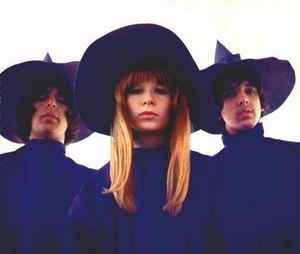 Os Mutantes 1970 Source: Rita Lee Rainha Mae |
|
|
The
Inti-Illimani (Sun Mountain) were (are) a folk group
formed at the Universidad Técnica del Estado in Santiago, Chile. In 1966 UTE
began holding concerts in its underground casino, the China. Student,
Horacio Duran, organized those performances each Saturday night. in 1967
Duran formed a group with Jorge Coulon, Max Berrú and Pedro Yanez. Needing a
name to give a concert in August that year with Chilean guitarist, Eulogio
Dávalos Llanos, Dávalos suggested the name of a mountain near La Paz,
Bolivia, Inti-Illimani, meaning "Sun of the Illimani". The group grew to
seven members in 1967 but got pared down to five in '68 with the addition of
two new members, now to consist of Max Berrú (bass), Ernesto Perez de Arce (flute), Jorge
Coulon (guitar), Horacio Durán (churango [small guitar traditionally made
with an armadillo shell]) and
composer/director, Horacio Salinas (guitar). Homero Altamiranos (flute) was
also in the group when it recorded its first album, 'Si Somos Americanos'
('If We Are Americans'), in 1969 in La Paz, Bolivia. The group would grow to
eight members, remaining steady until the nineties. 'A la Revolución
Mexicana' [*] in 1969 was followed by 'Inti-Illimani' [*]
the same year on which they taped Carlos Puebla's 'Carta al Che' dedicated
to Ernesto Che Guevara. The group issued another album titled 'Inti-Illimani'
in 1970 [*]
before their fifth that year as well, 'Canto al programa' [*].
A few albums followed until things changed upon
the military coup in Chile in September 1973, putting Augusto Pinochet in
charge of the junta. Feeling less than secure (see
Víctor Jara), the whole group went into
exile (alike
Quilapayún) in Rome. They then became the group to publicize Chile's
antidemocratic situation to the rest of the world. Their first album
recorded in Italy was 'Viva Chile!' [*]
released in '73. They spent the next fifteen years as a Chilean band
centered in Italy. Though the junta presided
until March of 1990 upon the resignation of Pinochet, the Inti-Illimani returned to Chile in September of
1988, arriving on the 18th to give an informal concert that very date. In
June of 2004 the Inti-Histórico [*]
was formed by Horacio Durán w José Seves, Jorge Ball, Camilo Salinas and
Fernando Júlio, giving their first performance in August in Valparaiso. That
led to the official separation [1,
2,
3]
of the Inti-Illimani into two groups in 2005, the Inti-Histórico and Inti-Illimani
Nuevo with Jorge Coulon in charge of the latter having rights to the
Inti-Illimani name (Inti-Historico not). The Inti-Histórico recorded in
Havana in 2010. They issued the DVD, 'Eva Ayllón + Inti-Illimani Histórico'
[*],
in 2012. The Inti-Illimani released their 37th studio album, 'The Singing of
All' [*] in 2017, their latest as of this writing filled with compositions
by
Violeta Parra. Original
member, Max Berrú, died on 1 May of 2018 of bone marrow cancer
[*]. As this
is written the Inti-Illimani is preparing for a December 2019 tour as Manuel
Meriño (musical director), César Jara, Daniel Cantillana, Efrén Viera,
Christian González, Camilo Lema, Marcelo Coulon and Jorge Coulon.
References: 1,
2,
3,
4,
5.
Members: 1,
2,
3,
4,
5.
Discos: 1,
2,
3,
4,
5,
6.
Concert chronologies: 1,
2.
Interviews: Jorge Coulon 1999,
Horacio Salinas 2015. Further reading:
Don Heckman.
Archives: IA; New York Times:
1978,
1983.
Other profiles: 1,
2. The Inti-Illimani 1969 The Inti-Illimani 1973 The Inti-Illimani 1975 ('Canto de Pueblos Andinos Vol 1') Filmed live The Inti-Illimani 1977 The Inti-Illimani 1979 Composition: Horacio Salinas José Seves Patricio Manns Album: 'Canción para Matar una Culebra' The Inti-Illimani 1982 Album: 'Flight of the Condor' The Inti-Illimani 1986 The Inti-Illimani 1987 With Paco Pena & John Williams The Inti-Illimani 1994 Filmed live Composition: Roberto de Simone Filmed live Composition: Italian traditional See the tarantella folk dance The Inti-Illimani 1996 'I Will Risk My Skin' The Inti-Illimani 2012 Filmed live with Quilapayun The Inti-Illimani Histórico 2006 Filmed live The Inti-Illimani Histórico 2012 Filmed concert The Inti-Illimani Histórico 2013 Filmed live with Eva Ayllón The Inti-Illimani New 2014 Filmed concert The Inti-Illimani Histórico 2015 Filmed concert
|
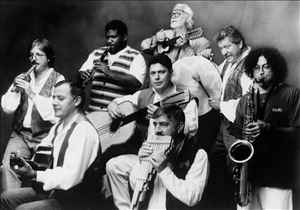 The Inti-Illimani Photo: Stephen Homer Source: MTV |
|
|
|
We suspend this history of Latin recording in South America with the Chilean group, Inti-Illumini. |
|
Early Blues 2: Vocal - Other Instruments
Modern Blues 2: Vocal - Other Instruments
Romantic: Composers born 1770 to 1840
Modern: Composers born 1900 to 1950
Country
Early Jazz 1: Ragtime - Bands - Horn
Early Jazz 2: Ragtime - Other Instrumentation
Modern 4: Guitar - Other String
Modern 5: Percussion - Other Orchestration
Modern 7: Latin Jazz - Latin Recording
Modern 8: United States 1960 - 1970
Modern 9: International 1960 - 1970
Latin
Latin Recording 2: The Caribbean
Latin Recording 3: South America
Total War - Sixties American Rock
Classical - Romantic to Modern
Jazz Early - Ragtime - Swing Jazz
Jazz Modern - Percussion - Song - Other
Latin Recording - The Caribbean - South America
Art Internet Music Poetry Vaping
![]()
vfssmail (at) gmaill (dot) com